Jack Ross's Blog, page 10
May 13, 2022
Fen Country: Edmund Crispin
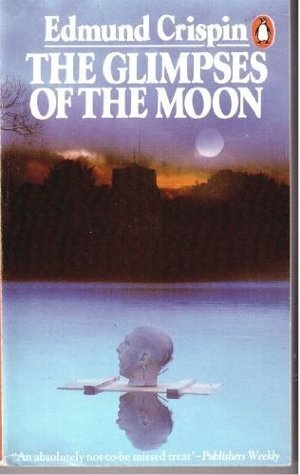 Edmund Crispin: The Glimpses of the Moon (1977)
Edmund Crispin: The Glimpses of the Moon (1977)"Under another name, he's a sort of male C. V. Wedgwood"
- The Glimpses of the Moon, pp. 74-75.
Between 1944 and 1955, promising young British composer Bruce Montgomery published eight detective novels and one collection of short stories under the pseudonym 'Edmund Crispin'. He also sold 38 stories to a variety of periodicals in Britain and the USA.
Most of these narratives featured the eccentric Academic Gervase Fen, Professor of English Language and Literature at the University of Oxford, as their presiding sleuth.
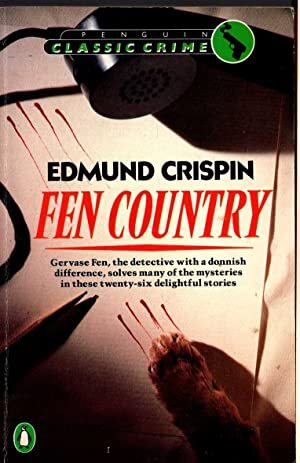 Edmund Crispin: Fen Country (1979)
Edmund Crispin: Fen Country (1979)After that there was a long silence until his final novel, The Glimpses of the Moon, appeared in 1977, the year before his death. It was followed by a further collection of short stories, Fen Country, which completed the canon.
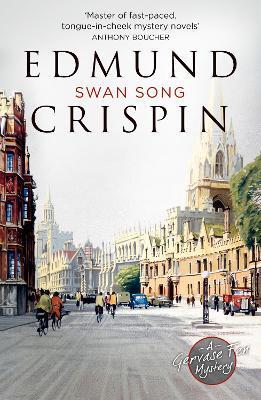 Edmund Crispin: Swan Song (1947)
Edmund Crispin: Swan Song (1947)'There goes C. S. Lewis,' said Fen suddenly. 'It must be Tuesday.'
'It is Tuesday.' Sir Richard struck a match and puffed doggedly at his pipe.
- Swan Song, p.60.
Why does he interest me so? Is it the minute portrait his books convey of an austerity Britain, first in the grip of wartime rationing, then of post-war shortages? Is it the constant barrage of in-jokes, comprehensible only to those familiar with such contemporary cultural icons as C. S. Lewis and C. V. Wedgwood? Or his ornate, orotund style of writing?
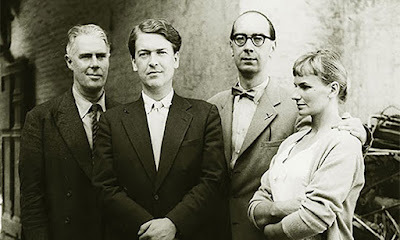 Anthony Powell, Kingsley Amis, Philip Larkin, Hilary Amis
Anthony Powell, Kingsley Amis, Philip Larkin, Hilary Amis"An undergrad left an essay for you. I've been reading it. It's called - Sally puckered up her attractive forehead - 'The influence of Sir Gawain on Arnold's Empedocles on Etna'."
"Good heavens," Fen groaned. "That must be Larkin: the most indefatigable searcher-out of pointless correspondences the world has ever known."
- The Moving Toyshop, pp.110-11.
As well as all that, there's the 'Movement' connection. He was up at Oxford at the same time as Kingsley Amis and Philip Larkin, and the pair were initially hugely impressed by his effortless cosmopolitan airs and (initial) success with publishers, only to become increasingly carping and bitchy about him and his work as their own social and literary prestige mounted into the stratosphere.
So, yes, there's a good deal of gossip about him and his ways to be gleaned from their respective memoirs and biographies and collections of letters. If you read that kind of thing, that is. Which I do (obviously).
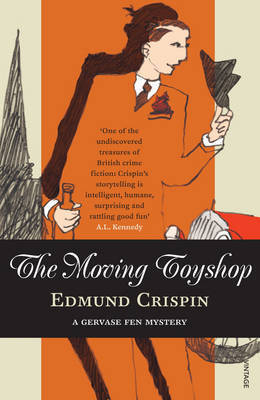 Edmund Crispin: The Moving Toyshop (1946)
Edmund Crispin: The Moving Toyshop (1946)She talked about murder as she might have talked about the weather - being far too selfish, thick-skinned and unimaginative to see the implications either of that final, irrevocable act or of her own position. - The Moving Toyshop, p.105.
One of things that interests me most about the Montgomery / Crispin books is Gervase Fen himself. Not that Fen is a well-developed character. On the contrary, as I read my way through the books as a teenager, I was struck by how well portrayed and accurately placed most of the other people are, and how bizarrely unfocussed is Fen. It's almost as if the more we hear about him, the less there he is. His age seems fixed around 40, regardless of what year it is, and his Academic position at Oxford remains essentially unchanged throughout.
I don't know if this was intentional or not. I've sometimes wondered if it's connected to Crispin's unusual focus on the consequences of crime. His victims are not the cardboard cut-outs of an Agatha Christie or even a Dorothy Sayers, but living, breathing people, whose brutal deaths leave a gap in the world. It's as if he can't quite bring himself ever to forget the morality of the spectacle he's creating, however frivolously it may be framed.
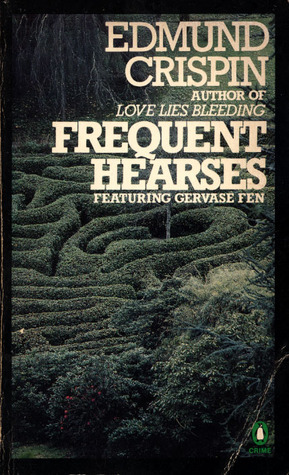 Edmund Crispin: Frequent Hearses (1950)
Edmund Crispin: Frequent Hearses (1950)Some of my taste for his work undoubtedly comes down to a similar taste in books. M. R. James is a persistent influence on Crispin throughout: most notably in the long description of the maze in Frequent Hearses, but also in the inset ghost story in his very first novel, The Case of the Gilded Fly, and the macabre goings-on in the cathedral in Holy Disorders.
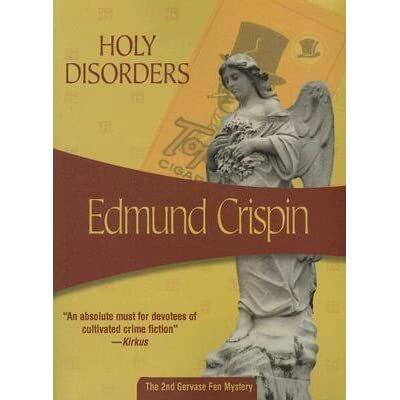 Edmund Crispin: Holy Disorders (1945)
Edmund Crispin: Holy Disorders (1945)He's also very well acquainted with the highway and byways of 17th and 18th century English poetry, which provide a good many of his titles - as well as most of the numerous epigraphs scattered through his pages.
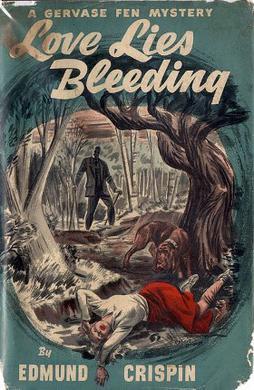 Edmund Crispin: Love Lies Bleeding (1948)
Edmund Crispin: Love Lies Bleeding (1948)In the last, longest and probably least focussed of his books, The Glimpses of the Moon, there's an illuminating aside by Fen, who's been forced by the insolvency of his publisher to abandon the book on modern British novelists he's been working on in a desultory manner throughout the whole narrative:
Fen pondered this; and the more he pondered it, the more he liked it. Some of the reading had been enjoyable, of course - The Doctor is Sick, I Want It Now, 'the Balkan trilogy', Elizabeth Bowen, The Ballad and the Source. But much more had not - and a great deal that was pending wasn't going to be either. [p.270]It's typical of Crispin that this passage will mean very little to anyone unfamiliar with the fiction of this period. I can't claim to have read all of the books on his list, but I have to say that this small selection seems to me very much on the money.
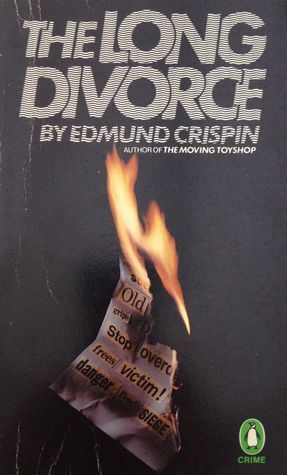 Edmund Crispin: The Long Divorce (1951)
Edmund Crispin: The Long Divorce (1951)Let's see then. In strictly alphabetical order, reference is being made to:
Amis, Kingsley. I Want It Now. 1968. London: Panther Books, 1969.Bowen, Elizabeth. The Collected Stories of Elizabeth Bowen. 1980. Introduction by Angus Wilson. Harmondsworth: Penguin, 1983.Burgess, Anthony. The Doctor is Sick. 1960. Harmondsworth: Penguin, 1979.Lehmann, Rosamond. The Ballad and the Source. London: Collins, 1944.Manning, Olivia. The Balkan Trilogy. Volume One: The Great Fortune / Volume Two: The Spoilt City / Volume Three: Friends and Heroes. 1960, 1962 & 1965. Harmondsworth: Penguin, 1982.They're not all obvious choices by any means. I haven't read the Lehmann book or much of Elizabeth Bowen beyond her short stories, but the others seem quite inspired to me.
The Doctor is Sick is one of four novels written by Anthony Burgess during his 1960 annus mirabilis, shortly after receiving a (later rescinded) sentence of death from his doctors. By far the most famous of these is A Clockwork Orange, but I'd already clocked The Doctor as by far the most entertaining of the bunch even before reading Crispin.
Kingsley Amis, too, is an author whom I've read both in bulk and in depth. I Want It Now is certainly not one of his most celebrated novels - no Lucky Jim or One Fat Englishman - but it is, again, quite exceptionally fun to read even in so impressive a line-up of hits.
As for The Balkan Trilogy, I've always been glad that this casual reference by Crispin inspired me to track it down and read it a number of times before it achieved temporary apotheosis as a TV miniseries with Kenneth Branagh and Emma Thompson. It is quite wonderfully moving and good, I think - far better than the follow-up, The Levant Trilogy. Nor did the TV adaptation really do it justice.
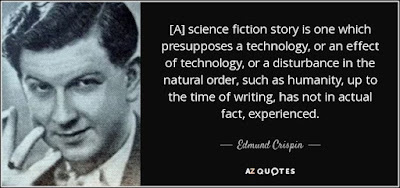 Alchetron: Edmund Crispin (1962)
Alchetron: Edmund Crispin (1962)I suppose that it shouldn't really come as a surprise that Crispin was so astute and pleasure-of-reading-focussed a critic. His distinguished series of anthologies of SF, crime, and horror stories did a great service to the dissemination of each of these forms on the UK literary scene, in particular. But they travelled as far as little ol' New Zealand, too.
As John Clute puts it in his magisterial Encyclopedia of Science Fiction :
Crispin's work in sf Anthologies was of great influence. When Best SF (1955) appeared it was unique in several ways: its editor was a respected literary figure; its publisher, Faber and Faber, was a prestigious one; and it made no apologies or excuses for presenting sf as a legitimate form of writing. Moreover, Crispin's selection of stories showed him to be thoroughly familiar with sf in both magazine and book form, and his introductions to this and succeeding volumes were informed and illuminating ... It would be difficult to exaggerate the importance of the early volumes in this series in working towards the establishment of sf in the UK as a respectable branch of literature.
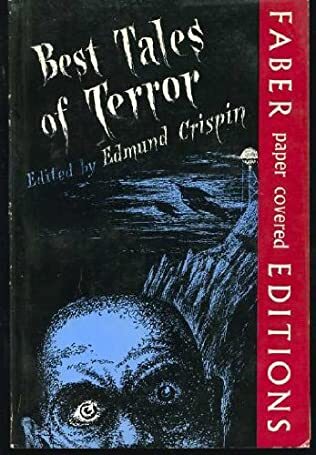 Edmund Crispin, ed.: Best Tales of Terror (1962)
Edmund Crispin, ed.: Best Tales of Terror (1962)All I can add is that it was in one of his Tales of Terror anthologies that I first encountered Elizabeth Jane Howard's classic ghost story 'Three Miles Up', and for that I remain eternally grateful.
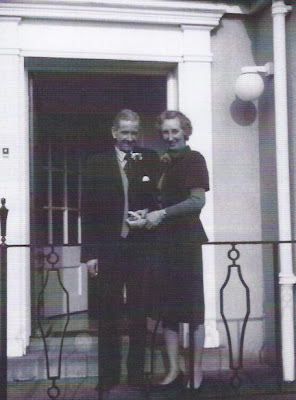 The Passing Tramp: Bruce & Ann Montgomery (1976)
The Passing Tramp: Bruce & Ann Montgomery (1976)•
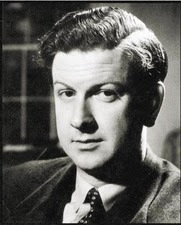 Edmund Crispin
Edmund CrispinRobert Bruce Montgomery
['Edmund Crispin']
(1921-1978)
Novels:
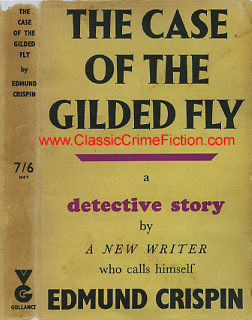 Edmund Crispin: The Case of the Gilded Fly (1944)
Edmund Crispin: The Case of the Gilded Fly (1944)The Case of the Gilded Fly [US title: Obsequies at Oxford] (1944)The Case of the Gilded Fly. 1944. London: Victor Gollancz Ltd., 1946.
The wartime production of a new play in Oxford is disrupted by the murder of one of the actresses. The novel includes a set-piece recounting of a ghost story by an old Don very much in the style of M. R. James.Holy Disorders (1945)Included in: The Second Gollancz Detective Omnibus: Whose Body?, by Dorothy L. Sayers / The Weight of the Evidence, by Michael Innes / Holy Disorders, by Edmund Crispin. 1923, 1943 & 1945. London: Victor Gollancz Ltd., 1952.
A series of sinister murders by Nazis in a cathedral town are counterpointed by an old ghost legend about an organ loft.The Moving Toyshop (1946)Included in: The Gollancz Detective Omnibus: The Moving Toyshop, by Edmund Crispin / Appleby’s End, by Michael Innes / Unnatural Death, by Dorothy L. Sayers. 1946, 1945 & 1927. London: Victor Gollancz Ltd., 1951.
A Chestertonian poet goes looking for adventure, but ends up being coshed over the head in a toyshop in Oxford.Swan Song [US title: Dead and Dumb] (1947)Swan Song. 1947. A Four Square Crime Book. London: The New English Library Limited, 1966.
A postwar production of Wagner's Die Meistersinger is plagued with problems - including the suicide (or is it murder?) of one of the principal singers.Love Lies Bleeding (1948)Love Lies Bleeding. 1948. Penguin Crime Fiction. Harmondsworth: Penguin, 1982.
An invitation to present prizes at a girl's school puts Fen on the trail of a Shakespearean discovery of epoch-making importance. Will Love's labours finally be won?Buried for Pleasure (1948)Buried for Pleasure. 1948. Penguin Books 1292. Harmondsworth: Penguin, 1958.
Fen stands for Parliament in a rural district. Halfway through the campaign he realises he doesn't want the job.Frequent Hearses [US title: Sudden Vengeance] (1950)Frequent Hearses. 1950. Penguin Crime Fiction. Harmondsworth: Penguin, 1982.
A loving tribute to the postwar British film industry - for which Bruce Montgomery composed so many scores - in the unlikely form of an abortive bio-pic about Alexander Pope.The Long Divorce [US title: A Noose for Her] (1951)The Long Divorce. 1952. Penguin Books 1304. Harmondsworth: Penguin, 1961.
Someone is sending poison-pen letters in the small village where Gervase Fen is temporarily domiciled. Could something so trivial have led to murder?The Glimpses of the Moon (1977)The Glimpses of the Moon. 1977. Harmondsworth: Penguin, 1981.
Fen is on sabbatical in a small Devon village plagued by a series of gruesome murders and dismemberments. A rich cast of characters are permitted to indulge their eccentricities to the utmost, until the actual murders become perhaps the least notable feature of the book.
Short Story Collections:
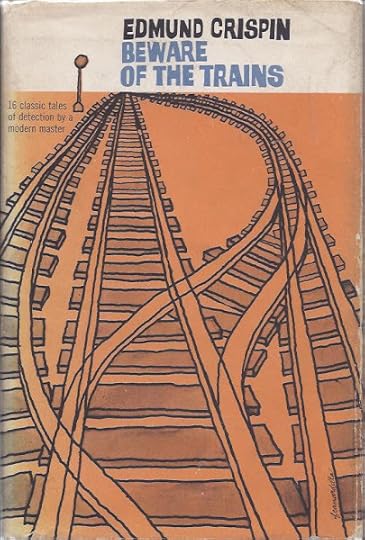 Edmund Crispin: Beware of the Trains (1953)
Edmund Crispin: Beware of the Trains (1953)Beware of the Trains (1953) [BT]Beware of the TrainsHumbleby AgonistesThe Drowning of Edgar FoleyLacrimae RerumWithin the GatesAbhorred ShearsThe Little RoomExpress DeliveryA Pot of PaintThe Quick Brown FoxBlack for a FuneralThe Name on the WindowThe Golden MeanOtherwhereThe Evidence for the CrownDeadlock Beware of the Trains. 1953. Penguin Classic Crime. Harmondsworth: Penguin, 1987. Fen Country (1979) [FC]Who Killed Baker?Death and Aunt FancyThe Hunchback CatThe Lion's ToothGladstone's CandlestickThe Man Who Lost His HeadThe Two SistersOutrage in StepneyA Country to SellA Case in CameraBlood SportThe PencilWindhover CottageThe House by the RiverAfter EvensongDeath Behind BarsWe Know You're Busy Writing, But We Thought You Wouldn't Mind If We Just Dropped in for a MinuteCash on DeliveryShot in the DarkThe Mischief DoneMerry-Go-RoundOccupational RiskDog in the Night-TimeMan OverboardThe Undraped TorsoWolf! Fen Country: Twenty-Six Stories. 1979. Penguin Crime Fiction. Harmondsworth: Penguin, 1981.
Edited:
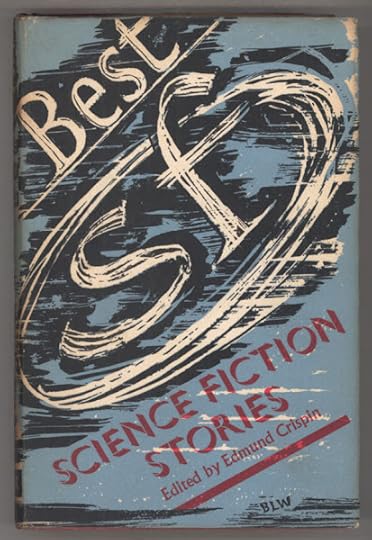 Edmund Crispin, ed.: Best SF: Science Fiction Stories (1955)
Edmund Crispin, ed.: Best SF: Science Fiction Stories (1955)Best SF (1954)Best SF: Science Fiction Stories. 1954. London: Faber, 1962. Best SF 2 (1956)Best SF Two: Science Fiction Stories. 1956. London: Faber, 1964. Best SF 3 (1958)Best SF Three: Science Fiction Stories. 1958. London: Faber, 1963. Best SF 4 (1961)Best SF Four: Science Fiction Stories. 1961. London: The Science Fiction Book Club, 1962. Best SF 5 (1963)Best SF Five: Science Fiction Stories. 1963. London: Faber, 1971. Best SF 6 (1966)Best SF 7 (1970)
Best Detective Stories (1959)Best Detective Stories 2 (1964)
Best Tales of Terror (1962)Best Tales of Terror. 1962. London: Faber, 1966. Best Tales of Terror 2 (1965)
The Stars And Under: A Selection of Science Fiction (1968)Outwards From Earth: A Selection of Science Fiction (1974)
Best Murder Stories (1971)Best Murder Stories 2 (1973)
Secondary:
Whittle, David. Bruce Montgomery / Edmund Crispin: A Life in Music and Books (Farnham, Surrey: Ashgate Publishing Group, 2007)
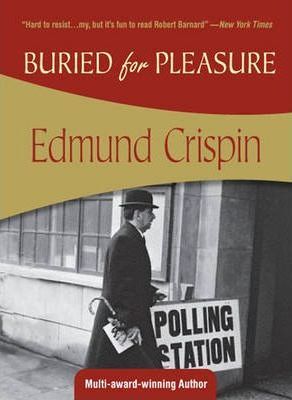 Edmund Crispin: Buried for Pleasure (1948)
Edmund Crispin: Buried for Pleasure (1948)
Published on May 13, 2022 15:01
May 6, 2022
SF Luminaries: Orson Scott Card
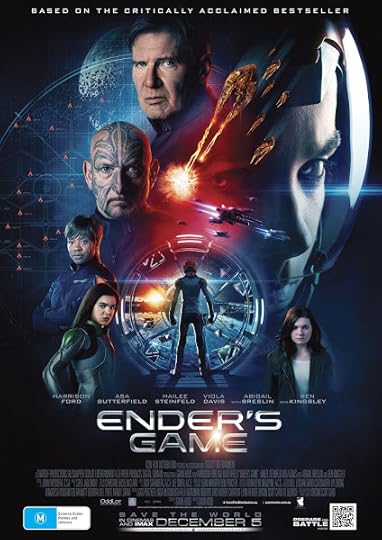 Gavin Hood, dir.: Ender's Game (2013)
Gavin Hood, dir.: Ender's Game (2013)Back in the early nineties when I was working as an English tutor at Auckland University, I was asked to supervise a research essay by one of the undergraduates. It was on Science Fiction, so no-one else felt sufficiently qualified, I suppose.
I don't remember all that much about the project, but I do recall some very interesting discussions with my supervisee about the overall tenor of SF as a genre. There's always been a good deal of talk - mainly by the more starry-eyed writers in the field - about the 'sense of wonder' and imaginative openness encouraged by its speculative, open-ended nature.
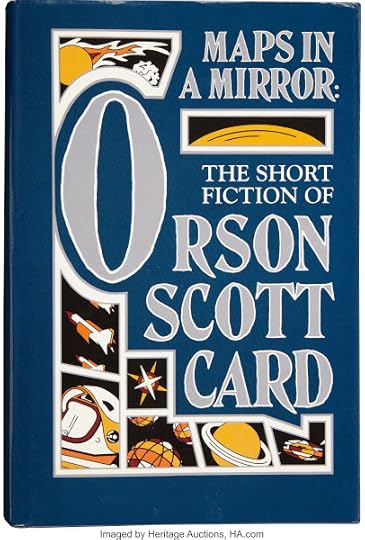 Orson Scott Card: Maps in a Mirror (1990)
Orson Scott Card: Maps in a Mirror (1990)However, I'd recently been reading Orson Scott Card's short story collection Maps in a Mirror, and its general tendency seemed quite otherwise. What stood out most for me in his work was an obsessive preoccupation with violence. There was one story in particular whose protagonist was killed in the most gruesome manner, then repeatedly revived by the authorities for further executions: his crime of dissent was such that mere death was regarded as insufficient punishment.
That's not all there was to the story, mind you. Its hero was finally sent into exile as the government had failed to break his indomitable will, so there was (at least ostensibly) a 'moral' purpose to it all. But the sheer detail supplied about the various methods of execution employed by his oppressors showed a kind of sadistic glee which seemed, to say the least, a little troubling.
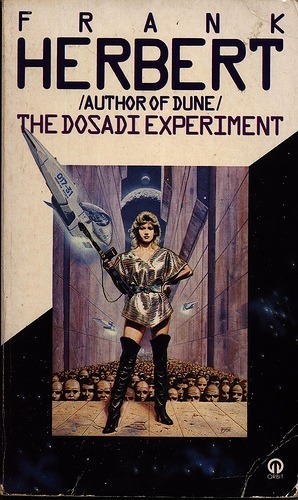 Frank Herbert: The Dosadi Experiment (1977)
Frank Herbert: The Dosadi Experiment (1977)It put me in mind of Frank Herbert's late novel The Dosadi Experiment, which extended his notions on the necessity of extreme suffering to "train the faithful" (as expounded in Dune and its sequels) to almost ridiculous extremes. The more oppression is heaped upon people, the more likely it appears to be - in Herbert's view, at any rate - that you will end up with a race of super-beings.
I'd long been aware of the quasi-fascistic tendencies of (especially) the later work of Robert Heinlein and other Campbell-era SF writers, but this seemed an even more extreme doctrine - one which operated behind the overt scaffolding of the stories to imply a more sinister agenda.
I suspect that the student I was supervising began to think that I had a real bee in my bonnet on the subject of these subliminal themes in contemporary SF. He certainly showed little patience for the subject. At the time it seemed to me a legitimate exploration of the figure in the carpet for at least a few of its principal exponents, however.
Recently I've been catching up with some of Orson Scott Card's work from the thirty years since that short story collection, which spanned only the first two decades of his career. It's been a very interesting experience. He's always been a prolific writer, as you can see from the (partial) listings below, but of late a good deal of his energy seems to have gone into comics, games, and collaborations with other writers rather than the paperback novels that made his reputation.
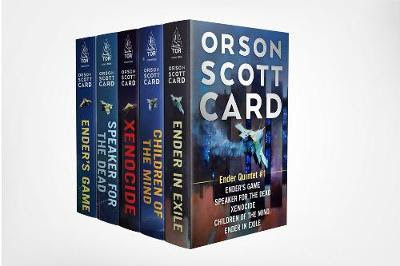 Orson Scott Card: The Ender Series (1985-2008)
Orson Scott Card: The Ender Series (1985-2008)The first, and undoubtedly the best known of his story-cycles was first known as the 'Ender's Game Trilogy', then the 'Ender's Game Quartet', and finally the 'Ender's Game Series' as successive volumes were added.
The original 1985 novel, an expansion of his 1977 Analog novella "Ender's Game", remains an SF masterpiece. The ethical dilemmas involved in training children for a war which only they can win - without telling them that that's what you're doing - remain sharply relevant to this day. And the 2013 feature film did a pretty good job of encapsulating these themes in its (inevitably) truncated form - except for Sir Ben Kingsley's "Kiwi" accent, that is, which had to be heard to be believed.
After that things got a bit more complicated. First Card decided to send his hero off on a series of relativistic hops through the universe which took him a couple of thousand years into the future; then he landed him on a planet where the literally 'inhuman' values of another alien race, the Pequeninos (or "Piggies"), led to an even more complex conflict and the threat of another Xenocide.
This new conundrum takes a good three volumes to resolve, mainly owing to the tendency of Card's characters to sit down and talk things through - at inordinate length - on a regular basis. In the process Ender gets married to a typical Card heroine: stubborn, irritable, and prone to taking perverse, self-destructive decisions whenever reason threatens to prevail. I'm not quite sure what that implies, but it does make you wonder a bit about Card's own personal experience in this area ...
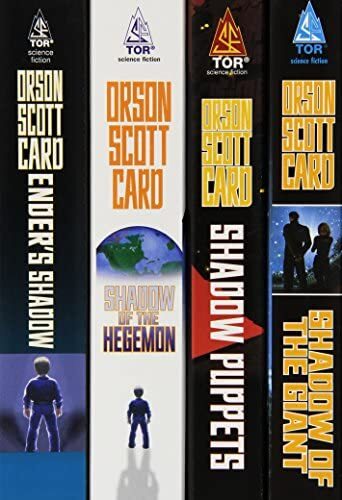 Orson Scott Card: The Shadow Series (1999-2005)
Orson Scott Card: The Shadow Series (1999-2005)But wait, there's more. Meanwhile, back on earth, the cast of the original Battle School set up to defeat the Formics (or "Buggers") are all still battling to restore the government of Earth to its proper state of blind obedience to the Hegemon, Ender's sociopathic brother Peter. All of that takes another four (or five, depending on how you count) volumes to settle.
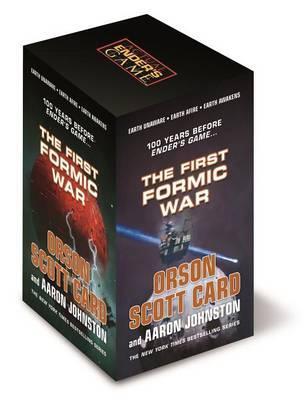 Orson Scott Card & Aaron Johnston: The First Formic War Series (2012-14)
Orson Scott Card & Aaron Johnston: The First Formic War Series (2012-14)I can't speak to the events in the First (and now Second) Formic War Trilogies, as I haven't read them. All one can conclude is that any rumours of Ender's having actually ended hostilities with the Formics at the conclusion of Ender's Game appear to have been greatly exaggerated.
Nor has this series of spin-offs concluded as yet. And presumably there are many hardcore fans out there who are still anxiously watching this space ...
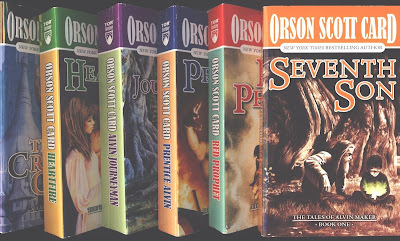 Orson Scott Card: The Tales of Alvin Maker (1987-2003)
Orson Scott Card: The Tales of Alvin Maker (1987-2003)Card's second major series is the alternate-history, American-frontier saga collectively labelled the (tall) Tales of Alvin Maker. Card's Mormonism comes through far more strongly in these books than in the Ender ones. Nevertheless, his vision of a North America half of which still belongs to the Native American tribes is a strangely inspiring one. And there's an infectious exuberance to (especially) the early volumes in the sequence which keeps you reading even as they become gradually more and more encumbered by plot and backstory.
There is still, apparently, one volume of tales to come, though I have my doubts about that. Card has a tendency to divide and subdivide his novels into they fill two or three volumes rather than just the one he originally promised. And his characters are so very, very talkative.
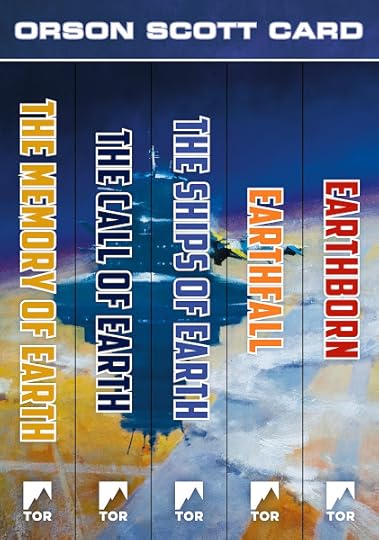 Orson Scott Card: The Homecoming Series (1992-95)
Orson Scott Card: The Homecoming Series (1992-95)A good example of this is the series above, originally intended as a trilogy, which grew into a huge, sprawling, five-volume saga.
I think that if I knew more about The Book of Mormon (had read it, for instance), I might be better equipped to judge these books. It is, it seems, a 'Science-fictional" version of the major events in the Mormon scriptures, which may account for the extreme perversity of many of the characters' basic motivations.
The hero, Nafai, for example, seems almost infinitely long-suffering, and his evil, plotting brothers, Elemak and Mebbekew, almost impossibly villainous. There is a certain narrative drive which kept me reading, but it does seem to be intended for a more specialised audience than most of his other fiction.
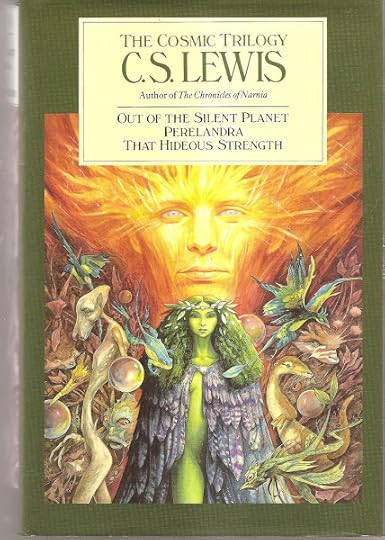 C. S. Lewis: The Cosmic Trilogy (1938-45)
C. S. Lewis: The Cosmic Trilogy (1938-45)What, then, is one to conclude about Orson Scott Card? Ender's Game remains a fine novel. Many of his other novels are also well worth reading, too - particularly the 'Alvin Maker' series. I wouldn't myself say that his experiment of mixing Mormon themes with the matter of conventional genre fiction has been a particularly successful one, but then the same could easily be said of other such ideologically driven Speculative Fiction such as C. S. Lewis's Interplanetary trilogy, or even Charles Williams' theological thrillers.
So I find myself inscribing a tick in the "yes" column, despite my reservations about the endless blah-blah in (especially) his later books, and despite my nagging suspicions of a certain residual sadism and misogyny at the root of much of his fiction. Once again, the same could be said of many canonical authors, and this inference remains, in any case, a debatable one.
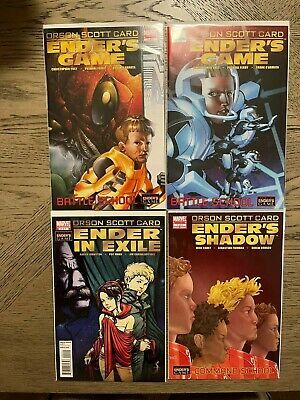 Orson Scott Card: Assorted Enderverse Comics (1938-45)
Orson Scott Card: Assorted Enderverse Comics (1938-45)•
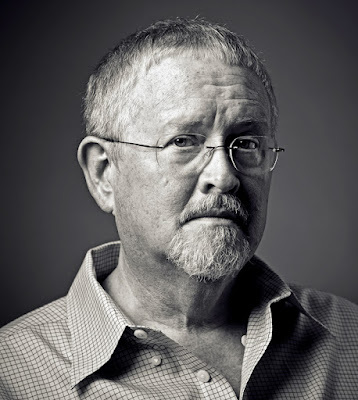 Orson Scott Card
Orson Scott CardOrson Scott Card
(1951- )
The Enders Game Series:
Ender’s Game. The Ender Quartet, 1. 1985. A Legend Book. London: Arrow Books Ltd., 1988.Speaker for the Dead. The Ender Quartet, 2. 1986. A Legend Book. London: Arrow Books Ltd., 1986.Xenocide. The Ender Quartet, 3. 1991. A Legend Book. London: Arrow Books Ltd., 1992.Children of the Mind. The Ender Quartet, 4. 1996. A Tor Book. New York: Tom Doherty Associates, LLC, 1997.Ender's Shadow. 1999. The Shadow Saga, 1. An Orbit Book. London: Little, Brown and Company (UK), 2000.Shadow of the Hegemon. 2000. The Shadow Saga, 2. An Orbit Book. London: Little, Brown and Company (UK), 2001.Shadow Puppets. 2002. The Shadow Saga, 3. A Tor Book. New York: A Tom Doherty Associates Book, 2003.Shadow of the Giant. 2005. The Shadow Saga, 4. A Tor Book. New York: A Tom Doherty Associates Book, 2006.First Meetings in the Enderverse. An Orbit Book. London: Time Warner Books UK, 2003.A War of Gifts: An Ender Story (2007)Ender in Exile (2008)Shadows in Flight. The Shadow Saga, 5 (2012)[with Aaron Johnston] Earth Unaware. First Formic Wars trilogy, 1 (2012)[with Aaron Johnston] Earth Afire. First Formic Wars trilogy, 2 (2013)[with Aaron Johnston] Earth Awakens. First Formic Wars trilogy, 3 (2014)[with Aaron Johnston] The Swarm. Second Formic Wars trilogy, 1 (2016)Children of the Fleet. Fleet School (2017)Ender's Way: short stories (2021)[with Aaron Johnston] The Hive. Second Formic Wars trilogy, 2 (2019)The Last Shadow. The Shadow Saga, 6 (2021)[with Aaron Johnston] The Queens. Second Formic Wars trilogy, 3 (tba)
The Tales of Alvin Maker:
Seventh Son. The Tales of Alvin Maker, 1. 1987. A Legend Book. London: Arrow Books Ltd., 1989.Red Prophet. The Tales of Alvin Maker, 2. 1988. An Orbit Book. London: Little, Brown and Company (UK), 2001.Prentice Alvin. The Tales of Alvin Maker, 3. 1989. An Orbit Book. London: Little, Brown and Company (UK), 2001.Alvin Journeyman. The Tales of Alvin Maker, 4. 1995. An Orbit Book. London: Little, Brown and Company (UK), 2001.Heartfire. The Tales of Alvin Maker, 5. An Orbit Book. London: Little, Brown and Company (UK), 2001.The Crystal City. The Tales of Alvin Maker, 6 (2003)Master Alvin. The Tales of Alvin Maker, 7 (tba)
The Homecoming Series:
The Memory of Earth. Homecoming, 1. 1992. Legend Books. London: Random House UK Ltd, 1993.The Call of Earth. Homecoming, 2. 1993. A Tor Book. New York: A Tom Doherty Associates Book, 1994.The Ships of Earth. Homecoming, 3. 1994. A Tor Book. New York: A Tom Doherty Associates Book, 1995.Earthfall. Homecoming, 4. 1995. A Tor Book. New York: A Tom Doherty Associates Book, 1996.Earthborn. Homecoming, 5. 1995. A Tor Book. New York: A Tom Doherty Associates Book, 1996.
Women of Genesis:
Sarah (2000)Rebekah (2001)Rachel and Leah (2004)
The Empire Duet:
Empire (2006)Hidden Empire (2009)
The Pathfinder Series:
Pathfinder (2010)Ruins (2012)Visitors (2014)
The Mithermages Series:
The Lost Gate (2011)The Gate Thief (2013)Gatefather (2015)
Miscellaneous Novels:
A Planet Called Treason [aka Treason (1988)] (1979)Songmaster. 1980 & 1987. A Legend Book. London: Arrow Books Ltd., 1990.Hart's Hope (1983)Saints [aka Woman of Destiny] (1983)Wyrms. 1987. A Legend Book. London: Arrow Books Ltd., 1988.with Lloyd Biggle, Jr.] Eye for Eye / Tunesmith. Tor double novel (1990)Lost Boys (1992)[with Kathryn H. Kidd] Lovelock (1994)Pastwatch: The Redemption of Christopher Columbus (1996)/li>Treasure Box (1996)Stone Tables (1997)Homebody (1998)Enchantment (1999)[with Doug Chiang] Robota (2003)Magic Street (2005)[with Aaron Johnston] Invasive Procedures (2007)A Town Divided by Christmas (2018)Lost and Found (2019)
Short Story Collections:
The Worthing Saga. ['Capitol' (1979); 'The Worthing Chronicle' (1982)]. A Legend Book. London: Random Century Group, 1991.The Folk of the Fringe. 1990. A Legend Book. London: Random Century, 1991.Maps in a Mirror. 1990. 2 vols. A Legend Book. London: Arrow Books Ltd., 1992.Keeper of Dreams (2008)
Poetry:
An Open Book (2004)
For Children:
Magic Mirror (1999)
Non-fiction:
Listen, Mom and Dad (1977)Ainge (1981)Saintspeak (1981)Characters and Viewpoint (1988)How to Write Science Fiction and Fantasy (1990)A Storyteller in Zion (1993)Complete Guide to Writing Science Fiction: Volume One, First Contact (2007)
Edited:
Dragons of Light (1980)Dragons of Darkness (1981)Future on Fire (1991)Future on Ice (1998)Masterpieces (2001)The Phobos Science Fiction Anthology, Volume 1 (2002)The Phobos Science Fiction Anthology, Volume 2 (2003)The Phobos Science Fiction Anthology, Volume 3 (2004)Orson Scott Card's InterGalactic Medicine Show (2008))
•
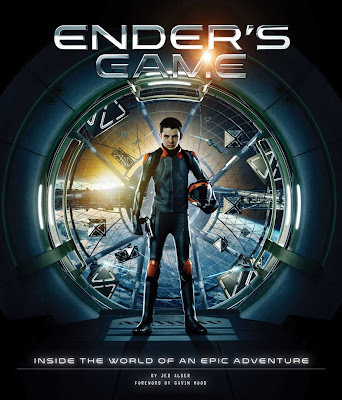 Orson Scott Card: Ender's Game (1985)
Orson Scott Card: Ender's Game (1985)
Published on May 06, 2022 16:38
May 2, 2022
James Hogg: Confessions of a Justified Sinner

Andrew Currie: Monument to James Hogg (St. Mary's Loch)
While I was living in Edinburgh in the late 1980s, a friend of mine, Martin Frost, and I were in the habit of driving madly around the countryside of Scotland in his tiny Mini in search of cups of coffee and chocolate cake - perhaps also in a vain attempt to evade the inevitable consequences of continued inattention to our studies ... "An element of pleasure-seeking there," as a cousin of mine, Roddie Macleod, remarked of a neighbouring farmer who'd been in the habit of going into Dundee from time to time to disport himself. If such a thing is possible in Dundee, that is.
On one of these expeditions, we happened upon St. Mary's Loch, and found the statue above, dedicated to the famed Ettrick Shepherd, James Hogg, but memorable mainly for the inscription on its base, the rather extravagant encomium:
He taught the wandering winds to singSince then I've discovered that that is the last line of his book-length poem The Queen’s Wake (1813), so perhaps it wasn't quite so vainglorious as I imagined.
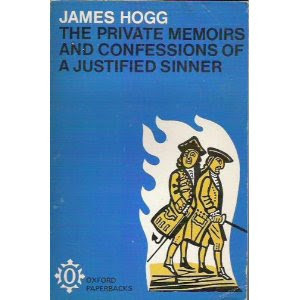
James Hogg: The Private Memoirs and Confessions of a Justified Sinner (1824 / 1970)
I'm not sure if I'd read his novel The Private Memoirs and Confessions of a Justified Sinner at the time. If not, it must have been shortly afterwards, because I remember that it had an electrifying effect on me. Why had I never heard of this novel before? It was every bit the equal of - possibly even better than - Stevenson's Dr Jekyll and Mr Hyde, and the sheer intensity and strangeness of the writing would be hard to match outside the works of De Quincey or even Edgar Allan Poe.
It does, in fact, bear a certain resemblance to such doppelgänger stories as Poe's "William Wilson" (1839) or Melville's "Bartleby, the Scrivener" (1853), though of course it long preceded them. The title may owe something to De Quincey's Confessions of an English Opium Eater (1821), but they have little else in common.
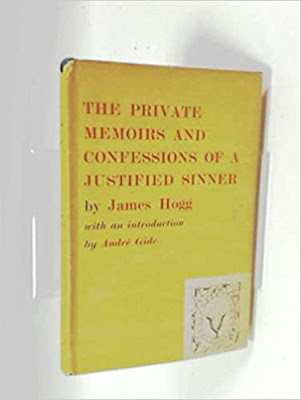 James Hogg: The Private Memoirs and Confessions of a Justified Sinner (1824 / 1947)
James Hogg: The Private Memoirs and Confessions of a Justified Sinner (1824 / 1947)In 1947, in his introduction to a new edition of the complete, uncensored text of Hogg's novel, the Nobel prize winner for that year, André Gide, confessed that he had read 'this astounding book ... with a stupefaction and admiration that increased at every page'. So, just as in the case of Poe, it was largely the admiration of the French (Baudelaire and Mallarmé for Poe; Gide for Hogg) that first plucked these great writers from provincial obscurity and brought their work to the attention of readers everywhere.
As you can see in the bibliography below, the pruned and bowdlerised versions of Victorian editors have been succeeded by a complete, textually rigorous edition of James Hogg's Collected Works. Whatever form you read it in, though, The Confessions of a Justified Sinner is every bit as important a text in the Fantastic tradition as Potocki's Manuscript Found in Saragossa (1805-15) or Schiller's Ghost-Seer (1787-1789). Indeed, it rivals Frankenstein itself.
 James Hogg: The Works of the Ettrick Shepherd (vol. 1 of 2: 1865)
James Hogg: The Works of the Ettrick Shepherd (vol. 1 of 2: 1865)It was therefore with a great deal of excitement that I came across a copy of The Works of the Ettrick Shepherd in Devonport the other day. Admittedly, it was in an edition "Revised at the Instance of the Author's Family, by the Rev. Thomas Thomson," which hardly inspires one with confidence in its textual integrity, but even this atmosphere of pious disdain for Hogg's "crudities" has its points of interest.
Hogg's reputation had suffered greatly from the caricatured version of him presented, under the name "the Ettrick Shepherd", in Noctes Ambrosianae , a popular series of feigned conversations which appeared in Blackwoods Magazine between 1822 and 1835. The Shepherd, a Scots-spouting buffoon, is generally upstaged by the more urbane "Christopher North" (Professor John Wilson - himself the author of most of the dialogues) and his friends "Timothy Tickler" (Robert Sym) and - occasionally - "The English Opium Eater" (Thomas De Quincey).
Hogg, who had little part in the concoction of most of these pieces, made no public comment on the matter. However (according to Wikipedia, at any rate) "some of his letters to Blackwood and others express outrage and anguish." Certainly this picture of him as "a part-animal, part-rural simpleton, and part-savant" coloured his reputation throughout the nineteenth and early twentieth century.
A chance remark by Hogg to Wordsworth describing the two of them as fellow bards was greeted with some disdain by the English poet. His 1835 "Extempore Effusion upon the Death of James Hogg" includes the following stanza:
The mighty Minstrel breathes no longer,However, the first two of these lines probably refer to Sir Walter Scott. Wordsworth's own notes on the poem say of Hogg: "He was undoubtedly a man of original genius, but of coarse manners and low and offensive opinions."
'Mid mouldering ruins low he lies;
And death upon the braes of Yarrow,
Has closed the Shepherd-poet's eyes.
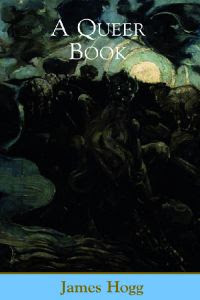 James Hogg: A Queer Book (2007)
James Hogg: A Queer Book (2007)All this patronising nonsense about his having somehow been a genius in spite of himself has hopefully now been laid to rest, however. Hogg is increasingly seen as a pillar of Scottish literature, in the tradition of Burns, Scott and Stevenson, as well as a profound influence on writers as diverse as George Douglas Brown, Alasdair Gray and Irvine Welsh.
 Eden Ashley: Arthur's Seat and Salisbury Crags (Edinburgh) (2022)
Eden Ashley: Arthur's Seat and Salisbury Crags (Edinburgh) (2022)For myself, I think that it was partly the fact that I was living right in the middle of the place where his novel is set which lent the book such an extraordinary atmosphere for me. I boarded in a Hall of Residence sited directly below Arthur's Seat, and sat on the edge of Salisbury crags reading Baudelaire on more than one occasion.
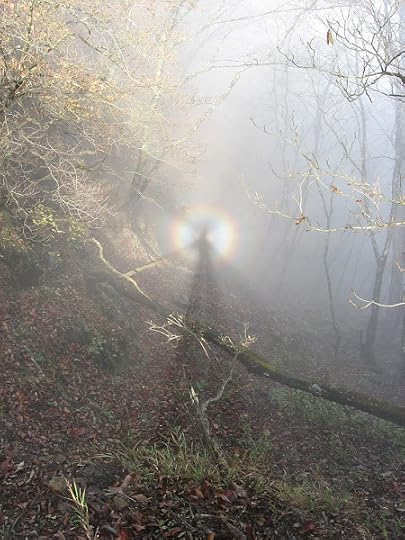 The Brocken Spectre (2006)
The Brocken Spectre (2006)The scene in Hogg's novel where the narrator sees the approach of an extraordinary apparition (which turns out to be a version of the famous Brocken spectre) was therefore located right on my front doorstep.
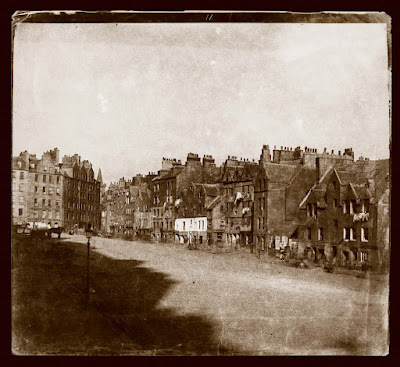 Thomas Keith: The Grassmarket, Edinburgh (c.1850)
Thomas Keith: The Grassmarket, Edinburgh (c.1850)Nor has the rest of the city changed much since the nineteenth century. There's still the Old Town running down the Royal Mile from the Castle to Holyrood Abbey; the 18th-century New Town, with its Palladian squares and crescents, off to one side of it; and then all the Victorian infill housing shading off to the South. Such landmarks as the Cowgate and the Grassmarket remain pretty much as they were in Hogg's time.
It's strange for someone from the Antipodes to reside in so changeless a place, with the ghosts walking around right in front of you rather than drowned in a sea of new construction. Not restful, exactly, but somehow very satisfying to anyone with a strong sense of tradition.
If you've never read his novel, I envy you your first experience of it. Make sure that you choose the right text, though. The older editions of Hogg are quite unreliable. What you want is one based on the 1824 version - as most of them now fortunately are. It's not a case like Frankenstein where both texts, the 1818 one and Mary Shelley's 1831 revision, have their own points of interest. There's little evidence that Hogg had much - if anything - to do with the posthumous 1837 reprint of his novel, and (as Wikipedia puts it) "the extensive bowdlerization and theological censorship in particular suggest publisher's timidity."
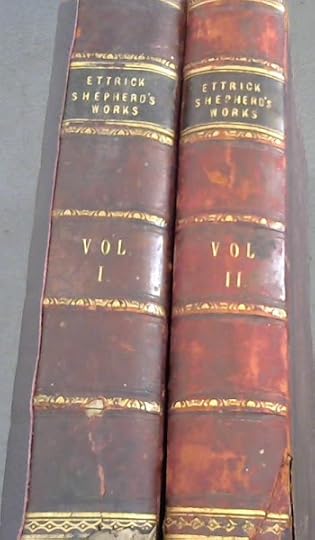 James Hogg: The Works of the Ettrick Shepherd (c.1874)
James Hogg: The Works of the Ettrick Shepherd (c.1874)•
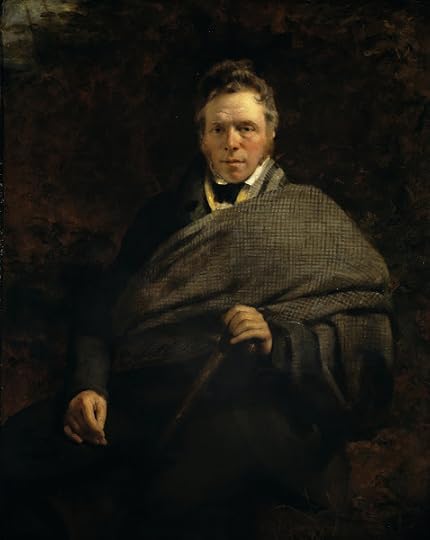
Sir John Watson Gordon: James Hogg, The Ettrick Shepherd (1830)
James Hogg
(1770-1835)
Works:
The Works of the Ettrick Shepherd: Centenary Edition. Revised at the Instance of the Author's Family, by the Rev. Thomas Thomson. 2 vols. 1865. With Many Illustrative Engravings. London, Edinburgh & Glasgow: Blackie & Son, 1878. Tales and Sketches Poems and Ballads: With a Memoir of the Author
The Stirling / South Carolina Research Edition of the Collected Works of James Hogg. Series Editors: Ian Duncan & Suzanne Gilbert. Edinburgh: Edinburgh University Press, 1995-2021.The Mountain Bard. 1807. Ed. Suzanne Gilbert (2007)The Forest Minstrel. 1810. Ed. P. D. Garside & Richard D. Jackson (2006)The Spy: A Periodical Paper of Literary Amusement and Instruction. 1810-11. Ed. Gillian Hughes (2000)The Queen's Wake: A Legendary Poem. 1813. Ed. Douglas S. Mack (2004)Mador of the Moor. 1816. Ed. James E. Barcus (2005)The Jacobite Relics of Scotland, Vol. 1: First Series. 1819. Ed. Murray G. H. Pittock (2002)The Jacobite Relics of Scotland, Vol. 2: Second Series. 1821. Ed. Murray G. H. Pittock (2003)Winter Evening Tales: Collected Among the Cottagers in the South of Scotland. 1820. Ed. Ian Duncan (2002)The Bush aboon Traquair and The Royal Jubilee. 1822. Ed. Douglas S. Mack (2008)Midsummer Night Dreams and Related Poems. 1822. Ed. J. H. Rubenstein, Gillian Hughes & Meiko O'Halloran (2008)The Three Perils of Man: or War, Women, and Witchcraft: A Border Romance. 1822. Ed. Judy King and Graham Tulloch (2012)The Three Perils of Woman: or; Love, Leasing, and Jealousy: a series of Domestic Scottish Tales. 1823. Eds David Groves, Antony Hasler, & Douglas S. Mack (1995)The Three Perils of Woman, or Love, Leasing, and Jealousy: a Series of Domestic Scottish Tales. 1823. Ed. David Groves, Antony Hasler, & Douglas S. Mack. The Stirling / South Carolina Research Edition of the Collected Works of James Hogg. Edinburgh: Edinburgh University Press, 1995. The Private Memoirs and Confessions of a Justified Sinner: Written by Himself; With a Detail of Curious Traditionary Facts and Other Evidence by the Editor. 1824. Ed. P. D. Garside (2001)The Private Memoirs and Confessions of a Justified Sinner, Written by Himself: With a Detail of Curious Traditionary Facts and Other Evidence by the Editor. 1824. Ed. P. D. Garside. Afterword by Ian Campbell. Chronology by Gillian Hughes. The Stirling / South Carolina Research Edition of the Collected Works of James Hogg. 2001. Edinburgh: Edinburgh University Press, 2010. Queen Hynde. 1824. Ed. Suzanne Gilbert & Douglas S. Mack (1998)The Shepherd's Calendar. 1829. Ed. Douglas S. Mack (1995)Songs by the Ettrick Shepherd. 1831. Ed. Kirsteen McCue & Janette Currie (2014)Altrive Tales, Featuring a ‘Memoir of the Author’s Life’. 1832. Ed. Gillian Hughes (2003)A Queer Book. 1832. Ed. P. D. Garside (1995)Anecdotes of Scott. 1834. Ed. Jill Rubenstein (1999)A Series of Lay Sermons: on Good Principles and Good Breeding. 1834. Ed. Gillian Hughes (1997)Tales of the Wars of Montrose. 1835. Ed. Gillian Hughes (1996)Highland Journeys. 1802-4. Ed. by H. B. de Groot (2010)Contributions to Blackwood's Edinburgh Magazine, Vol. 1: 1817–1828. Ed. Thomas C. Richardson (2008)Contributions to Blackwood's Edinburgh Magazine, Vol. 2: 1829–1835. Ed. Thomas C. Richardson (2012)Contributions to English, Irish and American Periodicals. Ed. Adrian Hunter & Barbara Leonardi (2020)Contributions to Scottish Periodicals. Ed. Graham Tulloch & Judy King (2021)Contributions to Annuals and Gift-Books. Ed. Janette Currie, Gillian Hughes (2006)Contributions to Musical Collections and Miscellaneous Songs. Ed. Kirsteen McCue (2015)The Collected Letters of James Hogg, Vol. 1: 1800–1819. Ed. Gillian Hughes (2004)The Collected Letters of James Hogg, Vol. 2: 1820–1831. Ed. Gillian Hughes (2006)The Collected Letters of James Hogg, Vol. 3: 1832–1835. Ed. Gillian Hughes (2008)
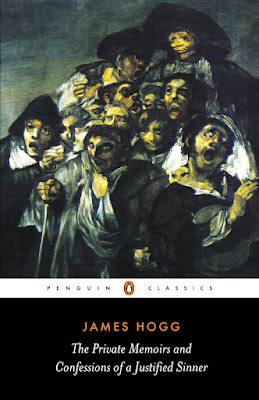 James Hogg: The Private Memoirs and Confessions of a Justified Sinner (1824 / 2006)
James Hogg: The Private Memoirs and Confessions of a Justified Sinner (1824 / 2006)Novels:
The Private Memoirs and Confessions of a Justified Sinner, Written by Himself: With a Detail of Curious Traditionary Facts and Other Evidence by the Editor. 1824. Ed. John Carey. Oxford English Novels. 1969. London: Oxford University Press, 1970.
The Private Memoirs and Confessions of a Justified Sinner, with 'Marion's Jock' and 'John Gray o' Middleholm'. 1824, 1832 & 1820. Ed. Karl Miller. Penguin Classics. London: Penguin, 2006.
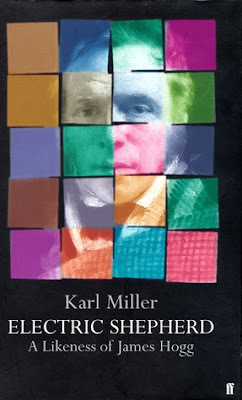
Karl Miller: Electric Shepherd (2003)
Secondary:
Miller, Karl. Electric Shepherd: A Likeness of James Hogg. London: Faber, 2003.
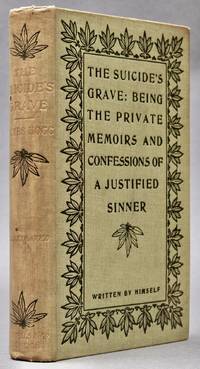 James Hogg: The Suicide's Grave (1895)
James Hogg: The Suicide's Grave (1895)
Published on May 02, 2022 19:13
March 30, 2022
The Material Interests: Reading Joseph Conrad
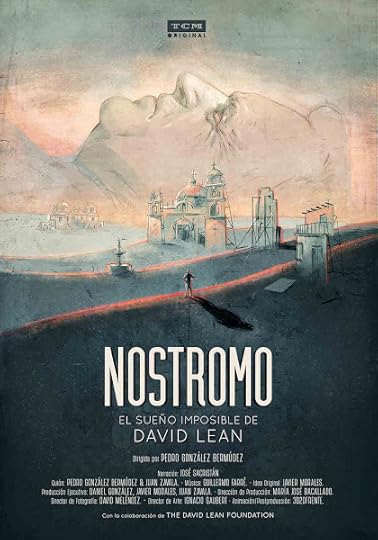 Pedro González Bermúdez, dir.: David Lean's Nostromo: The Impossible Dream (2017)
Pedro González Bermúdez, dir.: David Lean's Nostromo: The Impossible Dream (2017)The other night Bronwyn and I watched a documentary on TVNZ-on-Demand about David Lean's abortive attempts to make a feature film of Joseph Conrad's 1904 novel Nostromo. I already knew something about this project, both from Kevin Brownlow's exhaustive biography of the director, and also from the Faber edition of Christopher Hampton's filmscript for the project.
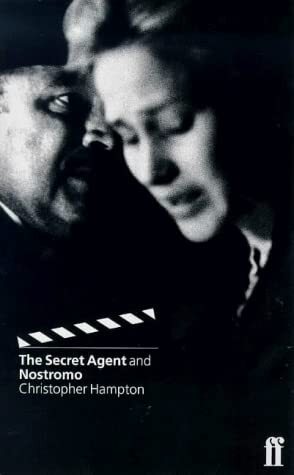 Christopher Hampton: The Secret Agent and Nostromo (Faber Filmscripts, 1996)
Christopher Hampton: The Secret Agent and Nostromo (Faber Filmscripts, 1996)Don't get me started on Christopher Hampton. I think he's one of the great unsung heroes of our time in both theatre and film. His filmscripts are brilliantly imaginative (Atonement, The Honorary Consul, The Father - those are all his); he won an Oscar for Dangerous Liaisons (a screenplay based on his own successful stage adaptation of Laclos's 1782 novel); and he directed his own screenplay for Carrington, one of my and Bronwyn's all-time favourite movies.
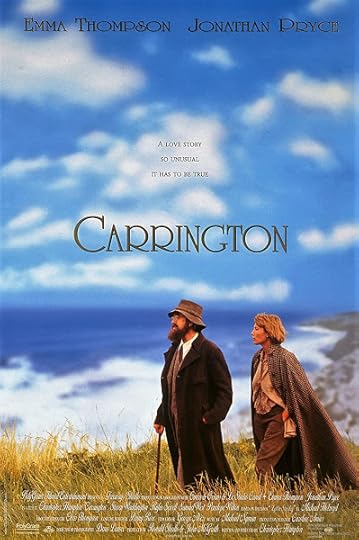 Christopher Hampton, dir. & writ.: Carrington (1995)
Christopher Hampton, dir. & writ.: Carrington (1995)Hampton's credentials as an imaginative interpreter of South America are also pretty impressive. He adapted Graham Greene's 1973 novel The Honorary Consul, set in Argentina, for the screen (as I mentioned above), but it's his own play Savages , about the genocide of the Amazonian Indians, which really shows his ability to transport himself imaginatively into that uneasy space where politics meets creativity.
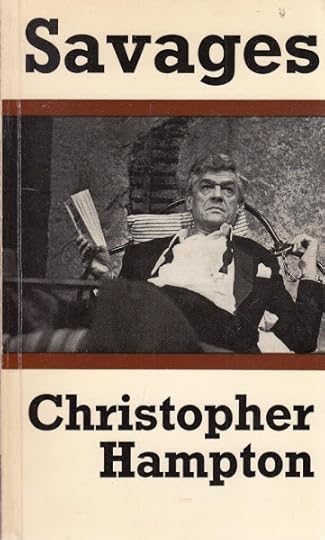 Christopher Hampton: Savages (1974)
Christopher Hampton: Savages (1974)In short, what a dream team! David Lean, the 'poet of the far horizon', the epic filmmaker par excellence; the sharpwitted theatrical chameleon Christopher Hampton; and the longest, most complex novel Joseph Conrad - one of the greatest writers of all time - ever wrote. What could possibly go wrong?
Well, lots of things, obviously. I'll leave it to you to watch the whole dreary saga in Pedro González Bermúdez's documentary if such things interest you. Suffice it to say that the irresistible force of money ran into the various immovable egos involved in the project, and the whole thing ended in tears and acrimony. All we're left with is a tantalising might-have-been, like Stanley Kubrick's Napoleon or Orson Welles' Heart of Darkness ...
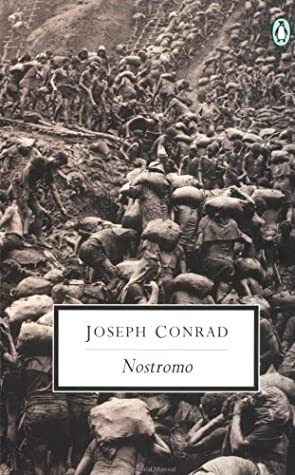 Joseph Conrad: Nostromo: A Tale of the Seaboard (1904)
Joseph Conrad: Nostromo: A Tale of the Seaboard (1904)I guess what struck me about the tiny fragments of Nostromo included in the documentary, though, was how little most of the speakers seemed to know about the book. I realise it has a rather fearsome reputation. One of the Academics interviewed remarked with a chuckle that he had to tell his students that they shouldn't worry if nothing in it made sense for the first seventy pages or so - after that it would all come into focus. Others opined that 100 or even 200 pages of exposition were required before the action really started to kick in. Clearly an ideal choice for a feature film ...
The main problem, of course, is that Conrad's novel isn't really about the character 'Nostromo' [short for nostro uomo, Italian for "Our Man" - a little like Graham Greene's Our Man in Havana]. Nostromo is certainly an important part of the plot. As the 'Capataz de Cargadores' [Captain of the Stevedores], he controls the workers at the port which is the lifeblood of the tiny town of Sulaco. But he remains a somewhat shadowy, enigmatic figure till the end - more like Kurtz in Heart of Darkness than Lord Jim in the novel of that name.
So why should I bother to read it, then? I hear you saying. Quite. Why struggle through an immensely long and detailed account of a revolution in a far-off (imaginary) Latin American country, written by a Polish novelist for whom English was not even a second but a third or fourth language, who had one brief day's sojourn ashore as his sole experience of the entire continent of South America?
When it comes to South-East Asia, Continental Europe, Great Britain - even Africa - Conrad had a rich stock of local knowledge to draw on. He knew the Congo river and how to navigate it (Heart of Darkness); he'd lived as a poor émigré in London (The Secret Agent); he was born and grew up in Central and Eastern Europe (Under Western Eyes); he'd sailed around the intricate islands and bays of the Malay archipelago (Almayer's Folly). But he certainly couldn't claim to know South America first-hand.
It didn't really shock me, then, when I heard of David Lean's attempts to find locations for his own cinematic version of Nostromo in Cuba, Baja California, Spain, and finally the South of France - anywhere, it seems, except the Northern coast of Colombia (or Venezuela) where Conrad's imaginary country must clearly, according to internal evidence (and the subject has been extensively canvassed, I assure you) be situated.
After all, if Spain could stand in for Russia in Doctor Zhivago, why not for the Spanish-speaking republic of Costaguana?
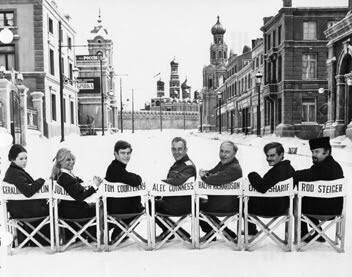 Hollywood in España (2012)
Hollywood in España (2012)•
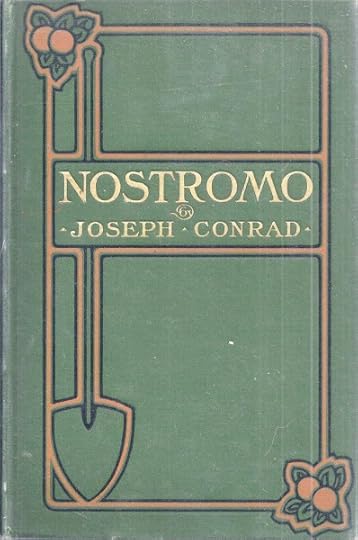 Joseph Conrad: Nostromo (First edition: 2004)
Joseph Conrad: Nostromo (First edition: 2004)To explain why even so eccentric-sounding and difficult a novel seems to me, at least, so eminently worth reading, I have to go back to the beginnings of my own Conrad adventure.
A long time ago, in a country far, far away - my ancestral homeland: Scotland - I was searching for a project. For some reason which seemed very cogent to me at the time, I'd decided that I wanted to be an Academic, and I knew that for that I needed to do a PhD. Even then I was as addicted to Fantasy and Sci-fi as I was to 'serious' literature, so I came up with the idea of writing an examination of imaginary countries in fiction.
 Colin Manlove (1942-2020)
Colin Manlove (1942-2020)Thanks to a UK Commonwealth scholarship, I'd ended up studying at Edinburgh University, where my supervisor - a well-known historian of fantasy literature, Mr. Colin Manlove - decided that the scope of the project was too broad, and that, since I'd started off with an essay about imaginary countries in South America, I should continue along those lines, using a select set of texts to interrogate the different ways in which that region had been 'recreated' by European observers - some of them with minimal or non-existent knowledge of the actual places they were writing about.
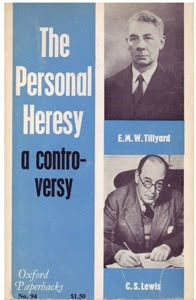 C. S. Lewis & E. M. W. Tillyard: The Personal Heresy: A Controversy (1939)
C. S. Lewis & E. M. W. Tillyard: The Personal Heresy: A Controversy (1939)Clearly Conrad was an ideal choice. His imaginary country of Costaguana is lovingly described, in immense detail, in the pages of Nostromo - the celebrated critic E. M. W. Tillyard in fact devoted a whole chapter of his book The Epic Strain in the English Novel (1958) solely to the geography of the novel - and yet it's based on little except armchair research and that one vital day ashore on the shores of the Caribbean.
Conrad is a much written-about author. He's been at the centre of the Eng. Lit. canon for quite a long time, and the books, monographs and theses are piled high on virtually every aspect of his work. Almost at once I was faced with the dilemma of how much of all this I could possibly read, and what good it would do me if I did.
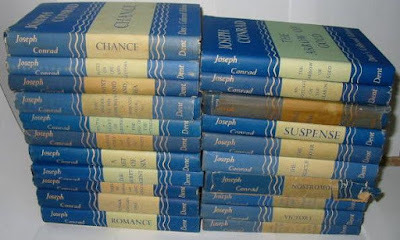 Joseph Conrad: Collected Works (New edition: 1947-57)
Joseph Conrad: Collected Works (New edition: 1947-57)Instead, I decided I would just read Conrad. And so I did. I started off on p.1 of Almayer's Folly (1896), and worked my way to the final pages of the unfinished, posthumous Suspense: A Napoleonic Novel (1925). Along the way I read all of his short stories, essays, and other materials such as journals and letters. You'll find a reasonably comprehensive listing of all that material below.
It took me quite a while. Mind you, I'd encountered some of them before, but reading them like that, in chronological sequence, taught me a lot of interesting things about Conrad I hadn't really understood before. And it also gave me a good vantage point to judge the various bits of secondary literature about him I really had to read.
I've often felt that that was a turning point for me. When it comes to a choice between knowing an author's work well, and having an intimate knowledge of the secondary literature about them, I'll always plump for the former.
This is not - to put it mildly - standard academic process. Bleating on about the conflicting views of various nobodies on some canonical work is definitely the way to get ahead in literary studies. But making any reference to other works by that writer besides the one under immediate discussion is often meant with blank looks.
I recall once, when I worked at Auckland University, attending a talk by a visiting British professor on the nature of literary biography. Since he was primarily a James Joyce scholar, he'd decided to contrast Richard Ellmann's biography of Joyce with (I think) Deirdre Bair's biography of Samuel Beckett. It all went swimmingly until, in the q-&-a after his talk, I asked quite innocently how well he thought his conclusions applied to other classic literary biographies: Leon Edel's life of Henry James, for instance, or even Ellmann's own biographies of Yeats and Wilde?
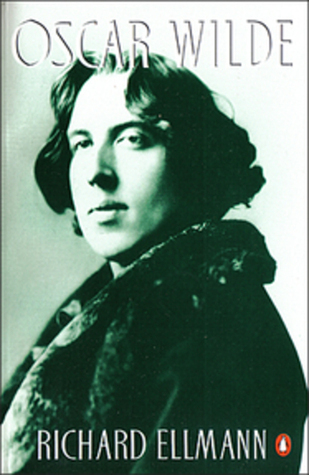 Richard Ellmann: Oscar Wilde (1987)
Richard Ellmann: Oscar Wilde (1987)He glared at me angrily, as if I were deliberately conspiring to show him up. "I haven't read them," he grunted. I guess I was more surprised than shocked. How could one set out to pontificate about literary biography without reading at least a few of the major ones? It seems that the two he'd chosen constituted his whole knowledge of the subject ("Good enough for a tour of the provinces," he'd no doubt been reassured by his colleagues if he had felt any apprehension).
I'm afraid that that's a phenomenon I've encountered many times since then: huge generalisations based on insufficient reading, either of the author one's studying or the field as a whole.
Mind you, even way back in Biblical times the author of Ecclesiastes could lament that "of making many books there is no end; and much study is a weariness of the flesh." (Eccl, 12: 12). Nor has the situation improved much since then. It's literally impossible to keep up with all the work in one's own field nowadays, however restricted it may be, and the publications continue to pile up inexorably.
But reading Conrad! That was a joy. If you leave out the two collaborations with Ford Madox Ford, and long novellas such as "Heart of Darkness" and "Typhoon," there are only really 14 novels to cover, and even the weaker, later ones always have something unexpected to offer. If you've only ever read Nostromo, how can you possibly understand how it builds on and intensified the techniques he'd already tried out in his earlier work? How can you appreciate the incredibly swift advance in his art from the comparative crudeness of his first couple of novels to the certainty and mastery of his work in the early 1900s? It took him seven years to go from Almayer's Folly to Nostromo - an almost incredible conceptual leap.
Mind you, just sticking to the primary texts is no panacea. If you read all of Conrad, does that mean you have to read all of Arnold Bennett, Stephen Crane, Ford Madox Ford, John Galsworthy, Henry James, and H. G. Wells as well? And if you want to understand Conrad's larger literary milieu, do you have to read Flaubert, Turgenev, and Henryk Sienkiewicz, too? I suppose that the real answer is yes, but who has the time? You have to trust someone else's judgement at some stage, and there is a limit.
Nevertheless, I'd rather know Conrad well than the secondary literature on Conrad. It may not apply to every novelist, but it's certainly important for him. It can be difficult to pick up a work such as Nostromo and start to figure it out if you don't know Lord Jim or (especially) such terrifyingly deadpan early stories as "An Outpost of Progress" or "Heart of Darkness."
Conrad has a point to make. That's the vital thing to remember. Like all jobbing authors, he had to make a buck, which meant appealing to the public to some degree, but for the most part he wanted to talk about how the world actually works to an audience who'd been conditioned to demand romantic legends and fairy-tales. His work can be harsh at times, but that's one of the main reasons it's lasted - that, and his extraordinary gift for language, which still seems miraculous all these years later.
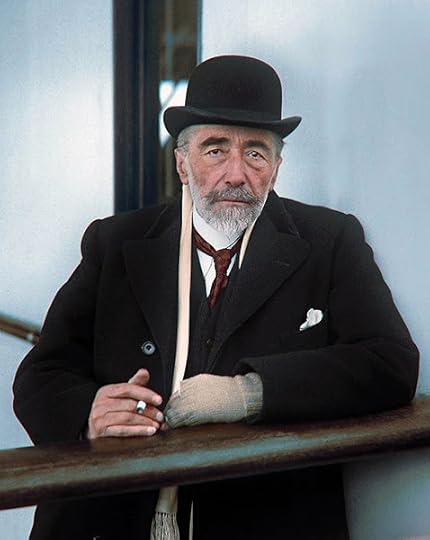 Joseph Conrad (1923)
Joseph Conrad (1923)•
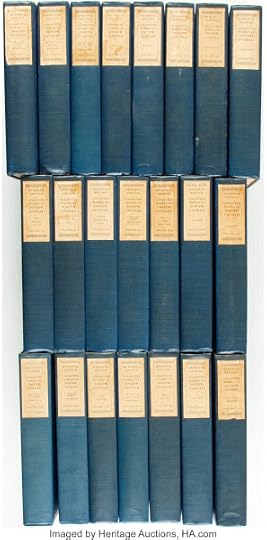 Joseph Conrad: Collected Works (1925-26)
Joseph Conrad: Collected Works (1925-26)"So, after all that song and dance, what exactly do you think Nostromo is about?" I can hear you saying. "Put up or shut up!"
Well, I'm glad you asked me that. If you want to know how Nostromo fitted into the larger scheme of my thesis: the motivations (and mechanics) behind the creation of imaginary worlds, you can consult my original conclusions here. If you want to read the tidied-up version I published in Landfall a couple of years later, you can find it here.
If you want to cut straight to the chase, though, here it is: the material interests. Just that. That phrase. The material interests.
I realise that it needs some unpacking. Let me just start off by saying that where most authors treat the subject of buried treasure as an excuse for romantic derring-do and exotic locations, Conrad turns the idea on its head. What interests him about treasure is the things that financiers and the governments they control will do to maintain a steady supply of it. All the more adventurous aspects, though present, are really secondary to this sober-sided view of the realities of global supply and demand.
To explain what that means, I'll have to tell you a story. It's not a particularly glamorous story, and not one to be proud of exactly, but it's one of the main things that was in Conrad's mind as he set out to write his great novel.
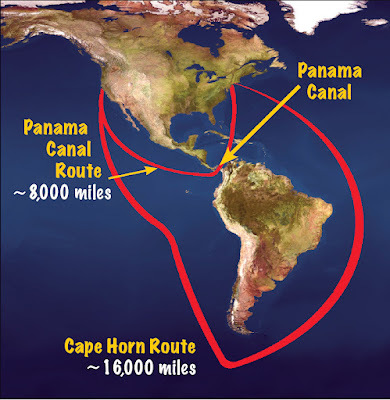 Canal Crazy
Canal CrazyNot so very long ago, ships still had to navigate all the way around Cape Horn to get from the Atlantic to the Pacific. Ever since the French entrepreneur Ferdinand de Lesseps had opened the Suez Canal in 1869, at least part of the problem of how to get goods from East to West (and vice versa) had been solved, but there still remained a great bottleneck to world trade in the form of the immense double continent of the Americas.
De Lesseps tried to follow up his success with a French-backed Panama Canal project in 1879, but it ended in debt and acrimony a decade later. Which left the problem exactly where it was.
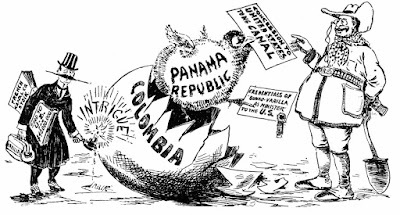 Panama Canal cartoon (1903)
Panama Canal cartoon (1903)At which point the Americans entered, stage left. It was a perfect project for the tub-thumping, sabre-waving US President Theodore Roosevelt, so - with his connivance - in 1902 the Senate voted in favour of trying to acquire suitable territory for a canal in the isthmus of Panama, then part of the Republic of Colombia.
Colombia wasn't quite so keen on this idea, so the Americans fomented a revolution in the north of their country with the sole object of creating a smaller, more malleable government with which they could deal. Sure enough, in 1903 the Republic of Panama was born, and promptly signed a deal with the US government offering them virtual sovereignty over the so-called 'canal zone'.
And so the great Panama Canal came into being, as a direct result of one of the dirtiest and most cynical bits of chicanery in contemporary history. Not that one would have to delve far into the annals of European colonialism to find even worse examples - in the Congo itself, for instance.
Conrad took careful note of all this (as he reveals through certain comments about 'Yankee conquistadors' in his correspondence with the veteran South American traveller R. B. Cunninghame Graham), and it had a part in inspiring him to put something similar at the heart of his novel - instead of the canal itself, though, we have the silver of the mine.
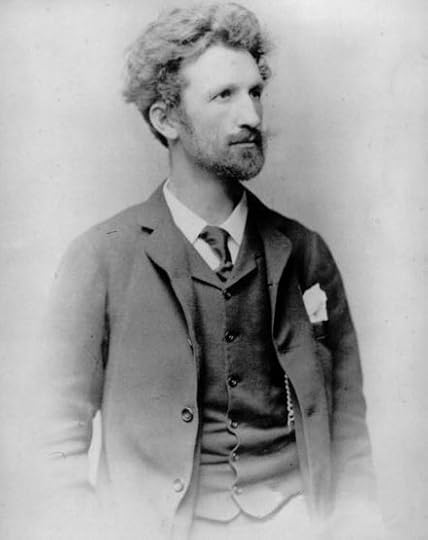 R. B. Cunninghame Grahame (1852-1936)
R. B. Cunninghame Grahame (1852-1936)It might help, at this point, to know a little more about Conrad's own background. I wrote some notes about that for my Stage Three Travel Writing course, where we contrasted his 'Congo Diary' with the written-up, fictionalised version in 'Heart of Darkness.' Here are a few of the points I made there:
Joseph Conrad (or Józef Teodor Konrad Korzeniowski, if you prefer) ... grew up speaking Polish, in Poland. And yet he didn't - because there was no such country. Prussia, Russia and Austria had divided up Poland between them in the late eighteenth century, and it didn't achieve independence again until 1918, after the First World War.Let's just say, then, that colonialism and realpolitik are never a neutral matter for Conrad. His immense suspicion of Russia's imperial ambitions, and consequent disdain for their culture, was regarded as a strange blindspot by his more complacent contemporaries in literary London, as they exclaimed over the beauties of Chekhov and Tolstoy.
Conrad's father Apollo was a writer and a patriot, and was accordingly arrested by the Tsarist authorities in 1861, when Joseph was four, and sent into exile in Siberia. Both his mother and father died as a result of the harsh conditions they were subjected to there, so Joseph was an orphan by the age of 11.
In an autobiographical essay Conrad records that he was fascinated by maps as a young boy, and particularly by the blank spot in the centre of Africa. "When I grow up I will go there," he said to himself - and, amazingly, many years later, after leaving Poland for France, and then for the British Merchant Marine, he did precisely that. He went there - to the heart of the King Leopold's private colony on the Congo river - and what he saw and brought back from that experience eventually became the story Heart of Darkness.
For me, the essential thing to remember when trying to understand this story is that Conrad was not British. His narrator and alter-ego Marlow is British - and is accordingly rather scornful of "foreigners", especially their attempts to run viable colonies. Conrad, though, as a loyal Pole, was scornful of Imperialism in all its forms - British, Russian and American - and his feelings about inhabiting a "blank spot" on the map can hardly be said to have been unambiguous either.
His is certainly an art of contrast and comparison. The fascinating thing is that it was by enlarging his terms of reference, by making his very real experience of the horror of the Belgian Congo into a fictionalised story, that he managed to create a work which has sparked so many analogues and echoes since - notably Francis Ford Coppola's 1979 Vietnam war film Apocalypse Now.
In the age of Putin, it's perhaps a little easier to understand how Conrad felt, and it's one of the many reasons that his works have such resonance today - for those who can be bothered to read them, that is. Virginia Woolf once famously remarked that George Eliot's Middlemarch was "one of the few English novels written for grownup people." One can see her point. The motivations described in that book are not really fully comprehensible to childish or even adolescent readers.
Conrad, too, almost alone among his contemporaries, was writing for grownups. The glamorous seascapes and long tropical descriptions he's most celebrated for certainly exist - and they continue to exert a strange attraction over those of us who love the world he has created. But the deep wounds inflicted by his own upbringing and the brutal suppression of his native land made it impossible for him to share the smug self-satisfaction of the rest of the English-speaking world.
The First World War hit European culture like a bomb. But even then the writers of the time could valorise it into a unique and world-shaking event: the 'war to end all wars.' Conrad knew better. Small wars kill and devastate in just the same way as global cataclysms. Greed - the material interests - and the casual cruelty it gives rise to, are something which needs to be analysed in depth if one is even to begin to understand it.
That's the main reason why Nostromo is a novel which can be spoken of in the same breath as Tolstoy's War and Peace. It attempts great things in a deliberately and carefully limited space. Nostromo the man is just one of the victims of this terrible process. Attempting to put him at the centre of this story of cynical greed and opportunism is to miss the stark contrast Conrad is suggesting between the idealism and pure intentions of so many of his nobler characters and the brutal ends to which they come.
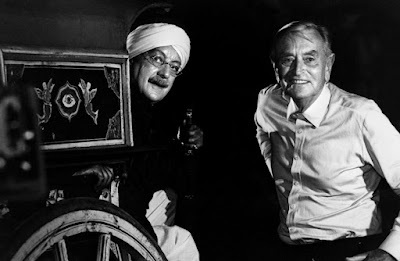 Alec Guinness and David Lean (1984)
Alec Guinness and David Lean (1984)Did David Lean understand all that? Maybe. Though some of the more inflammatory statements about the glories of the British Raj he made while filming A Passage to India do give one pause. Certainly, as one might expect from the author of Savages, Christopher Hampton got it straight away, and held it in the centre of his vision of the story. Perhaps that's why he was fired.
I do miss Lean's movie. The 1997 TV series did its best to embody Nostromo as a whole, but ended up as a bit of an incoherent mess. Once again, they seem to have thought that because that's what it's called, that's what the novel is about. The careful way in which Conrad establishes the financier Charles Gould at the centre of the revolutionary action of the novel is largely ignored. And it would take a master film-maker to suggest it - perhaps one with a more Brechtian bent: Martin Scorsese, for instance.
Much has been made of the fact that Conrad was a man of action, a professional sea captain, as well as a writer - and it's all true - but more needs to be said about the hardheaded realism with which he confronted the vagaries of history. Despite his love of romance and mystery, he could never ignore the boot in the face, and the pitiless economic forces which guided it.
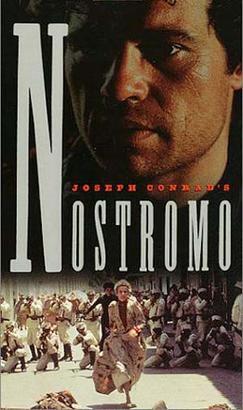 Alastair Reid, dir.: Nostromo (1997)
Alastair Reid, dir.: Nostromo (1997)•
 Alvin Langdon Coburn: Joseph Conrad (1916)
Alvin Langdon Coburn: Joseph Conrad (1916)Józef Teodor Konrad Korzeniowski
['Joseph Conrad']
(1857-1924)
[books owned by me are marked in bold:]
Novels:
Almayer's Folly (1895)Included in: The First and Last of Conrad: Almayer's Folly; An Outcast of the Islands; The Arrow of Gold; & The Rover. 1895, 1896, 1919, & 1923. London: Ernest Benn Limited, 1929. An Outcast of the Islands (1896)Included in: The First and Last of Conrad: Almayer's Folly; An Outcast of the Islands; The Arrow of Gold; & The Rover. 1895, 1896, 1919, & 1923. London: Ernest Benn Limited, 1929. The Nigger of the 'Narcissus' (1897)Included in: The Nigger of the 'Narcissus' / Typhoon; Amy Foster; Falk; Tomorrow. 1897 & 1903. Penguin Modern Classics. Harmondsworth: Penguin, 1970. Heart of Darkness (1899)Included in: Two Tales of the Congo: Heart of Darkness & An Outpost of Progress. Copper-Engravings by Dolf Rieser. London: The Folio Society. 1952.Heart of Darkness: An Authoritative Text; Backgrounds and Sources; Essays in Criticism. 1899. Ed. Robert Kimbrough. A Norton Critical Edition. New York & London: W. W. Norton & Company, 1963.Heart of Darkness: An Authoritative Text; Backgrounds and Sources; Essays in Criticism. 1899. Ed. Robert Kimbrough. 1963. Second Edition. 1971. Third Edition. A Norton Critical Edition. New York & London: W. W. Norton & Company, 1988. Lord Jim (1900)Lord Jim: A Tale. 1900. Joseph Conrad’s Works: Collected Edition. London: J. M. Dent & Sons Ltd., 1946.Lord Jim: Authoritative Text; Backgrounds; Sources; Criticism. 1900. Ed. Thomas C. Moser. A Norton Critical Edition. 1968. 2nd ed. New York & London: W. W. Norton & Company, 1996. [with Ford Madox Ford] The Inheritors (1901)Included in: [with Ford Madox Ford] The Inheritors: An Extravagant Story / Laughing Anne: A Play / One Day More: A Play. 1901 & 1924. Illustrated by Jutta Ash. Joseph Conrad: Complete Works. Geneva: Heron Books, 1969. [with Ford Madox Ford] Romance (1903)[with Ford Madox Ford] Romance. 1903. Joseph Conrad’s Works: Collected Edition. London: J. M. Dent & Sons Ltd., 1949. Nostromo (1904)Nostromo: A Tale of the Seaboard. 1904. The Works of Joseph Conrad: Uniform Edition. London & Toronto: J. M. Dent & Sons Ltd. / Paris: J. M. Dent et Fils, 1923.Nostromo: A Tale of the Seaboard. 1904. Ed. Martin Seymour-Smith. 1983. Penguin Classics. Harmondsworth: Penguin, 1986. The Secret Agent (1907)The Secret Agent: A Simple Tale. 1907. Penguin Modern Classics. Harmondsworth: Penguin, 1974. Under Western Eyes (1911)Under Western Eyes. 1911. Penguin Modern Classics. Harmondsworth: Penguin, 1966. Chance (1913)Chance: A Tale in Two Parts. 1913. Penguin Modern Classics. Harmondsworth: Penguin, 1984. Victory (1915)Victory: An Island Tale. 1915. Introduction by V. S. Pritchett. London: The Book Society, 1952. The Shadow Line (1917)The Shadow Line: A Confession. 1917. Ed. Jacques Berthoud. Penguin Modern Classics. Harmondsworth: Penguin, 1986. The Arrow of Gold (1919)Included in: The First and Last of Conrad: Almayer's Folly; An Outcast of the Islands; The Arrow of Gold; & The Rover. 1895, 1896, 1919, & 1923. London: Ernest Benn Limited, 1929. The Rescue (1920)The Rescue: A Romance of the Shallows. 1920. Harmondsworth: Penguin, 1950. The Rover (1923)Included in: The First and Last of Conrad: Almayer's Folly; An Outcast of the Islands; The Arrow of Gold; & The Rover. 1895, 1896, 1919, & 1923. London: Ernest Benn Limited, 1929. Suspense (1925)Suspense. Introduction by Richard Curle. London & Toronto: J. M. Dent & Sons Ltd., 1925.
Short Story Collections:
Tales of Unrest (1898) [TU]Tales of Unrest [The Idiots; The Lagoon; An Outpost of Progress; The Return; Karain: A Memory]. 1898. Penguin Modern Classics. Harmondsworth: Penguin, 1977. Youth and Two Other Stories (1902) [Y]Youth; Heart of Darkness; The End of the Tether: Three Stories. 1902. Joseph Conrad’s Works: Collected Edition. 1946. London: J. M. Dent & Sons Ltd., 1961. Typhoon and Other Stories (1903) [T]Included in: The Nigger of the 'Narcissus' / Typhoon; Amy Foster; Falk; Tomorrow. 1897 & 1903. Penguin Modern Classics. Harmondsworth: Penguin, 1970. A Set of Six (1908) [S6]A Set of Six [Gaspar Ruiz; The Informer; The Brute; An Anarchist; The Duel; Il Conde]. 1908. London: Methuen & Co. Ltd., 1927. 'Twixt Land and Sea (1912) [TLS]’Twixt Land and Sea: Three Tales [A Smile of Fortune; The Secret Sharer; Freya of the Seven Isles]. 1912. Penguin Modern Classics. Harmondsworth: Penguin, 1978. Within the Tides (1915) [WT]Within the Tides [The Planter of Malata; The Partner; The Inn of the Two Witches; Because of the Dollars]. 1915. Penguin Modern Classics. Harmondsworth: Penguin, 1978. Tales of Hearsay (1925) [TH]Included in: Tales of Hearsay and Last Essays [The Warrior's Soul; Prince Roman; The Tale; The Black Mate]. 1925 & 1926. Joseph Conrad’s Works: Collected Edition. London: J. M. Dent & Sons Ltd., 1955. The Complete Short Stories (1933)The Complete Short Stories [To-morrow (1902); Amy Foster (1901); Karain: A Memory (1897); The Idiots (1896); An Outpost of Progress (1896); The Return (1897); The Lagoon (1896); Youth: A Narrative (1898); Heart of Darkness (1898-99); The End of the Tether (1902); Gaspar Ruiz (1904-5); The Informer (1906); The Brute (1906); An Anarchist (1905); The Duel (1908); Il Conde (1908); A Smile of Fortune (1910); The Secret Sharer (1909); Freya of the Seven Isles (1910-11); The Planter of Malata (1914); The Partner (1911); The Inn of the Two Witches (1913); Because of the Dollars (1914); The Warrior's Soul (1915-16); Prince Roman (1910); The Tale (1916); The Black Mate (1886)]. London: Hutchinson & Co. (Publishers), Ltd., [1933]. The Complete Short Fiction of Joseph Conrad. Ed. Samuel Hynes. 4 vols (1991-92)The Stories, Volume I [The Idiots (1896); The Lagoon (1896); An Outpost of Progress (1896); Karain: A Memory (1897); The Return (1897); Youth: A Narrative (1898); Amy Foster (1901); To-morrow (1902); Gaspar Ruiz: A Romantic Tale (1904-5)]. New York: The Ecco Press, 1991.The Stories, Volume II [An Anarchist: A Desperate Tale (1905); The Informer: An Ironic Tale (1906); The Brute: An Indignant Tale (1906); The Black Mate (1886); Il Conde: A Pathetic Tale (1908); The Secret Sharer: An Episode from the Coast (1909); Prince Roman (1910); The Partner (1911); The Inn of the Two Witches: A Find (1913); Because of the Dollars (1914); The Warrior's Soul (1915-16); The Tale (1916); Appendix: The Sisters (1895)]. New York: The Ecco Press, 1992.The Tales, Volume III [Heart of Darkness (1898-99); Typhoon (1899-1901]; The End of the Tether (1902)]. New York: The Ecco Press, 1992.The Tales, Volume IV [Falk: A Reminiscence (1901); The Duel (1908); A Smile of Fortune (1910); Freya of the Seven Isles: A Story of Shallow Waters (1910-11); The Planter of Malata (1914)]. New York: The Ecco Press, 1992.
Stories:
The Black Mate (1886) [TH]The Sisters (1895)The Idiots (1896) [TU]The Lagoon (1896) [TU]An Outpost of Progress (1896) [TU]Karain: A Memory (1897) [TU]The Return (1897) [TU]Youth: A Narrative (1898) [Y]Heart of Darkness (1898-99) [Y]Typhoon (1899-1901] [T]Amy Foster (1901) [T]Falk: A Reminiscence (1901) [T]To-morrow (1902) [T]The End of the Tether (1902) [Y]Gaspar Ruiz (1904-5) [S6]An Anarchist (1905) [S6]The Informer (1906) [S6]The Brute (1906) [S6]The Duel (1908) [S6]Il Conde (1908) [S6][with Ford Madox Ford] The Nature of a Crime (1909) [CD]A Smile of Fortune (1910) [TLS]The Secret Sharer (1909) [TLS]Prince Roman (1910) [TH]Freya of the Seven Isles (1910-11) [TLS]The Partner (1911) [WT]The Inn of the Two Witches (1913) [WT]The Planter of Malata (1914) [WT]Because of the Dollars (1914) [WT]The Warrior's Soul (1915-16) [TH]The Tale (1916) [TH]
Non-fiction:
The Mirror of the Sea (1906)Included in: The Mirror of the Sea: Memories and Impressions / A Personal Record: Some Reminiscences. 1906 & 1912. Everyman’s Library, 1189. London: J. M. Dent & Sons Ltd., 1972. A Personal Record (1912)Included in: The Mirror of the Sea: Memories and Impressions / A Personal Record: Some Reminiscences. 1906 & 1912. Everyman’s Library, 1189. London: J. M. Dent & Sons Ltd., 1972. Notes on Life and Letters (1921)Notes on Life and Letters. London & Toronto: J. M. Dent & Sons Ltd., 1921. Last Essays (1926)Included in: Tales of Hearsay and Last Essays [The Warrior's Soul; Prince Roman; The Tale; The Black Mate]. 1925 & 1926. Joseph Conrad’s Works: Collected Edition. London: J. M. Dent & Sons Ltd., 1955. The Congo Diary and Other Uncollected Pieces (1978) [CD]Congo Diary and Other Uncollected Pieces. Ed. Zdzislaw Najder. New York: Doubleday & Company, Inc., 1978. Conrad's Congo (2013)Conrad’s Congo. Ed. J. H. Stape. Preface by Adam Hochschild. London: The Folio Society, 2013.
Plays:
One Day More (1917)Laughing Anne (1923)Laughing Anne & One Day More: Two Plays. Introduction by John Galsworthy. London: John Castle, 1924.Included in: [with Ford Madox Ford] The Inheritors: An Extravagant Story / Laughing Anne: A Play / One Day More: A Play. 1901 & 1924. Illustrated by Jutta Ash. Joseph Conrad: Complete Works. Geneva: Heron Books, 1969.
Letters:
Conrad’s Polish Background: Letters to and from Polish Friends. Ed. Zdzislaw Najder. Trans. Halina Carroll. London: Oxford University Press, 1964.Joseph Conrad’s Letters to R. B. Cunninghame Graham. Ed. C. T. Watts. Cambridge: Cambridge University Press, 1969.
Secondary:
Baines, Jocelyn. Joseph Conrad: A Critical Biography. 1960. Pelican Biographies. Harmondsworth: Penguin, 1971.Brownlow, Kevin. David Lean: A Biography. Research Associate: Cy Young. 1996. A Wyatt Book. New York: St. Martin's Press, 1997.Conrad, Borys. My Father: Joseph Conrad. London: Calder & Boyars, 1970.Curle, Richard. Joseph Conrad: A Study. London: Kegan Paul, Trench, Trübner & Co., Ltd., 1914.Eames, Andrew. Crossing the Shadow Line: Travels in South-East Asia. Sceptre. London: Hodder and Stoughton Paperbacks, 1986.Hampton, Christopher. The Secret Agent and Nostromo: Based on the Novels by Joseph Conrad. Faber Filmscripts. London: Faber, 1996.Karl, Frederick R. Joseph Conrad: The Three Lives. A Biography. London: Faber, 1979.Sherry, Norman. Conrad's Eastern World. Cambridge: Cambridge University Press, 1966.
Published on March 30, 2022 13:43
March 17, 2022
SF Luminaries: The Singular Genius of Gene Wolfe
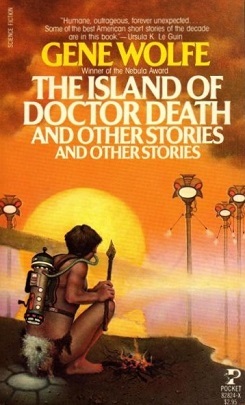 Gene Wolfe: The Island of Doctor Death and Other Stories and Other Stories (1980)
Gene Wolfe: The Island of Doctor Death and Other Stories and Other Stories (1980)The Island of Doctor Death and Other Stories and Other Stories. No, it's not a misprint. Recently I bought a rather battered first edition copy of Gene Wolfe's debut collection of short stories and novellas from Hard-to-Find Books in Auckland, one of the few local bookshops which still maintains a healthy stock of old SF paperbacks.
Admittedly it's not really a thing of beauty. That cover image, by Don Maitz, is quite accurate to the story it illustrates, but seems otherwise almost calculated not to appeal. The paper inside is brittle and the print miniscule. But the stories themselves are breathtaking!
One of the incidental characters in "Tracking Story" remarks to its unnamed protagonist:
You know nothing. You are like a child who has wandered by accident into a theater half a minute before the final curtain. You see people moving around, some masked; you hear music, observe actions you do not understand. But you do not know if the play is a tragedy or a comedy, or even know whether those you see are the actors or the audience. [217]That seems as good a way as any of summing up Wolfe's approach to storytelling. We know nothing. Nothing we are told can be trusted. No narrator is reliable, no action not open to doubt. How, then, are his readers to make their way through this baffling labyrinth of signs?
Along with the untrustworthy or just plain ignorant narrator, Wolfe is addicted to the idea of the story within a story. In the Nebula-award nominated "Seven American Nights," for instance, much of the plot hinges on the Muslim hero's haunting of a Washington theatre where J. M. Barrie's supernatural play "Mary Rose" is being performed. The more you know about that play, the more sense Wolfe's own story will make to you.
The extraordinary "Eyeflash Miracles", another Nebula Award nominee for best novella, overlays the experiences of a blind child runaway with, on the one hand, The Wizard of Oz - on the other, the Hindu myth of Krishna and Vishnu.
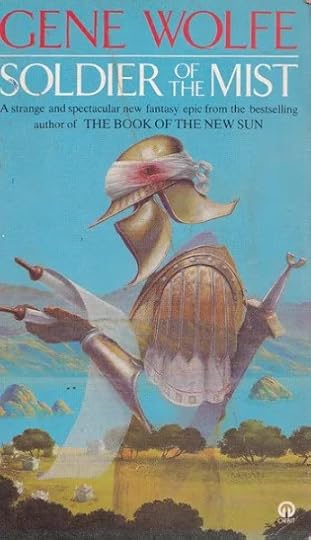 Gene Wolfe: Soldier of the Mist (1986)
Gene Wolfe: Soldier of the Mist (1986)The 'Soldier of the Mist' trilogy, possibly my favourite among all of his works (which I wrote about in an earlier blogpost here), is told by a brain-damaged soldier incapable of forming new memories, whose attention span lasts roughly one day. His account of the retreat of Xerxes' army from Classical Greece after their defeat at the Battle of Plataea in 479 BCE is therefore compiled from a series of disjointed diary entries, forgotten almost as soon as they're written down.
Another thing his head injury has gifted him with is the ability to see and converse with the gods. Or rather, the capacity to believe that that is what he is doing. It sounds like a pretty strange plot premise. It is an extremely weird idea for a story, but somehow Wolfe succeeds in making it both compelling and poignant.
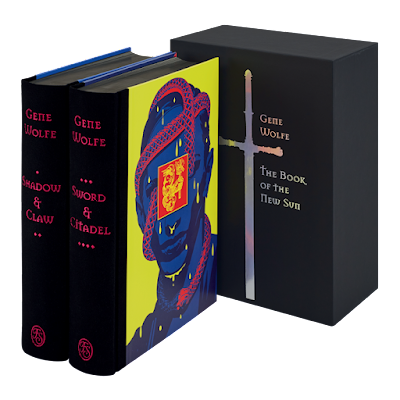 Gene Wolfe: The Book of the New Sun (1980-83)
Gene Wolfe: The Book of the New Sun (1980-83)The Book of the New Sun is undoubtedly the work he's best known for - particularly the first volume of the tetralogy, Shadow of the Torturer. It is, in many ways, one of the most direct and straightforward of his stories, and yet even it seems, at times, almost calculated to confuse.
Why? Why did Wolfe refuse to tailor his works to the market? Why did he always insist on applying just one more turn to the screw? Not by accident did he issue a number of his limited edition novellas through an outfit called "The Pretentious Press".
One reason may have been, initially, because he had a full-time job as an industrial engineer for most of his working life, from the mid-1950s until 1984, when he retired to become a full-time writer. In other words, he didn't have to make continuous sales to the pulps for a living. He was, instead, free to experiment.
For the most part, though, it must have been just because he had that sort of mind. From the very beginning his work seemed more in tune with contemporary tricksters and game-players such as Barthelme and Borges, Cortázar and Calvino, than Sci-fi gurus such as Asimov and Clarke.
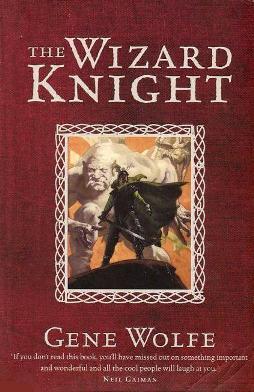 Gene Wolfe: The Wizard Knight (2004)
Gene Wolfe: The Wizard Knight (2004)Even his late sword-and-sorcery epic The Wizard Knight goes through an almost unbelievably convoluted set of plot pathways before reaching its denouement. Often, as you read him, you feel that this time he's gone too far: this time the weirdness has finally flipped over into complete incomprehensibility. But no, every time he pulls it off. You may not end up liking the result, but you can't deny the courage of a writer who literally doesn't care if you get it or not.
Caviare to the general? To some extent, yes. But not nearly as much as one might think at first sight. That short story collection I started with, The Island of Doctor Death and Other Stories and Other Stories, is structured around a set of three stories (subsequently republished, with a new story, "Death of the Island Doctor", as The Wolfe Archipelago): "The Island of Doctor Death and Other Stories" (1970)"The Death of Dr. Island" (1973)"The Doctor of Death Island" (1978)The second of these, "The Death of Dr. Island", won the Nebula award for best short story in 1974. It's the story illustrated on the cover reprinted above. Amusing as all these variations are, though, they represent more of a by-product than the centre of Wolfe's endeavours.
What marks out that story - all of his stories - from those of other postmodern fabulists is the profound compassion and empathy at the heart of them. Blind and crippled children, brain-damaged adults - these are his narrators of choice. To some extent his jokiness may have served as a screen against too facile a descent into sentimentality. Instead, it's the sheer innate intelligence behind them which makes his more terrifying and violent stories tolerable.
His work is a miracle. Given its intensity, it's perhaps best taken in small doses. However, if you haven't yet read any of it, you owe it to yourself to do so as soon as possible. It's not for nothing that Ursula Le Guin hailed him as "our Melville". He has something of Melville's scope and thematic range - something too of Melville's deep, abiding strangeness.
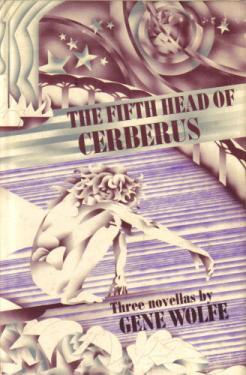 Gene Wolfe: The Fifth Head of Cerberus (1972)
Gene Wolfe: The Fifth Head of Cerberus (1972)•
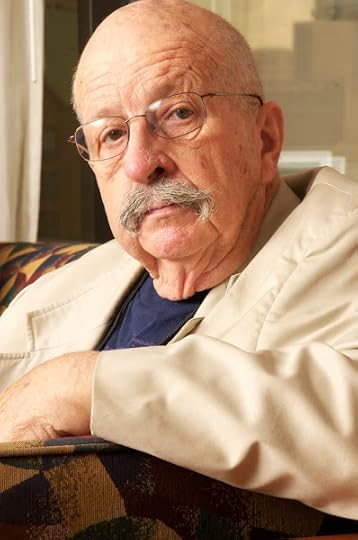 Gene Wolfe
Gene WolfeGene Rodman Wolfe
(1931-2019)
Novels:
Operation Ares. A Berkley Science Fiction Novel. New York: Berkley Medallion Books, 1970.The Fifth Head of Cerberus: Three Novellas. 1972. London: Quartet Books, 1975.Peace. 1975. New English Library Paperbacks. London: Hodder & Stoughton Ltd., 1989.The Devil in a Forest. Ace Science Fiction. New York: Ace Books, 1976.The Book of the New Sun (1980-83)The Shadow of the Torturer. 1980. London: Arrow Books, 1983.The Claw of the Conciliator. 1981. London: Arrow Books, 1983.The Sword of the Lictor. 1982. London: Arrow Books, 1984.The Citadel of the Autarch. 1983. London: Arrow Books, 1983.Free Live Free. 1984. London: Arrow Books, 1986.The Soldier Series (1986-2006)Soldier of the Mist. 1986. An Orbit Book. London: Futura Publications, 1987.Soldier of Arete. 1989. New English Library, 1990.Soldier of Sidon. A Tor Book. New York: Tom Doherty Associates, 2006.The Urth of the New Sun. 1987. An Orbit Book. London: Futura Publications, 1988.There Are Doors. 1988. An Orbit Book. London: Futura Publications, 1990.Castleview. 1990. London: New English Library, 1991.Pandora, By Holly Hollander. 1990. London: New English Library, 1991.The Book of the Long Sun (1993-96)Litany of the Long Sun: Nightside the Long Sun and Lake of the Long Sun. 1993 & 1994. An Orb Edition. New York: Tom Doherty Associates, LLC, n.d.Epiphany of the Long Sun: Caldé of the Long Sun and Exodus from the Long Sun. 1994 & 1996. An Orb Edition. New York: Tom Doherty Associates, LLC, n.d.The Book of the Short SunOn Blue's Waters (1999)In Green's Jungles (2000)Return to the Whorl (2001) The Wizard Knight. 2004. Gollancz. London: Orion Publishing Group, 2005.The Knight (2004)The Wizard (2004) Pirate Freedom (2007)An Evil Guest (2008)The Sorcerer's House (2010)Home Fires (2011)The Land Across (2013)A Borrowed Man (2015)Interlibrary Loan (2020)
Story collections:
The Island of Doctor Death and Other Stories and Other Stories. New York: Pocket Books, 1980.Gene Wolfe's Book of Days. 1981. London: Arrow Books, 1985.The Wolfe Archipelago (1983)"Death of the Island Doctor" (1983)"The Island of Doctor Death and Other Stories" (1970)"The Death of Dr. Island" (1973)"The Doctor of Death Island" (1978) Plan(e)t Engineering (1984)Bibliomen (1984)Storeys from the Old Hotel (1988)Endangered Species. 1989. An Orbit Book. London: Futura Publications, 1990.Castle of Days (1992)Castle of the OtterGene Wolfe's Book of Days The Young Wolfe (1992)Strange Travelers (2000)Innocents Aboard (2004)Starwater Strains: New Science Fiction Stories. A Tor Book. New York: Tom Doherty Associates, 2005.The Best of Gene Wolfe (2009)
Chapbooks:
At the Point of Capricorn (1983)The Boy Who Hooked the Sun (1985)Empires of Foliage and Flower: A Tale From the Book of the Wonders of Urth and Sky (1987)The Arimaspian Legacy (1988)Slow Children at Play (1989)The Old Woman Whose Rolling Pin is the Sun (1991)The Case of the Vanishing Ghost (1991)The Grave Secret (1991)[with Neil Gaiman] A Walking Tour of the Shambles (2002)Talk of Mandrakes (2003)Christmas Inn (2005)Strange Birds (2006)Memorare (2008)
Non-fiction:
The Castle of the Otter: Essays (1982)Letters Home (1991)Shadows of the New Sun: Essays (2007)
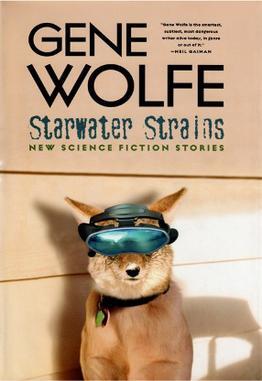 Gene Wolfe: Starwater Strains (2005)
Gene Wolfe: Starwater Strains (2005)•
Published on March 17, 2022 12:01
March 9, 2022
Auden: The Complete Poems (finally!)
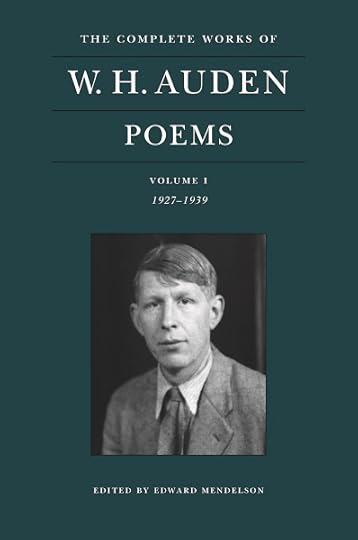
W. H. Auden: Poems, 1: 1927-1939 (2022)
Way, way back, in 1997 (it must have been), some 25 years ago, when I was first tentatively trying out Amazon.com as a means of obtaining books I couldn't find in the bookshops here in Auckland, I remember that my initial pre-order was for two books I wanted to see the moment they appeared: the Complete Poems of Herman Melville (in the Northwestern-Newberry Edition), and the Complete Poems of W. H. Auden (in the Princeton University Press edition).
It's been a long wait.
But now, at last, after two volumes of 'dramatic works' (1988 & 1993), and no fewer than six volumes of collected prose (1996-2015), it seems that Princeton's complete edition of Auden's works is about to culminate in two volumes of poems. Here's a rough breakdown of the constituent parts of their edition to date:
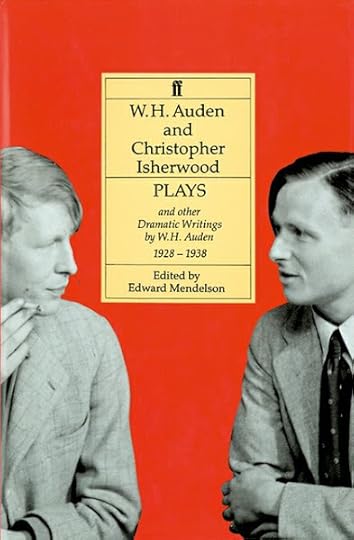 W. H. Auden: Plays and Other Dramatic Writings: 1928-1938 (1988)
W. H. Auden: Plays and Other Dramatic Writings: 1928-1938 (1988)The Complete Works of W. H. Auden:
[with Christopher Isherwood]. Plays and Other Dramatic Writings: 1928-1938. Ed. Edward Mendelson. London: Faber, 1988.
Including: The Dance of Death (1933)[with Christopher Isherwood] The Dog Beneath the Skin (1935)[with Christopher Isherwood] The Ascent of F6 (1936)[with Christopher Isherwood] On the Frontier (1938)
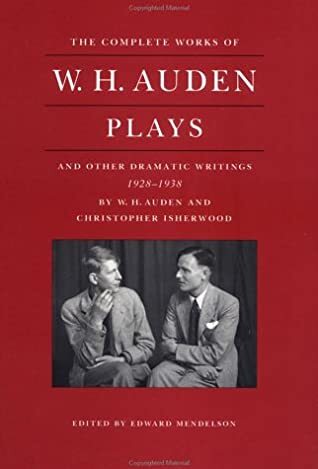 W. H. Auden: Plays and Other Dramatic Writings (1988)
W. H. Auden: Plays and Other Dramatic Writings (1988)[with Chester Kallman]. Libretti and Other Dramatic Writings: 1939-1973. Ed. Edward Mendelson. Princeton & Oxford: Princeton University Press, 1993.
Including: Paul Bunyan. Music by Benjamin Britten. 1941 (1976)[with Chester Kallman] The Rake's Progress. Music by Igor Stravinsky (1951)[with Chester Kallman] Elegy for Young Lovers. Music by Hans Werner Henze (1956)[with Chester Kallman] The Magic Flute, by Emanuel Schikaneder (1956)[with Chester Kallman] The Bassarids. Music by Hans Werner Henze (1961)[with Chester Kallman] Love's Labour's Lost. Music by Nicolas Nabokov (1973)
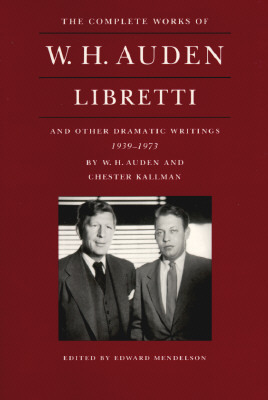 W. H. Auden: Libretti and Other Dramatic Writings (1993)
W. H. Auden: Libretti and Other Dramatic Writings (1993)Prose and Travel Books in Verse and Prose. Volume 1: 1926-1938. Ed. Edward Mendelson. London: Faber, 1996.
Including: [with Louis MacNeice] Letters from Iceland (1937)[with T. C. Worsley] Education: Today - and Tomorrow (1939)[with Christopher Isherwood] Journey to a War (1939)
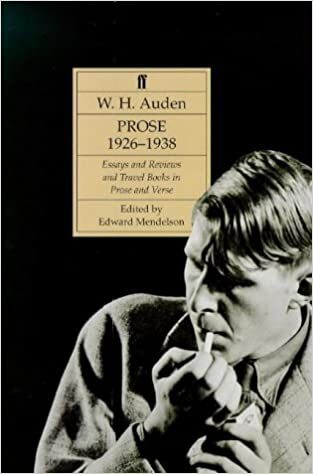 W. H. Auden: Prose and Travel Books in Verse and Prose (1996)
W. H. Auden: Prose and Travel Books in Verse and Prose (1996)Prose. Volume 2: 1939-1948. Ed. Edward Mendelson. Princeton & Oxford: Princeton University Press, 2002.
Including: The Prolific and the Devourer. 1939 (1993)
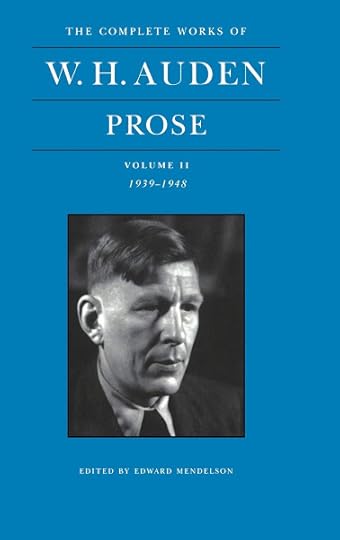 W. H. Auden: Prose. Volume 2: 1939-1948 (2002)
W. H. Auden: Prose. Volume 2: 1939-1948 (2002)Prose. Volume 3: 1949-1955. Ed. Edward Mendelson. Princeton & Oxford: Princeton University Press, 2008.
Including: The Enchaféd Flood, or The Romantic Iconography of the Sea (1950)
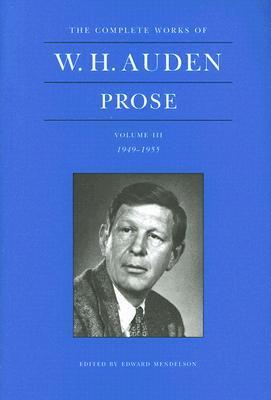 W. H. Auden: Prose. Volume 3: 1949-1955 (2008)
W. H. Auden: Prose. Volume 3: 1949-1955 (2008)Prose. Volume 4: 1956-1962. Ed. Edward Mendelson. Princeton & Oxford: Princeton University Press, 2010.
Including: The Dyer's Hand and Other Essays (1962)
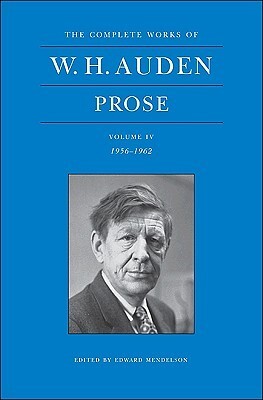 W. H. Auden: Prose. Volume 4: 1956-1962 (2010)
W. H. Auden: Prose. Volume 4: 1956-1962 (2010)Prose. Volume 5: 1963-1968. Ed. Edward Mendelson. Princeton & Oxford: Princeton University Press, 2015.
Including: Secondary Worlds: The T. S. Eliot Memorial Lectures, Delivered at Eliot College in the University of Kent at Canterbury, October, 1967 (1968)
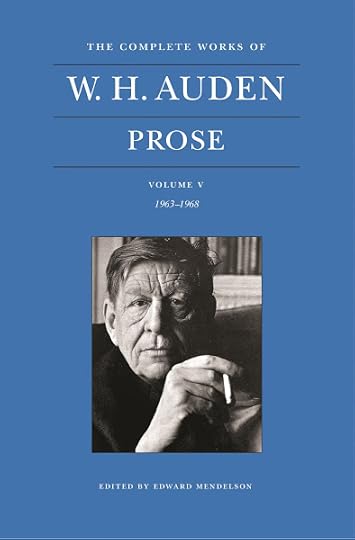 W. H. Auden: Prose. Volume 5: 1963-1968 (2015)
W. H. Auden: Prose. Volume 5: 1963-1968 (2015)Prose. Volume 6: 1969-1973. Ed. Edward Mendelson. Princeton & Oxford: Princeton University Press, 2015.
Including: A Certain World: A Commonplace Book (1970)Forewords and Afterwords (1973)
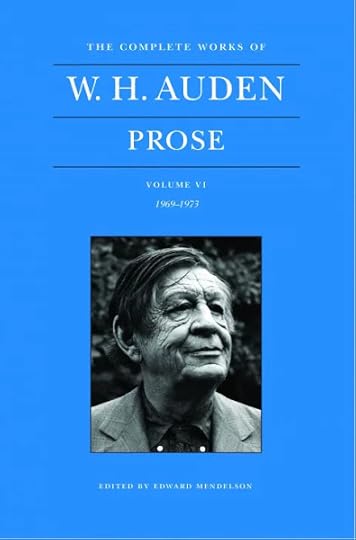 W. H. Auden: Prose. Volume 6: 1969-1973 (2015)
W. H. Auden: Prose. Volume 6: 1969-1973 (2015)Poems. Volume I: 1927-1939. Ed. Edward Mendelson. Princeton & Oxford: Princeton University Press, 2022.
Including: Poems (1928)Poems (1930 / 1933)The Orators: An English Study (1932)Look, Stranger! [aka On This Island, 1937] (1936)Spain (1937)Another Time (1940)
Poems. Volume II: 1940-1973. Ed. Edward Mendelson. Princeton & Oxford: Princeton University Press, 2022.
Including: New Year Letter [aka The Double Man] (1941)For the Time Being (1945)The Age of Anxiety: A Baroque Eclogue (1947)Nones (1951)The Shield of Achilles (1955)Homage to Clio (1960)About the House (1965)City Without Walls and Other Poems (1969)Academic Graffiti (1971)Epistle to a Godson and Other Poems (1972)Thank You, Fog: Last Poems (1974)
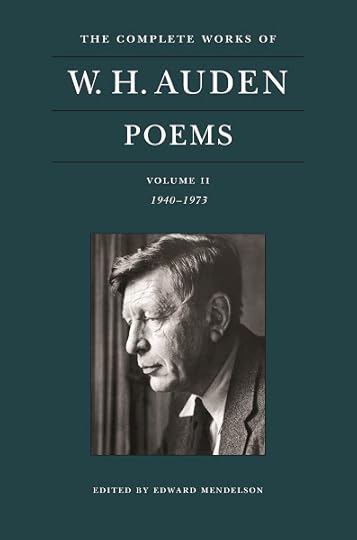 W. H. Auden: Poems, 2: 1940-1973 (2022)
W. H. Auden: Poems, 2: 1940-1973 (2022)And why, exactly, should this be exciting news for anyone except Auden fanatics? Some time ago I outlined a few of my reasons for feeling so enthusiastic about his work in the following post. Is there more to it than that, though? We are, after all, coming up (next year) to the fiftieth anniversary of his death. Shouldn't we give him a bit of a rest?
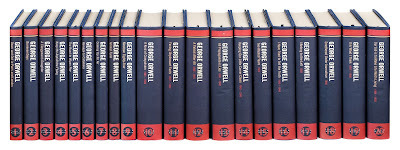 Peter Davison, ed.: The Complete Works of George Orwell (1997-98)
Peter Davison, ed.: The Complete Works of George Orwell (1997-98)I'm afraid not. Like his close contemporary (though not really friend) George Orwell, W. H. Auden maintains his relevance for readers today. I guess one reason why is because both grappled directly with the issues of their day, rather than maintaining some kind of careful aesthetic distance from the ugly events of the mid-twentieth century - among mankind's lowest moments in terms of sheer violence and terror.
Another reason is the way that both of them wrote: in clear, straightforward English, immediately comprehensible to most readers. Take, for example, Auden's 'Refugee Blues', written in 1939 as the true horror of Hitler's policies against the Jews became increasingly undeniable:
... Went to a committee; they offered me a chair;Is it poetry or propaganda? At the time many thought that Auden was crossing a line in talking so directly about the issues of the day - 'poetry' was for things like daffodils, and broken hearts, and learned disquisitions on history. It's a matter of taste, I suppose, but when I read lines like the ones below, I have to say if that isn't poetry, I don't know what is:
Asked me politely to return next year:
But where shall we go today, my dear, but where shall we go today?
Came to a public meeting; the speaker got up and said:
‘If we let them in, they will steal our daily bread’;
He was talking of you and me, my dear, he was talking of you and me.
Thought I heard the thunder rumbling in the sky;
It was Hitler over Europe, saying: ‘They must die’;
We were in his mind, my dear, we were in his mind.
Saw a poodle in a jacket fastened with a pin,
Saw a door opened and a cat let in:
But they weren’t German Jews, my dear, but they weren’t German Jews.
Went down the harbour and stood upon the quay,All I can say is that as Russian tanks roll again in Europe, and refugees stream west before Putler's armies, it's Auden poems I turn to for a bit of light in the darkness. All of a sudden he seems terrifyingly relevant in a way we probably all hoped he would never be again.
Saw the fish swimming as if they were free:
Only ten feet away, my dear, only ten feet away.
Walked through a wood, saw the birds in the trees;
They had no politicians and sang at their ease:
They weren’t the human race, my dear, they weren’t the human race.
Dreamed I saw a building with a thousand floors,
A thousand windows and a thousand doors;
Not one of them was ours, my dear, not one of them was ours.
Stood on a great plain in the falling snow;
Ten thousand soldiers marched to and fro:
Looking for you and me, my dear, looking for you and me.
•
 Ukrainian refugees (The Guardian: 5-3-2022)
Ukrainian refugees (The Guardian: 5-3-2022)•
Published on March 09, 2022 13:26
February 21, 2022
Merry Tales of Skelton
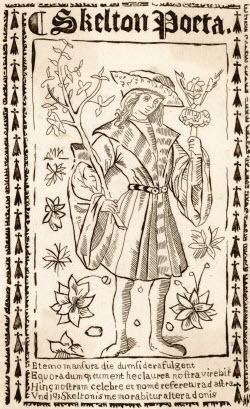 Skelton Poeta
Skelton PoetaFor though my ryme be ragged,I think I first encountered John Skelton via a side-reference in Siegfried Sassoon's Memoirs of an Infantry Officer (1930), his fictionalised account of life on the Western Front in the First World War. Sassoon describes his fellow-officer 'David Cromlech' [= Robert Graves] as follows:
Tattered and jagged,
Rudely rayne beaten,
Rusty and moughte eaten,
It hath in it some pyth.
He made short work of most books which I had hitherto venerated, for David was a person who consumed his enthusiasms quickly, and he once fairly took my breath away by pooh-poohing Paradise Lost as ‘that moribund academic concoction’. I hadn’t realized that it was possible to speak disrespectfully about Milton. Anyhow, John Milton was consigned to perdition, and John Skelton was put forward as ‘one of the few really good poets.’ But somehow I could never quite accept his supremacy over Milton as an established fact.John Skelton? Who he? My passionate interest in any and everything to do with Robert Graves soon led me to the latter's early poem "John Skelton", included in the wartime collection Fairies and Fusiliers (1917) but not reprinted in any of the various editions of his Collected Poems:
... angrily, wittily,I was therefore immensely excited to find an old edition of the Shakespearean scholar Alexander Dyce's 19th century edition of Skelton in a second-hand shop sometime in the 1970s. Unfortunately, it was only the first of two volumes, but it contained all the text - though without any of Dyce's detailed explanatory notes.
Tenderly, prettily,
Laughingly, learnedly,
Sadly, madly,
Helter-skelter John
Rhymes serenely on,
As English poets should.
Old John, you do me good!
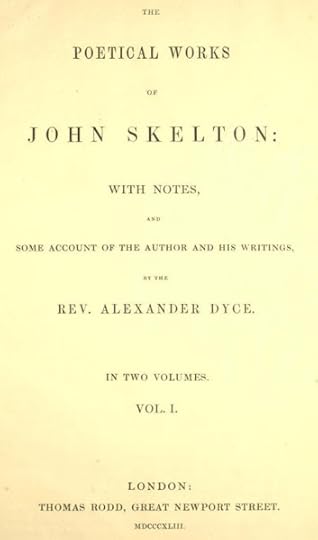 Alexander Dyce, ed. The Poetical Works of John Skelton (1843)
Alexander Dyce, ed. The Poetical Works of John Skelton (1843)But who was this man John Skelton, anyway?
Probably his principal claim to fame in the eyes of posterity is the fact that he acted as Henry VIII's tutor in the late 1490s, and wrote a book (now lost) of advice to the young prince in the genre generally classified as Speculum Principis [Mirror for Princes].
He was immensely proud of having been crowned as a "laureate" at Oxford university, and subsequently at Cambridge, then Leuven in Flanders. The term didn't mean then what it does now, though. It signified high attainment in rhetoric, rather than official appointment as a court poet.
Even so, Skelton wrote an outrageously exaggerated poem called The Garland of Laurel to celebrate this event, deliberately blurring its significance in order to milk the maximum mileage out of the distinction. He also signed himself 'Skelton, Laureat' ever afterwards.
After a brief period of imprisonment for unknown reasons in the early 1500s, Skelton retired from regular attendance at court, composing another long poem entitled The Bowge of Court to satirise the terrible corruption and greed he found there under the (so-called) Accountant King, Henry VII.
Instead, he took up the role of rector of Diss in Norfolk, where he is said to have caused a good deal of scandal with his unorthodox behaviour and views:
his parishioners ... thought him more fit for the stage than the pew or the pulpit. He was secretly married to a woman who lived in his house, and earned the hatred of the Dominican friars by his fierce satire. He consequently came under the formal censure of Richard Nix, the bishop of the diocese, and appears to have been temporarily suspended. After his death a collection of farcical tales, no doubt chiefly, if not entirely, apocryphal, gathered round his name — The Merie Tales of Skelton.- Wikipedia: John Skelton
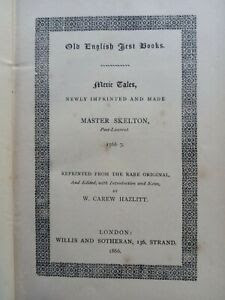 William Hazlitt, ed. Merie Tales of Skelton (1856)
William Hazlitt, ed. Merie Tales of Skelton (1856)One of the most valuable features of Dyce's edition of Skelton is the inclusion, in an appendix, of the entire text of this ridiculous book of fifteenth-century 'humour'. Most of the gags tend to hinge on someone being beaten within an inch of their lives, or otherwise bested by the arch-joker Skelton. The extract below will give you some idea of the kind of thing it is:
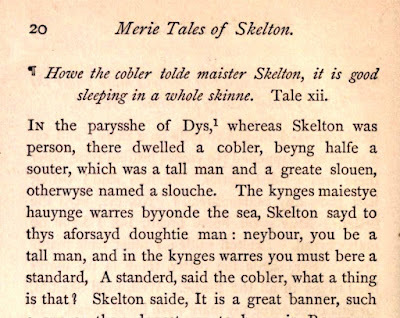 Merie Tales of Skelton (1567)
Merie Tales of Skelton (1567)So what was it that Graves, and others, saw in this rather ridiculous sounding figure? Well, for a start, between the death of Geoffrey Chaucer in 1400 and the introduction of Italianate verse forms such as the sonnet into England in the 1530s and 40s by Sir Thomas Wyatt and the Earl of Surrey, there isn't really a lot to celebrate in English poetry.
Most of the serious action was taking place north of the border in Scotland, where poets such as Gavin Douglas, William Dunbar, and Robert Henryson were continuing - and extending - the tradition of Chaucerian narrative verse.
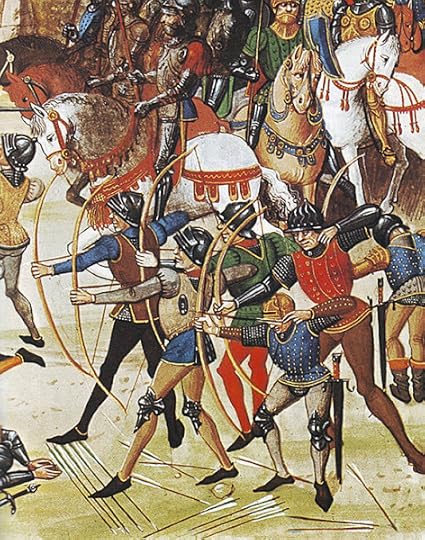 The Battle of Flodden (1513)
The Battle of Flodden (1513)And what did England have to offer in response? Well, there's Skelton's poem 'Against the Scots,' his sensitive account of the tragic Battle of Flodden:
Lo, these fond sotsIt puts one rather in mind of Tennyson's 'Charge of the Light Brigade', doesn't it?
And trattling Scots,
How they are blind
In their own mind,
And will not know
Their overthrow
At Brankston Moor!
They are so stour,
So frantic mad,
They say they had
And won the field
With spear and shield:
That is as true
As black is blue
And green is grey.
Whatever they say,
Jemmy is dead
And closed in lead,
That was their own king:
Fie on that winning!
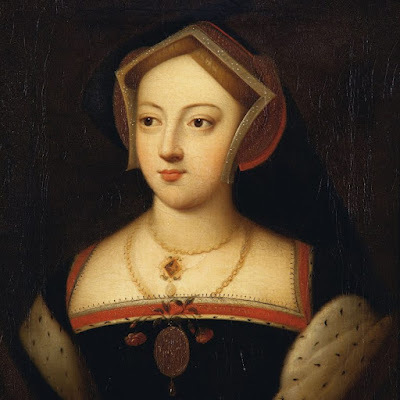 Mary Boleyn
Mary BoleynThat's probably the least attractive aspect of Skelton. He did have a gift for lyric verse, though, witness the portraits of court ladies included in his Garland of Laurel:
Merry Margaret,You can certainly see his influence not just on Robert Graves, but also on other early twentieth-century poets such as Edith Sitwell and W. H. Auden.
As midsummer flower,
Gentle as a falcon
Or hawk of the tower:
With solace and gladness,
Much mirth and no madness,
All good and no badness;
So joyously,
So maidenly,
So womanly
Her demeaning
In every thing,
Far, far passing
That I can indite,
Or suffice to write
Of Merry Margaret
As midsummer flower,
Gentle as falcon
Or hawk of the tower.
As patient and still
And as full of good will
As fair Isaphill,
Coriander,
Sweet pomander,
Good Cassander,
Steadfast of thought,
Well made, well wrought,
Far may be sought
Ere that ye can find
So courteous, so kind
As Merry Margaret,
This midsummer flower,
Gentle as falcon
Or hawk of the tower.
Here's the former's 'Aubade', included in some versions of her 'instrumental entertainment' Façade (1923):
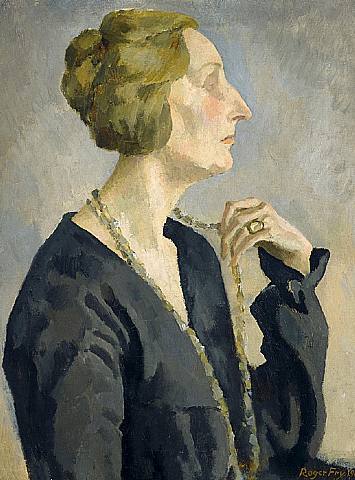 Roger Fry: Edith Sitwell in 1912 (1918)
Roger Fry: Edith Sitwell in 1912 (1918)Jane, Jane,Comb your cockscomb-ragged hair,
Tall as a crane,
The morning light creaks down again;
Jane, Jane, come down the stair.
Each dull blunt wooden stalactite
Of rain creaks, hardened by the light,
Sounding like an overtone
From some lonely world unknown.
But the creaking empty light
Will never harden into sight,
Will never penetrate your brain
With overtones like the blunt rain.
The light would show (if it could harden)
Eternities of kitchen garden,
Cockscomb flowers that none will pluck,
And wooden flowers that 'gin to cluck.
In the kitchen you must light
Flames as staring, red and white,
As carrots or as turnips shining
Where the cold dawn light lies whining.
Cockscomb hair on the cold wind
Hangs limp, turns the milk's weak mind . . .Jane, Jane,
Tall as a crane,
The morning light creaks down again!
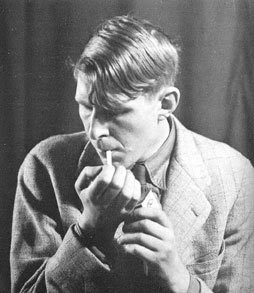 W. H. Auden (1907-1973)
W. H. Auden (1907-1973)And here's the latter's 1930 poem 'This Lunar Beauty':
This lunar beauty
Has no history
Is complete and early,
If beauty later
Bear any feature
It had a lover
And is another.
This like a dream
Keeps other time
And daytime is
The loss of this,
For time is inches
And the heart's changes
Where ghost has haunted
Lost and wanted.
But this was never
A ghost's endeavor
Nor finished this,
Was ghost at ease,
And till it pass
Love shall not near
The sweetness here
Nor sorrow take
His endless look.
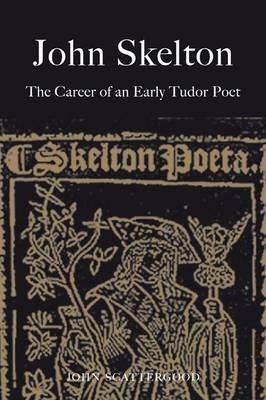 John Scattergood: John Skelton: The Career of an Early Tudor Poet (2014)
John Scattergood: John Skelton: The Career of an Early Tudor Poet (2014)So how to sum up the longterm influence of John Skelton? The lack of a readily available modern edition of his poems - or the ones in English, at any rate - was addressed, first, by Philip Henderson's frequently reprinted Dent edition of 1931.
Some of the textual deficiencies in Henderson's version have now been corrected by Skelton-biographer John Scattergood's Complete English Poems (1983) in the Penguin English Poets series.
Is he worth reading? A lot of his work is, admittedly, probably only of interest to medievalists and literary scholars, but there's a good deal of vivid satire and storytelling there which does go some way towards justifying Robert Graves' favourable verdict.
For the rest, I should probably leave you with probably the most celebrated of those 'Merie Tales of Skelton' which at least did something to carry his name down to posterity:
So there you go. It is indeed merry in the hall, when beards wag all.
Tale vii:
How Skelton, when he came from the bishop, made a sermon.
Skelton the next Sunday after went into the pulpit to preach, and said, "Vos estis, vos estis, that is to say, You be, you be. And what be you?" said Skelton: "I say, that you be a sort of knaves, yea, and a man might say worse than knaves; and why, I shall show you. You have complained of me to the bishop that I do keep a fair wench in my house: I do tell you, if you had any fair wives, it were some what to help me at need; I am a man as you be: you have foul wives, and I have a fair wench, of the which I have begotten a fair boy, as I do think, and as you all shall see. Thou wife," said Skelton, "that hast my child, be not afraid; bring me hither my child to me:" the which was done. And he, showing his child naked to all the parish, said, "How say you, neighbours all? is not this child as fair as is the best of all yours? It hath nose, eyes, hands, and feet, as well as any of your: it is not like a pig, nor a calf, nor like no fowl nor no monstrous beast. If I had," said Skelton, "brought forth this child without arms or legs, or that it were deformed, being a monstrouus thing, I would never have blamed you to have complained to the bishop of me; but to complain without a cause, I say, as I said before in my antetheme, vos estis, you be, and have be, and will and shall be knaves, to complain of me without a cause reasonable. For you be presumptuous, and do exalt yourselves, and therefore you shall be made low: as I shall show you a familiar example of a parish priest, the which did make a sermon in Rome. And he did take that for his antetheme, the which of late days is named a theme, and said, Qui se exaltat humiliabitur, et qui see humiliat exaltabitur, that is to say, he that doth exalt himself or doth extol himself shall be made meek, and he that doth humble himself or is meek, shall be exalted, extolled, or elevated, or sublimated, or such like; and that I will show you by this my cap. This cap was first my hood, when that I was student in Jucalico, and then it was so proud that it would not be contented, but it would slip and fall from my shoulders. I perceiving this that he was proud, what then did I? shortly to conclude, I did make of him a pair of breeches to my hose, to bring him low. And when that I did see, know, or perceive that he was in that case, and allmost worn clean out, what did I then to extol him up again? you all may see that this my cap was made of it that was my breeches. Therefore, said Skelton, vos estis, therefore you be, as I did say before: if that you exalt yourself, and cannot be contented that I have my wench still, some of you shall wear horns; and therefore vos estis: and so farewell." It is merry in the hall, when beards wag all.
•
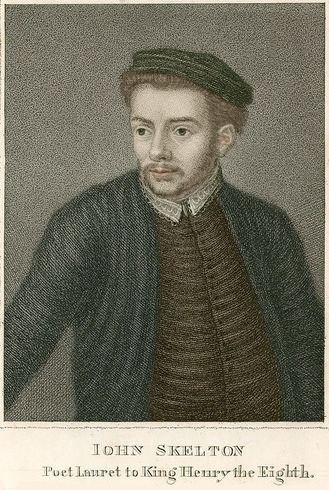 John Skelton
John SkeltonJohn Skelton
(c.1460–1529)
The Poetical Works of Skelton and Donne with a Memoir of Each. Ed. Alexander Dyce. 1843. 4 Vols in 2. Riverside Edition. 1855. Cambridge: The Riverside Press / Boston: Houghton Mifflin Co., 1881.
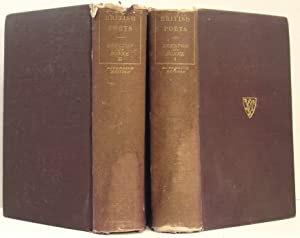 The Poetical Works of Skelton and Donne. 4 vols in 2 (1855)
The Poetical Works of Skelton and Donne. 4 vols in 2 (1855)Skelton, John. The Complete Poems of John Skelton, Laureate: 1460-1529. Ed. Philip Henderson. 1931. Everyman’s Library. London: J. M. Dent & Sons Ltd. / New York: E. P. Dutton & Co. Inc., 1966.
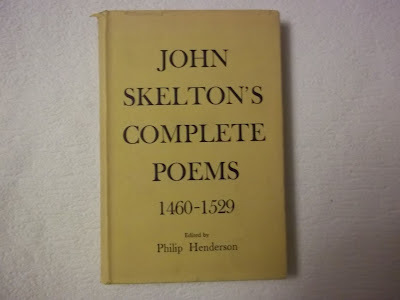 The Complete Poems of John Skelton (1931)
The Complete Poems of John Skelton (1931)Skelton, John. The Complete English Poems. Ed. John Scattergood. Penguin English Poets. Harmondsworth: Penguin, 1983.
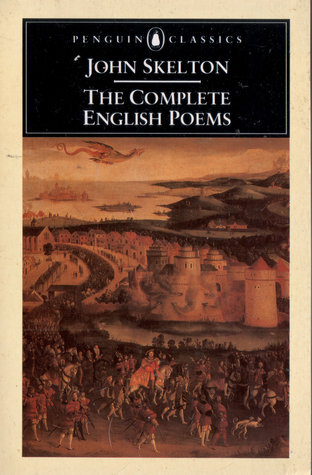 John Skelton: The Complete English Poems (1983)
John Skelton: The Complete English Poems (1983)Pollet, Maurice. John Skelton: Poet of Tudor England. 1962. Trans. John Warrington. London: J. M. Dent & Sons, Ltd., 1970.
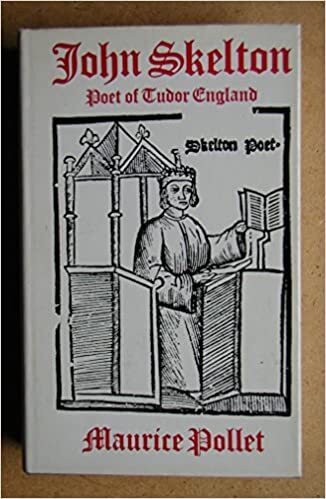 Maurice Pollet: John Skelton: Poet of Tudor England (1962 / 1971)
Maurice Pollet: John Skelton: Poet of Tudor England (1962 / 1971)•
Published on February 21, 2022 13:58
February 2, 2022
Retirement gift
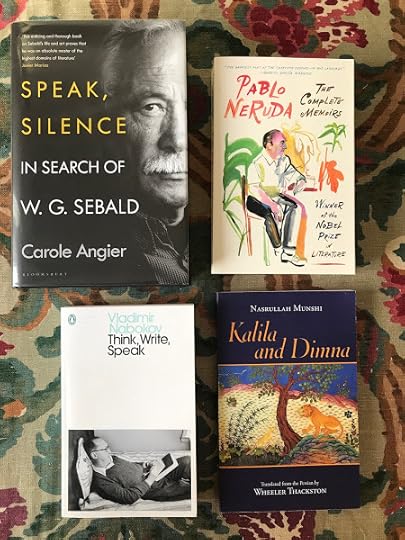
Unity Books
[photograph: Bronwyn Lloyd (31/1/2022)]
My colleagues at Massey University were kind enough to have a bit of a whip-round when I left the building (or rather the zoom-room) a couple of weeks ago now. Friday, 14th January was my official last day, if you're curious.
I have to say that I was impressed by their intuition that what would suit me best is a book-token, and their choice of locations - Unity Books in High Street - was also right on target. Where else can you go in Auckland to find "brainy stuff"? (Believe it or not, that's the label above one of the bookcases in the shop).
I won't be rude enough to reveal how much the book-token was for, but suffice it to say that it covered the four brand-new books above. They are (in alphabetical order):
Munshi, Nasrullah. Kalila and Dimna. Trans. Wheeler M. Thackston. Indianapolis: Hackett Publishing Company, Inc., 2019.I guess that the nice thing about them was that - either by coincidence, or through the serendipities of personal psychology - each one of them encapsulates a strong area of interest for me:
Nabokov, Vladimir. Think, Write, Speak: Uncollected Essays, Reviews, Interviews, and Letters to the Editor. Ed. Brian Boyd & Anastasia Tolstoy. 2019. Penguin Modern Classics. London: Penguin Random House UK, 2020.
Neruda, Pablo. The Complete Memoirs: Expanded Edition. 2017. Trans. Hardie St. Martin & Adrian Nathan West. New York: Farrar, Straus and Giroux, 2021.
Angier, Carol. Speak, Silence: In Search of W. G. Sebald. London: Bloomsbury Circus, 2021.
•
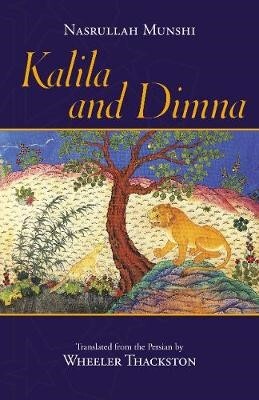 Nasrullah Munshi: Kalila and Dimna (2019)
Nasrullah Munshi: Kalila and Dimna (2019)The first, for instance, a new translation of a classic set of Arabic fables, adapted and transmuted from their Sanskrit originals, falls into the class of books related to the Arabian Nights, a work which fascinates me so much that not only do I maintain a website devoted to the subject, but I've also devised - and taught - an entire fiction writing course centred on the collection.
Bidpai, the Indian sage who tells the stories - hence their alternative title The Fables of Bidpai (or 'Pilpay' in French) - focussed them around two ambitious jackals, Kalila and Dimna, employed as servants by the King (a Lion). They consist of a series of intertwined beast fables designed to illustrate the pitfalls in the way of just and effective rule.
Their immediate predecessor was the Sanskrit collection The Panchatantra, also available in a variety of recensions and forms. Behind that lie the Buddhist Jātaka Tales, the Kathāsaritsāgara [Ocean of Streams of Story], and The Hitopadesha. In its turn, Kalila and Dimna would go on to influence the numerous beast fables included in the Thousand and One Nights itself.
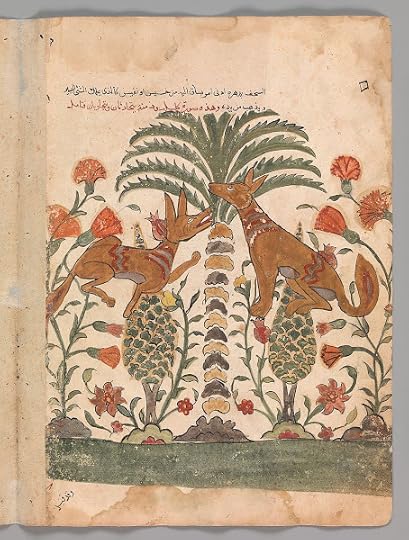 Kalila Upbraiding Dimna (16th century)
Kalila Upbraiding Dimna (16th century)Kalīla wa-Dimna
(c.8th century)
The Panchatantra [Pañcatantra] (c.3rd century BCE)
Ryder, Arthur W., trans. The Panchatantra. 1925. Chicago: Phoenix Books, 1964.
Edgerton, Franklin, trans. The Panchatantra. London: Allen & Unwin, 1965.
Visnu Sarma. The Pancatantra. Trans. Chandra Rajan. 1993. London: Penguin, 1995.
Olivelle, Patrick, trans. The Pañcatantra: The Book of India’s Folk Wisdom. The World’s Classics. Oxford: Oxford University Press, 1997.
The Jātaka Tales (c.5th century)
Rhys Davids, T. W. trans. Buddhist Birth-Stories (Jātaka Tales): The Commentarial Introduction Entitled Nidāna-Kathā, The Story of the Lineage. 1880. Broadway Translations. London & New York: Routledge & Dutton, 1925.
Cowell, E. B., ed. The Jātaka, or Stories of the Buddha’s Former Births. Trans. R. Chambers, W. H. D. Rouse, H. T. Francis & R. A. Neil, W. H. D. Rouse, H. T. Francis, E. B. Cowell & W. H. D. Rouse. 6 vols in 3. 1895-1907. Delhi: Motilal Banarsidass Publishers, 1990.
Kalīla wa-Dimna (c.8th century)
Benalmocaffa, Abdalá. Calila y Dimna. Introducción, traducción y notas de Marcelino Villegas. Libro de Bolsillo: Clásicos 1512. Madrid: Alianza Editorial, 1991.
Kalila and Dimna: Selected Fables of Bidpai. Retold by Ramsay Wood. Introduction by Doris Lessing. 1980. London: Granada, 1982.
Munshi, Nasrullah. Kalila and Dimna. Trans. Wheeler M. Thackston. Indianapolis: Hackett Publishing Company, Inc., 2019.
Somadeva (c.11th century)
Penzer, N. M., ed. The Ocean of Story: Being C. H. Tawney’s Translation of Somadeva’s Kathā Sarit Sāgara (or Ocean of Streams of Story). 1880-87. 10 vols. London: Privately Printed for Subscribers Only by Chas. J. Sawyer Ltd., Grafton House, W.1., 1924-1928.
Penzer, N. M., ed. The Ocean of Story: Being C. H. Tawney’s Translation of Somadeva’s Kathā Sarit Sāgara (or Ocean of Streams of Story). 1880-87. 10 vols. 1924-28. Delhi: Motilal Banarsidass, 1968.
Somadeva. Tales from the Kathāsaritsāgara. Trans. Arshia Sattar. Foreword by Wendy Doniger. 1994. Penguin Classics. Harmondsworth: Penguin, 1996.
Somadeva. Océan des rivières de contes. Ed. Nalini Balbir, with Mildrède Besnard, Lucien Billoux, Sylvain Brocquet, Colette Caillat, Christine Chojnacki, Jean Fezas & Jean-Pierre Osier. Traduction des ‘Contes du Vampire’ par Louis & Marie-Simone Renou, 1963. Bibliothèque de la Pléiade, 438. Paris: Gallimard, 1997.
Narayana (c.12th century)
Chandiramani, G. L., trans. The Hitopadesha: An Ancient Fabled Classic. 1995. Mumbai: Jaico Publishing House, 1999.
•
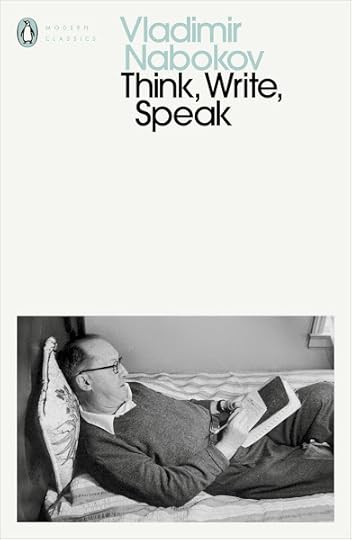 Vladimir Nabokov: Think, Write, Speak (2019)
Vladimir Nabokov: Think, Write, Speak (2019)Shortly before I went to High School in the 1970s, the revisionist teachers at Rangitoto College decided to replace the more traditional Latin and French with Russian and Indonesian - more practical choices, or so they thought, for the contemporary world.
I never studied Indonesian, but I did learn Russian - along with French, which had fortunately survived their cull. I wouldn't say that I learnt it well, but I can follow it a bit, and I can certainly manage Cyrillic letters, which are actually the easiest part of the whole business. The complexity of Russian grammar was certainly challenging, but probably no more so than Latin would have been.
The abiding result of all that is a fascination with Russian literature and culture, which has manifested itself in endless porings over such 'Silver Age' writers as Mandel'stam and Pasternak, as well as the more obvious Chekhov, Dostoyevsky, Gogol, and Tolstoy. Nabokov has never been one of my main heroes, but his brilliance as a bilingual commentator as well as a writer makes him an inevitable subject of interest for me.
Brian Boyd's numerous books on the subject have (I suspect) all made their way into my collection by now. His two-volume biography is, of course, paramount, and - while it did come as a bit of a surprise to discover just how new material remained to be collected in the book above - I certainly welcome this new addition.
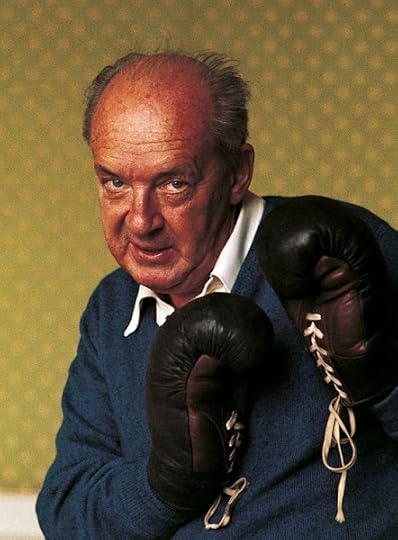 Giuseppe Pino: Vladimir Nabokov (1960s)
Giuseppe Pino: Vladimir Nabokov (1960s)Vladimir Vladimirovich Nabokov
(1899-1977)
Novels:
Nabokov, Vladimir. Mary: A Novel. [‘Машенька’, 1926]. Trans. Michael Glenny in collaboration with the Author. 1970. A Fawcett Crest Book. Greenwich, Conn.: Fawcett Publications, Inc., 1971.
Nabokov, Vladimir. King, Queen, Knave. [‘Король, дама, валет’, 1928]. Trans. Dmitri Nabokov in collaboration with the Author. 1968. London: Panther Books, 1970.
Nabokov, Vladimir. The Defence. [‘Защита Лужина’, 1930]. Trans. Michael Scammell in collaboration with the Author. 1964. Panther Books Ltd. Frogmore, St Albans, Herts: Granada Publishing Limited, 1973.
Nabokov, Vladimir. Glory. [‘Подвиг’, 1932]. Trans. Dmitri Nabokov. 1971. Penguin Twentieth-Century Classics. Harmondsworth: Penguin, 1974.
Nabokov, Vladimir. The Eye. [‘Соглядатай’, 1932]. Trans. by the Author. 1965. London: Panther Books Ltd., 1968.
Nabokov, Vladimir. Laughter in the Dark. [‘Камера Обскура’, 1933]. Trans. by the Author. 1938. Harmondsworth: Penguin, 1969.
Nabokov, Vladimir. Despair. [‘Отчаяние’, 1934]. Trans. by the Author. 1937 & 1965. Harmondsworth: Penguin, 1981.
Nabokov, Vladimir. Invitation to a Beheading. [‘Приглашение на казнь’, 1936]. Trans. Dmitri Nabokov in collaboration with the Author. 1959. Harmondsworth: Penguin, 1969.
Nabokov, Vladimir. The Gift. [‘Дар’, 1938]. Trans. Michael Scammell with the collaboration of the Author. 1963. London: Panther Books Ltd., 1966.
Nabokov, Vladimir. The Enchanter. [‘Волшебник’, 1939]. Trans. Dmitri Nabokov. 1985. Picador. London: Pan Books Ltd., 1986.
Nabokov, Vladimir. The Real Life of Sebastian Knight. 1941. Harmondsworth: Penguin Books, 1971.
Nabokov, Vladimir. Bend Sinister. 1947. Harmondsworth: Penguin Books, 1974.
Nabokov, Vladimir. Lolita. 1955. A Corgi Book. London: Transworld Publishers Ltd., 1965.
Nabokov, Vladimir. The Annotated Lolita. 1955. Ed. Alfred Appel, Jr. 1970. Rev. ed. 1991. Vintage Books. New York: Random House, Inc., 1991.
Nabokov, Vladimir. Pnin. 1957. Penguin Books 1491. Harmondsworth: Penguin Books, 1960.
Nabokov, Vladimir. Pale Fire. 1962. A Corgi Book. London: Transworld Publishers Ltd., 1964.
Nabokov, Vladimir. Ada or Ardor: A Family Chronicle. 1969. Harmondsworth: Penguin Books, 1971.
Nabokov, Vladimir. Novels and Memoirs 1941-1951: The Real Life of Sebastian Knight / Bend Sinister / Speak, Memory: An Autobiography Revisited. 1941, 1947, 1951. Ed. Brian Boyd. The Library of America, 87. New York: Literary Classics of the United States, Inc., 1996.
Nabokov, Vladimir. Novels 1955-1962: Lolita / Pnin / Pale Fire / Lolita: A Screenplay. 1955, 1957, 1962, 1974. Ed. Brian Boyd. The Library of America, 88. New York: Literary Classics of the United States, Inc., 1996.
Nabokov, Vladimir. Novels 1969-1974: Ada, or Ardor: a Family Chronicle / Transparent Things / Look at the Harlequins!. 1969, 1972, 1974. Ed. Brian Boyd. The Library of America, 89. New York: Literary Classics of the United States, Inc., 1996.
Nabokov, Vladimir. The Original of Laura (Dying is Fun). Ed. Dmitri Nabokov. 2009. Penguin Classics. London: Penguin, 2009.
Stories:
Nabokov, Vladimir. Nabokov's Dozen: Thirteen Stories. 1958. London: William Heinemann Ltd., 1959.
Nabokov, Vladimir. Nabokov's Quartet. 1966. London: Panther Books, 1969.
Nabokov, Vladimir. A Russian Beauty and Other Stories. 1973. Penguin Twentieth-Century Classics. Harmondsworth: Penguin, 1975.
Nabokov, Vladimir. Tyrants Destroyed and Other Stories. 1975. Harmondsworth: Penguin, 1981.
Nabokov, Vladimir. Details of a Sunset and Other Stories. 1976. Penguin Twentieth-Century Classics. Harmondsworth: Penguin, 1994.
Nabokov, Vladimir. The Stories of Vladimir Nabokov. 1995. Vintage International. New York: Random House, Inc., 1997.
Plays:
Nabokov, Vladimir. The Waltz Invention: A Play in Three Acts. [‘Izobretenie Val'sa’, 1938]. Trans. 1966. A Pocket Cardinal Edition. New York: Pocket Books, 1967.
Nabokov, Vladimir. The Man from the USSR and Other Plays. With Two Essays on the Drama. Trans. Dmitri Nabokov. Bruccoli Clark. San Diego & New York: Harcourt Brace Jovanovich, Publishers, 1984.
Poetry & Translation:
Pushkin, Aleksandr. Eugene Onegin: A Novel in Verse, Translated from the Russian, with a Commentary. Revised Edition. Trans. Vladimir Nabokov. 1964 & 1975. Bollingen Series LXXII. 4 vols. Princeton, NJ: Princeton University Press, 1975.Translator's Introduction / Eugene Onegin: The TranslationCommentary on Preliminaries and Chapters One to FiveCommentary on Chapters Six to Eight, "Onegin's Journey, " and "Chapter Ten" / AppendixesIndex / Evgeniy Onegin: Reproduction of the 1837 Edition
Pushkin, Aleksandr. Eugene Onegin: A Novel in Verse, Translated from the Russian, with a Commentary. Revised Edition. Trans. Vladimir Nabokov. 1964 & 1975. Paperback Edition in Two Volumes. 1981. Bollingen Series LXXII. Princeton, NJ: Princeton University Press, 1990.Translator’s Introduction / Eugene Onegin: The TranslationCommentary and Index
Nabokov, Vladimir. Poems and Problems. 1970. London: Weidenfeld & Nicolson, 1972.
Nabokov, Vladimir, trans. Verses and Versions: Three Centuries of Russian Poetry. Ed. Brian Boyd & Stanislav Shvabrin. Introduction by Brian Boyd. Harcourt, Inc. Orlando, Florida: Houghton Mifflin Harcourt Publishing Company, 2008.
Nabokov, Vladimir. Collected Poems. Ed. Thomas Karshan. Trans. Dmitri Nabokov. 2012. London: Penguin, 2013.
Non-fiction:
Nabokov, Vladimir. Nikolai Gogol. 1944. Oxford Lives. Oxford: Oxford University Press, 1989.
Nabokov, Vladimir. The Portable Nabokov. 1968. Ed. Page Stegner. Viking Compass Edition. New York: The Viking Press, Inc., 1971.
Nabokov, Vladimir. Speak, Memory: An Autobiography Revisited. 1967. Harmondsworth: Penguin, 1969.
Nabokov, Vladimir. Speak, Memory: An Autobiography Revisited. 1951, 1967, 1998. Introduction by Brian Boyd. Everyman's Library, 188. London: David Campbell Publishers Limited, 1999.
Nabokov, Vladimir. Strong Opinions. 1973. Vintage International. New York: Vintage Books, A Division of Random House, Inc., 1990.
Nabokov, Vladimir. Lectures on Literature. Ed. Fredson Bowers. Introduction by John Updike. 1980. Picador. London: Pan Books Ltd., 1983.
Nabokov, Vladimir. Lectures on Russian Literature. Ed. Fredson Bowers. 1981. Picador. London: Pan Books Ltd., 1983.
Nabokov, Vladimir. Lectures on Don Quixote. Ed. Fredson Bowers. Foreword by Guy Davenport. 1983. A Harvest / HBJ Book. Bruccoli Clark. San Diego, New York & London: Harcourt Brace Jovanovich, Publishers, 1984.
Nabokov, Vladimir. Nabokov's Butterflies: Unpublished and Uncollected Writings. Ed. Brian Boyd & Robert Michael Pyle. Trans. Dmitri Nabokov. Allen Lane. London: The Penguin Press, 2000.
Nabokov, Vladimir. Think, Write, Speak: Uncollected Essays, Reviews, Interviews, and Letters to the Editor. Ed. Brian Boyd & Anastasia Tolstoy. 2019. Penguin Modern Classics. London: Penguin Random House UK, 2020.
Letters:
Karlinsky, Simon, ed. The Nabokov-Wilson Letters: Correspondence between Vladimir Nabokov and Edmund Wilson, 1940-1971. 1979. Harper Colophon Books. New York: Harper & Row, Publishers, Inc., 1980.
Nabokov, Vladimir. Selected Letters, 1940-1977. Ed. Dmitri Nabokov & Matthew J. Bruccoli. 1989. London: Vintage, 1991.
Secondary:
Boyd, Brian. Vladimir Nabokov: The Russian Years. 1990. London: Chatto & Windus, 1990.
Boyd, Brian. Vladimir Nabokov: The American Years. 1991. London: Chatto & Windus, 1992.
Boyd, Brian. Stalking Nabokov: Selected Essays. New York: Columbia University Press, 2011.
Field, Andrew. Nabokov: His Life in Part. 1977. London: Hamish Hamilton Ltd., 1977.
Field, Andrew. VN: The Life and Art of Vladimir Nabokov. 1967, 1977 & 1986. A Queen Anne Press Book. London: Macdonald & Co. (Publishers) Ltd., 1987.
Quennell, Peter, ed. Vladimir Nabokov: A Tribute. His Life, His Work, His World. London: Weidenfeld & Nicolson Ltd., 1979.
Schiff, Stacy. Véra (Mrs. Vladimir Nabokov). 1999. Picador. London: Macmillan Pubishers Ltd., 2000.
•
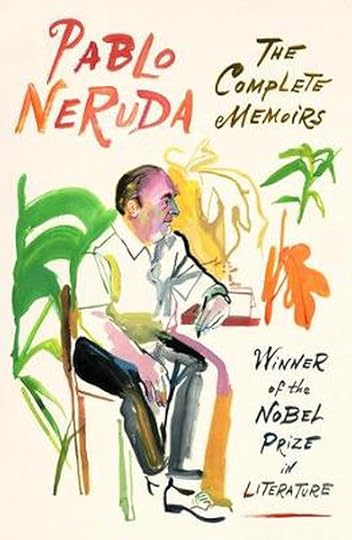 Pablo Neruda: The Complete Memoirs (2021)
Pablo Neruda: The Complete Memoirs (2021)The third book on the list takes me back to a vital part of my life: the four years I spent at Edinburgh University, working on my Doctorate on Versions of South America in English Literature from Aphra Behn to the Present Day.
Catchy title, huh? Agonising over the precise wording of the subtitle, the selection of authors, and (of course) of so curious a choice of subject-matter in the first place, were all the part of the general atmosphere of tension which accompanied my years in Graduate School.
Not that I didn't have fun, too. Edinburgh is a delightful city to live in, and it's a cultural treat just to walk around its streets. I got to know it pretty well - or so I thought - during those years. Even now I could navigate it blindfold.
As far as my studies go, I guess that the residue they've left behind is mostly just a love for Latin American literature in general. I picked up a reading knowledge of Spanish while I was there - enough for a nodding acquaintance with the likes of Jorge Luis Borges, Gabriel García Márquez, Mario Vargas Llosa, and Octavio Paz. Pablo Neruda, too. I was blown away by parts of his epic Canto General (1950).
This new edition of his memoirs probably adds little to the picture given by the posthumous Confieso que he vivido (1974), but then you never know: in any case, for a completist such as myself, it was a necessary purchase.
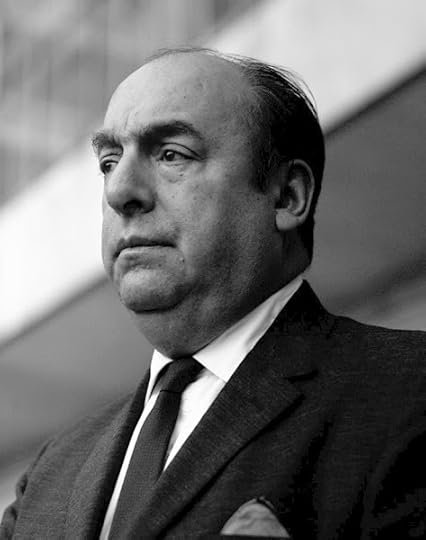 Pablo Neruda (1963)
Pablo Neruda (1963)Neftalí Ricardo Reyes Basoalto ['Pablo Neruda']
(1944-2001)
Poetry:
Neruda, Pablo. Twenty Love Poems and a Song of Despair. [‘20 Poemas de amor y una Canción desesperada’, 1924]. Trans. W. S. Merwin. 1969. Cape Editions. London: Jonathan Cape, 1971.
Neruda, Pablo. Residencia en la tierra. 1933, 1935. Ed. Hernán Loyola. Letras Hispanicas, 254. Madrid: Ediciones Cátedra, 1987.
Neruda, Pablo. Residence on Earth. [‘Residencia en la tierra’: I, 1933; II, 1935; III, 1947]. Trans. Donald D. Walsh. New York: New Directions Press, 1973.
Neruda, Pablo. Canto General. 1950. Biblioteca de Bolsillo. Barcelona; Editorial Seix-Barral, 1983.
Neruda, Pablo. Let the Rail Splitter Awake and Other Poems. 1947. Trans. 1950. Introduction by Christopher Perriam. Illustrated by José Venturelli. London: The Journeyman Press Ltd., 1988.
Neruda, Pablo. Canto General: Fiftieth Anniversary Edition. [‘Canto General’, 1950]. Trans. Jack Schmitt. Introduction by Roberto González Echevarría. Latin American Literature and culture, 7. 1991. A Centennial Book. Berkeley & Los Angeles: University of California Press, 2000.
Neruda, Pablo. Extravagaria: A Bilingual Edition. 1958. Trans. Alastair Reid. Cape Poetry Paperbacks. London: Jonathan Cape, 1972.
Neruda, Pablo. 100 Love Sonnets. [‘Cien sonetos de amor’, 1960]. Trans. Stephen Tapscott. Texas Pan American Series. 1986. Austin: University of Texas Press, 1995.
Neruda, Pablo. Fully Empowered: A Bilingual Edition. [‘Plenos poderes’, 1962]. Trans. Alastair Reid. A Condor Book. London: Souvenir Press, 1976.
Neruda, Pablo. Isla Negra: A Notebook. A Bilingual Edition. [‘Memorial de Isla Negra’, 1964]. Afterword by Enrico Mario Santí. Trans. Alastair Reid. 1981. A Condor Book. London: Souvenir Press, 1982.
Belitt, Ben, ed. & trans. Selected Poems of Pablo Neruda. Introduction by Luis Monguió. 1961. An Evergreen Book. New York: Grove Press, Inc., 1963.
Neruda, Pablo. Selected Poems: A Bi-lingual Edition. Ed. Nathaniel Tarn. Trans. Anthony Kerrigan, W. S. Merwin, Alastair Reid, & Nathaniel Tarn. 1970. Introduction by Jean Franco. Penguin Poets. Harmondsworth: Penguin, 1975.
Neruda, Pablo. The Book of Questions. [‘El libro de las preguntas’, 1974]. Trans. William O'Daly. 1991. A Kage-An Book. Port Townsend, Washington: Copper Canyon Press, 2001.
Neruda, Pablo. A Basic Anthology. Ed. Robert Pring-Mill. Dolphin Books. Oxford: The Dolphin Book Co. Ltd., 1975.
Neruda, Pablo. The Poetry of Pablo Neruda. Ed. Ilan Stavans. New York: Farrar, Straus and Giroux, 2003.
Plays:
Neruda, Pablo. Splendor and Death of Joaquín Murieta. [‘Fulgor y Muerte de Joaquín Murieta’, 1966]. Trans. Ben Belitt. 1972. Noonday Press. New York: Farrar, Straus and Giroux, 1973.
Prose:
Neruda, Pablo. Hacia la Ciudad Espléndida / Toward the Splendid City: Nobel Lecture. 1972. New York: Farrar, Straus & Giroux, 1974.
Neruda, Pablo. Memoirs. [‘Confieso que he vivido: Memorias’, 1974]. Trans. Hardie St. Martin. 1977. Harmondsworth: Penguin, 1981.
Neruda, Pablo. Passions and Impressions. [‘Para nacer he nacido’, 1978]. Ed. Matilde Neruda & Miguel Otero Silva. Trans. Margaret Sayers Peden. New York: Farrar, Straus & Giroux, Inc., 1983.
Neruda, Pablo. The Complete Memoirs: Expanded Edition. 2017. Trans. Hardie St. Martin & Adrian Nathan West. New York: Farrar, Straus and Giroux, 2021.
•
 Carol Angier: Speak, Silence: In Search of W. G. Sebald (2021)
Carol Angier: Speak, Silence: In Search of W. G. Sebald (2021)Which brings us to the last (though certainly not least) of these books: a recent biography of German writer W. G. Sebald by Carol Angier, author of equally impressive lives of Primo Levi and Jean Rhys.
Recently I had the experience of co-supervising a Doctoral student who was working on Sebald's novel Austerlitz, and it was very interesting to revisit it in detail, and to realise how large an influence it had had on my thinking, even though I'd only read it once, many years before.
When the Sikh writer Jaspreet Singh was staying with us a few years ago, too, I recall that the word 'Sebaldian' was a frequent feature of his conversation. He was trying to accomplish a shift to a similarly half-scholarly, half-personal mode of narration, and while his ostensible subject was the German minimalist Robert Walser, it was Sebald alone who seemed to offer a way forward.
My interest in German writing goes back long before I ever actually studied the language. In fact, a good deal of the motivation to do so came from my desire to get closer to authors such as Kafka or Rilke (or, later, Paul Celan) whom I could only dimly make out through the dark glass of overlapping translations. The bilingual Sebald probably got as close as a German-born writer could to assimilation into English culture, but even that apparent closeness can be misleading. He may have spent most of his adult life in Essex, but his themes remained profoundly German to the end.

W. G. Sebald
Winfried Georg Sebald
(1944-2001)
Poetry:
After Nature. 1988. Trans. Michael Hamburger. 2002. Harmondsworth: Penguin, 2003.For Years Now. Images by Tess Jaray. London: Short Books, 2001.[with Jan Peter Tripp] Unrecounted: 33 Texts and 33 Etchings. 2003. Trans. Michael Hamburger. Hamish Hamilton. London: Penguin, 2004.Across the Land and the Water: Selected Poems 1964-2001. 2008. Trans. Iain Galbraith. Hamish Hamilton. London: Penguin, 2011.
Prose:
Vertigo. 1990. Trans. Michael Hulse. London: Harvill Press, 1999.The Emigrants. 1992. Trans. Michael Hulse. 1996. London: Vintage, 2002.The Rings of Saturn. 1995. Trans. Michael Hulse. 1998. London: Vintage, 2002.A Place in the Country: On Gottfried Keller, Johann Peter Hebel, Robert Walser and Others. 1998. Trans. Jo Catling. Modern Library Classics. New York: Penguin Random House, 2013.On the Natural History of Destruction: With Essays on Alfred Andersch, Jean Améry and Peter Weiss. 1999. Trans. Anthea Bell. 2003. Harmondsworth: Penguin, 2004.Austerlitz. 2001. Trans. Anthea Bell. 2001. Harmondsworth: Penguin, 2002.Campo Santo. Ed. Sven Meyer. 2003. Trans. Anthea Bell. 2005. Harmondsworth: Penguin, 2006.
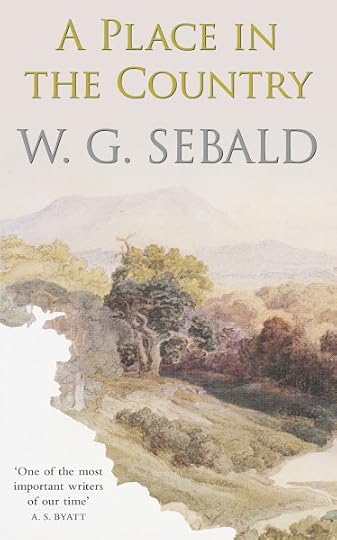 W. G. Sebald: A Place in the Country (2013)
W. G. Sebald: A Place in the Country (2013)•
So there you go. That's my roll call of volumes. I suppose that it'll do no harm to reveal that I also bought another book - with my own money - while I was in the shop. I hope it shows no disrespect to my colleagues to admit that alongside all these impressive-sounding 'show books', I also picked up a copy of the latest Neil Gaiman collection.
Strangely enough, that seems to be the one I find myself reaching for most often in the long summer afternoons:
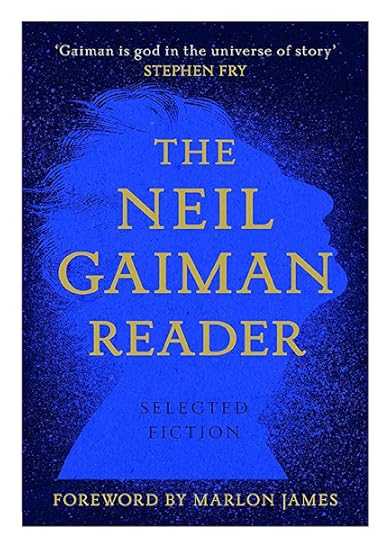 The Neil Gaiman Reader (2020)
The Neil Gaiman Reader (2020)•
Published on February 02, 2022 13:59
January 29, 2022
The Magician: Thomas Mann or Colm Tóibín?
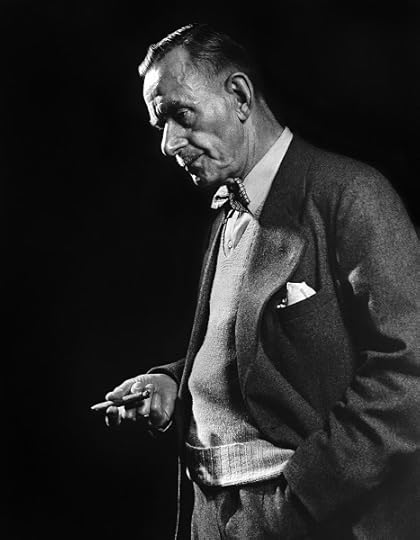 Thomas Mann (1946)
Thomas Mann (1946)I've spent a good deal of time these summer holidays rereading books by Thomas Mann. When I wasn't reading him, I was writing blogposts about him: on this site as well as my bibliography one. And when I wasn't reading or writing about him, I was ordering new items to fill (mostly imaginary) gaps in my Mann collection. I may have gone a bit over the top in that respect, in fact.
Even so, it came as a surprise when I saw how many of the people I mentioned him to already seemed to have a pretty comprehensive knowledge of the life and times of Thomas Mann. I hadn't realised his work was so much in the mainstream. Until the penny dropped. Their knowledge was not so much knowledge gleaned from reading Mann, as a reflection of the vogue of Colm Tóibín's recent biographical novel The Magician.
 Colm Tóibín: The Magician (2021)
Colm Tóibín: The Magician (2021)So what's wrong with that, you ask? Why, nothing at all. There's no reason why people shouldn't use biographies and even biographical novels to pick up information about authors they've never actually read. I've done it myself, and feel no compunction in admitting the fact.
It isn't quite the same as actually reading your way through Buddenbrooks or The Magic Mountain, mind you, but then who ever claimed it was? I guess any disquiet I feel over this - which I freely admit may be partially motivated by pique: there I was thinking I was something special because I'd ploughed through all these immense novels by some obscure old German, only to find that all his secrets were freely on sale in a far more convenient and readable form - is really based on a couple of other issues.
•
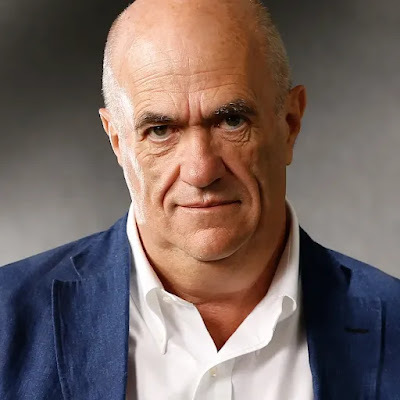 Murdo Macleod: Colm Tóibín (2018)
Murdo Macleod: Colm Tóibín (2018)My first concern can be outlined more or less as follows. The Magician is certainly a very readable novel, but is it a good novel? There seems to be a kind of concensus among those who haven't actually read Mann that it is a pretty good novel - even such terms as 'masterpiece' have been bandied about (with a subtle implication that Mann is rather lucky that one so gifted should take him up at this late date in time).
I, too, think it a good novel: or at any rate a very entertaining one, which is perhaps not quite the same thing. But then I'm rather a fan of bio-fiction. In my teens I greatly enjoyed reading fat tomes by the likes of Irving Stone which gave overviews of the lives of worthies like Vincent Van Gogh (Lust for Life) or Michelangelo (The Agony and the Ecstasy) long before I'd seen the fine films based on these books.
I've provided a list of Irving Stone's books at the bottom of this post for anyone who'd like to follow up on his work. His later books on the likes of Darwin and Freud were perhaps less successful than the earlier ones, but there's no harm in such works (I think), especially given the lack of pretentiousness which surrounds them.
That isn't quite the tone people take when they talk of Colm Tóibín. After all, he's only written two such novels so far - about, respectively, Mann and Henry James - but he does appear to have won quite a reputation as a serious modern author with his (many) other novels.
 Colm Tóibín: The Master (2004)
Colm Tóibín: The Master (2004)The Henry James novel, which I've also read, is interesting. Tóibín makes a concerted attempt to inhabit the style as well as the consciousness of James during one of the great crises of his life, the failure of his dramatic ambitions in the 1890s. It's a far more focussed, and perhaps more ambitious attempt to become the Master, than is his Mann.
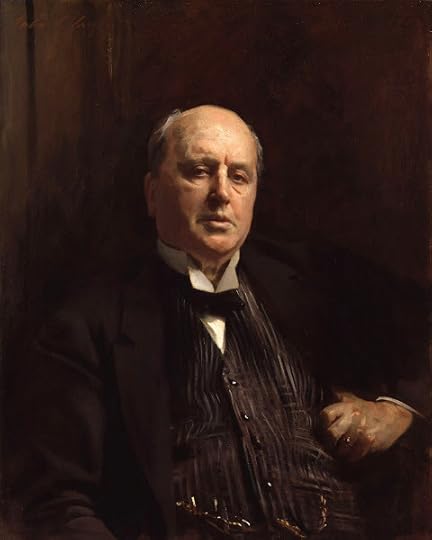 John Singer Sargent: Henry James (1913)
John Singer Sargent: Henry James (1913)On the other hand, the Mann book covers a whole half-century of his life and contacts in a series of neatly staged scenes, with an overarching theme. Such a task cannot have been easy. It might, in fact, have been easier to repeat his earlier success by doing a study of some particular aspect of his life in a prose-style pastiched from Death in Venice.
•
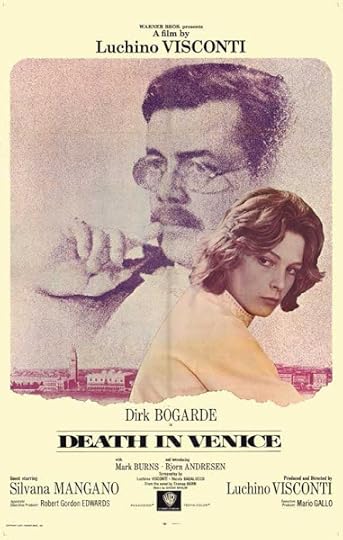 Luchino Visconti, dir.: Death in Venice (1971)
Luchino Visconti, dir.: Death in Venice (1971)Which brings me to my second point. No-one's ever really been in any serious doubt about the homoerotic inclinations of either Henry James or Thomas Mann. True, the former may well never had had sex at all in the conventional sense. He certainly formed no longterm relationships, and kept his private life a well-guarded secret.
Mann, by contrast, was a married man, with a complex and turbulent family life, and a crowd of children and siblings who all seem to have been in varying states of rebellion at various times. But no reader of his work can fail to notice his obsession with male beauty and passionate same-sex friendships. Even if you didn't, critics and biographers have pointed it out ad nauseam. But did he ever actually have sex with a man? No-one knows. There are reasons to doubt it.
Tóibín's Mann certainly does. He's a good deal gayer than any previous version of Mann - which is, again, Tóibín's prerogative. Nor does this decision exactly come as a surprise, given the tenor of his other work. His James, too, is far gayer than (say) Leon Edel's.
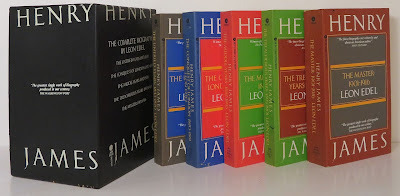 Leon Edel: Life of Henry James (5 vols: 1953-72)
Leon Edel: Life of Henry James (5 vols: 1953-72)All that is certainly well within the bounds of fair comment. But Tóibín's Mann is also far more of a domestic tyrant and family autocrat than seems to come through in his surviving letters and diary - not to mention a bit of a sneak when it comes to hiding his rather hole-in-corner affairs.
 Elizabeth Bishop
Elizabeth BishopThere's a very apposite letter by Thomas Hardy once applied by the poet Elizabeth Bishop to a not dissimilar case:
Here is a quotation from dear little Hardy which I copied out years ago ... It's from a letter written in 1911, referring to "an abuse which was said to have occurred - that of publishing details of a lately deceased man's life under the guise of a novel, with assurances of truth scattered in the newspapers." ...Which I guess is my point. 'If any statements in the dress of fiction are covertly hinted to be fact, all must be fact, and nothing else but fact, for obvious reasons.' In other words, interesting though many of Tóibín's conjectures about Mann certainly are, it's hard to know how to take them, exactly, without any real sense of the evidence they're based on.
"What should certainly be protested against, in cases where there is no authorisation, is the mixing of fact and fiction in unknown proportions. Infinite mischief would lie in that. If any statements in the dress of fiction are covertly hinted to be fact, all must be fact, and nothing else but fact, for obvious reasons. The power of getting lies believed about people through that channel after they are dead, by stirring in a few truths, is a horror to contemplate."
Of course this could be used as a way of dismissing biographical novels in general as a viable literary form, but I'm not sure that it's necessary to go quite so far as that. Tóibín's novel strikes me - from my own knowledge of Mann's writing and from reading at least some of the other biographies - as unreasonably critical of his subject's bona fides in matters of the heart. He leaves Mann's rather more patchy political record largely to one side.
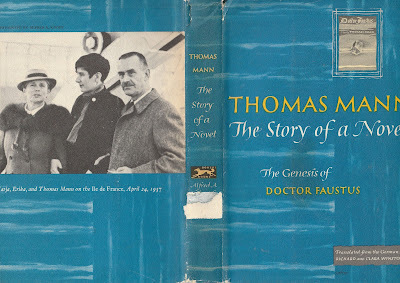 Thomas Mann: The Story of a Novel: The Genesis of Doctor Faustus (1962)
Thomas Mann: The Story of a Novel: The Genesis of Doctor Faustus (1962)But all this leaves me dying to know where Tóibín got his information from. Out of his own head? Or are there substantive archives of material which give a sound basis for at least some of these suppositions? I don't suppose we'll ever know, unless he decides to give us a 'writing-of' book along the lines of Mann's own Story of a Novel, about the composition of Doctor Faustus; or David Lodge's The Year of Henry James, which gives an account both of his own James bio-novel Author, Author, but also of the various others - including Tóibín's - which appeared in that same year, 2004.
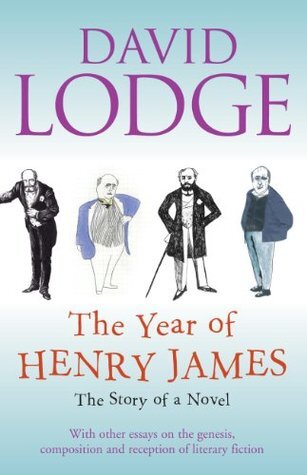 David Lodge: The Year of Henry James (2006)
David Lodge: The Year of Henry James (2006)•
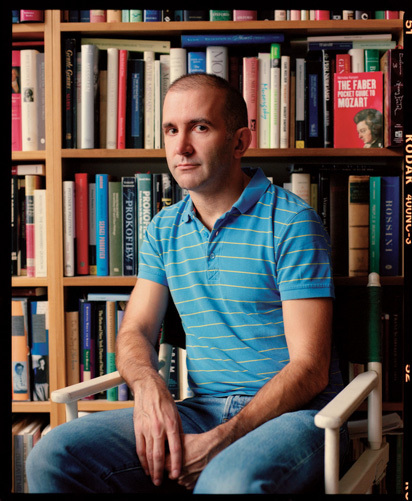 Alex Ross (2010)
Alex Ross (2010)That's about as far as I'd got when I chanced upon a recent New Yorker article called "Thomas Mann’s Brush with Darkness" by their learned Germanophile music critic, Alex Ross. This was the first passage that caught my eye:
Because I have been almost unhealthily obsessed with Mann’s writing since the age of eighteen, I may be ill-equipped to win over skeptics, but I know why I return to it year after year. Mann is, first, a supremely gifted storyteller, adept at the slow windup and the rapid turn of the screw. He is a solemn trickster who is never altogether earnest about anything, especially his own grand Goethean persona. At the heart of his labyrinth are scenes of emotional chaos, episodes of philosophical delirium, intimations of inhuman coldness. His politics traverse the twentieth-century spectrum, ricochetting from right to left. His sexuality is an exhibitionistic enigma. In life and work alike, his contradictions are pressed together like layers in metamorphic rock.Yep. What he said. I know what he means when he refers to his Mannophilia as an 'unhealthy obsession.' As a fellow-obsessive, I also understand the reservations he mentions below on the actual need for Tóibín’s project:
At first glance, Tóibín’s undertaking seems superfluous, since there are already a number of great novels about Thomas Mann, and they have the advantage of being by Thomas Mann. Few writers of fiction have so relentlessly incorporated their own experiences into their work. Hanno Buddenbrook, the proud, hurt boy who improvises Wagnerian fantasies on the piano; Tonio Kröger, the proud, hurt young writer who sacrifices his life for his art; Prince Klaus Heinrich, the hero of Royal Highness, who rigidly performs his duties; Gustav von Aschenbach, the hidebound literary celebrity who loses his mind to a boy on a Venice beach; Mut-em-enet, Potiphar’s wife, who falls desperately in love with the handsome Israelite Joseph; the confidence man Felix Krull, who fools people into thinking he is more impressive than he is; the Faustian composer Adrian Leverkühn, who is compared to “an abyss into which the feelings others expressed for him vanished soundlessly without a trace” — all are avatars of the author, sometimes channelling his letters and diaries.He, too, feels some misgivings about the clash between Tóibín's imaginings and the existing documents:
Tóibín doesn’t adhere exclusively to the biographical record, and his most decisive intervention comes in the realm of sex. In all likelihood, Mann never engaged in anything resembling what contemporary sensibilities would classify as gay sex. His diaries are reliable in factual matters and do not shy away from embarrassing details; we hear about erections, masturbation, nocturnal emissions. But he clearly has trouble even picturing male-on-male action, let alone participating in it. When, in 1950, he reads Gore Vidal’s The City and the Pillar, he asks himself, “How can one sleep with gentlemen?” The Mann of The Magician, by contrast, is allowed to have several same-sex encounters, though the details remain vague.In the end, much though he relishes certain passages and aperçus in Tóibín's novel:
Perhaps the real problem with The Magician, then, is that its author is not content to write a solid, unexciting Mann-and-water bio-novel in the Irving Stone mode, but isn't ready, either, to engage fully with the 'element of charlatanism' (Alex Ross's phrase) inherent in Mann's magpie methodology.
The Magician, deft and diligent as it is, ultimately diminishes the imperial strangeness of Mann’s nature. He comes across as a familiar, somewhat pitiable creature — a closeted man who occasionally gives in to his desires. The real Mann never gave in to his desires, but he also never really hid them. Gay themes surfaced in his writing almost from the start, and he made clear that his stories were autobiographical. When, in 1931, he received a newspaper questionnaire asking about his “first love,” he replied, in essence, “Read ‘Tonio Kröger.’ ” Likewise, of Death in Venice he wrote, “Nothing is invented.” Gay men saw the author as one of their own ...
As a result, The Magician ends up falling between two stools. It provides a fascinating (though selective) reading of Thomas Mann's life, but not really of his art. Tóibín's muse seems more comfortable with the stylistic conventions of Henry James's day than with the oncoming juggernaut of twentieth-century Modernism. Mann's basic techniques of irony and sampling were foundational for post-modern writers such as Nabokov or Pynchon. Mann, after all, 'had always been haunted by the sense of being an empty shell, a wooden soldier.'
All along, the dubiousness of genius had been one of his chief motifs. In “The Brother,” his essay on Hitler, he wrote that greatness was an aesthetic rather than an ethical phenomenon, meaning that Nazi exploitation of Goethe and Beethoven was less a betrayal of German artist-worship than a grotesque extension of it. The Magician’s finest trick was to dismantle the pretensions of genius while preserving his own lofty stature. The feat could be accomplished only once, and it happens definitively in Doctor Faustus, when Leverkühn’s explication of his valedictory cantata spirals into madness. An immaculately turned-out personification of bourgeois culture stages its destruction.So am I saying that you shouldn't read The Magician? Not at all. Tóibín is not alone nowadays in his return to the solider conventions of the realist novel. What I would advise, though, is tempering your reading of Tóibín with some study of Thomas Mann's own fiction: even just a few short stories if you don't have the patience for one of the novels. "Disorder and Early Sorrow" or "Mario and the Magician" will quickly convince you, if you needed the reminder, that we're not dealing here with an empty windbag but with a far subtler talent, a writer on a level with Chekhov or Joyce.
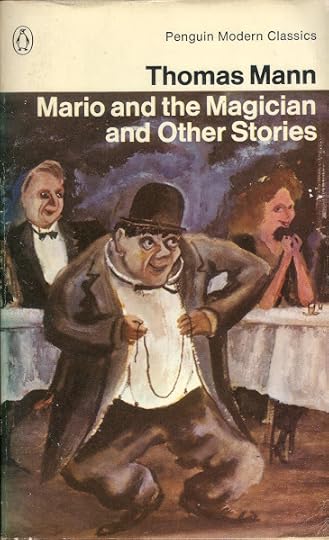 Thomas Mann: Mario and the Magician and Other Stories (1975)
Thomas Mann: Mario and the Magician and Other Stories (1975)•
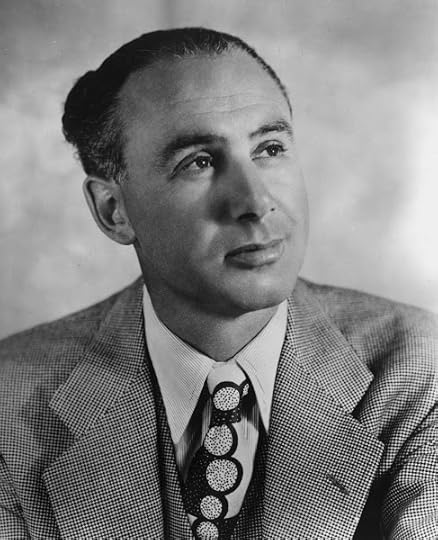
Getty Images / Hulton Archive: Irving Stone
Irving Tennenbaum ['Irving Stone']
(1903-1989)
Fiction:
Lust for Life: A Novel of Vincent Van Gogh. 1935. London: John Lane / The Bodley Head, 1940.Sailor on Horseback. [Jack London] (1938)Immortal Wife. [Jessie Benton Frémont] (1944)Adversary in the House. [Eugene V. Debs and his wife Kate] (1947)The Passionate Journey. [American artist John Noble] (1949)The President's Lady. [Andrew Jackson and Rachel Donelson Jackson] (1951)Love is Eternal. [Abraham Lincoln and Mary Todd] (1954)The Agony and the Ecstasy: A Biographical Novel of Michelangelo. 1961. Fontana Books. London: Collins Clear-Type Press, 1965.Those Who Love. [John Adams and Abigail Adams] (1965)The Passions of the Mind. [Sigmund Freud] (1971)The Greek Treasure. [Heinrich Schliemann] (1975)The Origin. [Charles Darwin] (1980)Depths of Glory. [Camille Pissarro] (1985)
Non-fiction:
Clarence Darrow for the Defence. 1941. London: The Bodley Head, 1949.They Also Ran. [Failed Presidential Candidates] (1943 / 1966)Earl Warren (1948)Men to Match My Mountains: The Monumental Saga of the Winning of America's Far West (1956)
Edited:
[with Jean Stone]. Dear Theo: The Autobiography of Vincent van Gogh. 1937. London: Cassell, 1973.[with Jean Stone]. I, Michelangelo, Sculptor: An Autobiography through Letters. Trans. Charles Speroni. 1963. Fontana Books. London: Collins Clear-Type Press, 1965.
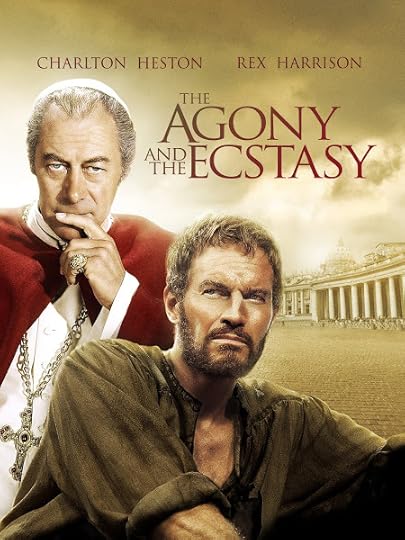 Carol Reed, dir.: The Agony and the Ecstasy (1965)
Carol Reed, dir.: The Agony and the Ecstasy (1965)
Published on January 29, 2022 13:23
January 10, 2022
The World of Charles Dickens
 The World of Charles Dickens
The World of Charles Dickens[photographs: Bronwyn Lloyd (2022)]
For Christmas 2021, Bronwyn gave me a 1,000-piece jigsaw puzzle called The World of Charles Dickens. It took us almost a week to complete it. Above you can see me putting in the very last piece. Below is an earlier stage of the process.
 Opening stages
Opening stagesMind you, I did have help. Zero was always ready to oblige with advice, and the fact that Bronwyn is holding the camera doesn't mean that she didn't do more than her fair share of wrestling with this fiendish conundrum, either.
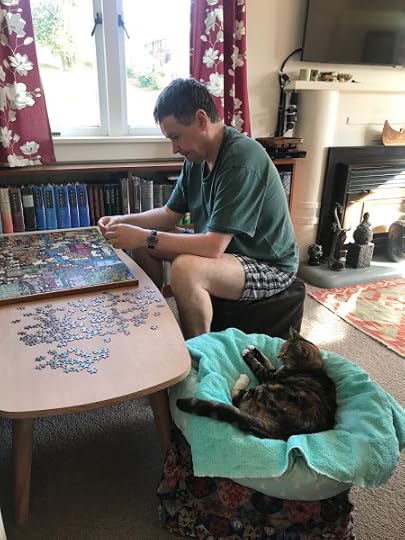 Jack & Zero
Jack & ZeroIt was a bit of a relief to get it done, to tell you the truth. I'd forgotten just how tricky it could be to complete a large jigsaw of this kind. My mother used to bring them home for us when we were kids. She volunteered in the local opportunity shop, and it went against her conscience to sell any donated goods which hadn't been thoroughly checked in advance. They almost invariably had a piece or two missing, which has left me with an abiding syndrome about the final stages of assembly.
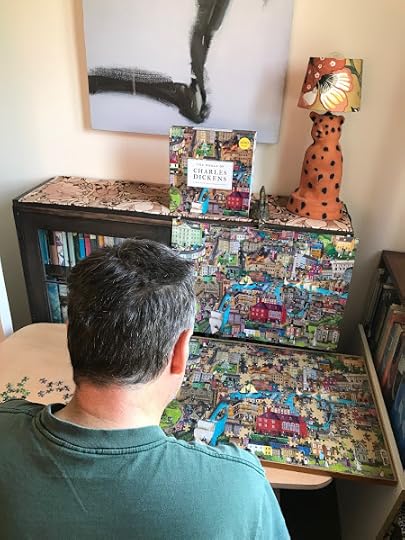 The field of battle
The field of battleThis particular puzzle - fresh out of the box - did prove to be complete. That hadn't stopped me from anticipating the worst. Bronwyn is of a sunnier disposition, fortunately.
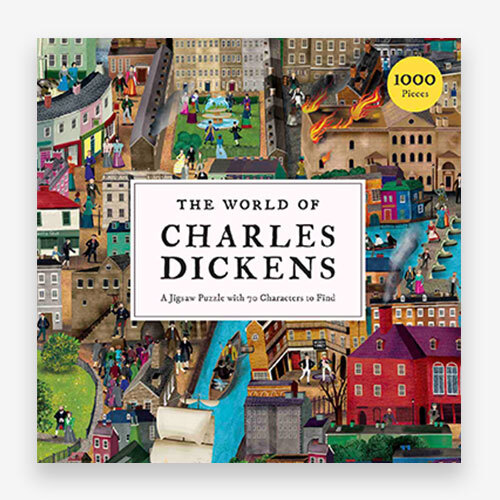 Barry Falls: The World of Charles Dickens. Ed. John Mullan (2021)
Barry Falls: The World of Charles Dickens. Ed. John Mullan (2021)A great many of the characters included in the design were obvious enough: Mr. Pickwick and Sam Weller (The Pickwick Papers); Lizzie Hexham rowing her father down the Thames (Our Mutual Friend); the ghosts of Christmas Past, Present and Future (A Christmas Carol); Jo the crossing-sweeper being accosted by Lady Dedlock (Bleak House) ...
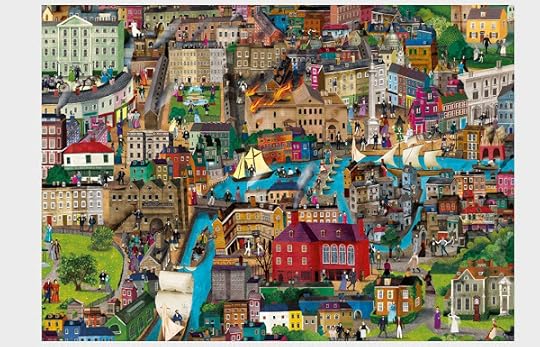 The World of Charles Dickens
The World of Charles DickensA great many of the others I'd never have guessed, though. I did spot the rowboat with Pip, Herbert Pocket, and Magwitch the convict from Great Expectations, but Estella and Miss Havisham were less clear to me. A great many of the 70-odd characters included just looked like typical Victorians in breeches and bonnets. But an immense amount of ingenuity had been spent on the layout and colouring of the picture - so many windows and roofs to identify! Not to mention fields, bushes and lawns ... In fact, if it hadn't been for the Thames running through it, the puzzle might well have proved insuperable.
•
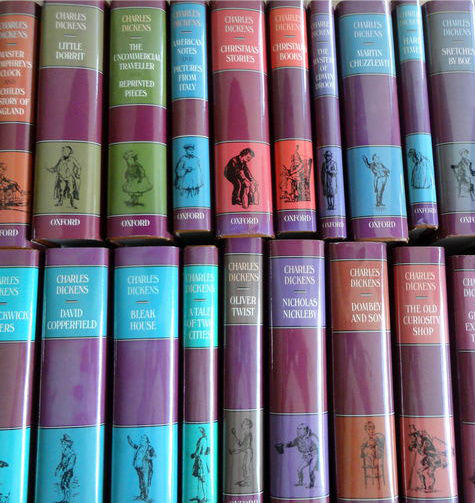 The Oxford Illustrated Dickens (21 volumes: 1987)
The Oxford Illustrated Dickens (21 volumes: 1987)It did get me thinking about Dickens in general. In an earlier post about my Grandmother and her book collection, I mentioned the 22-volume set of his works which she and my grandfather painstakingly saved up for in the 1930s, and which has eventually made its circuitous way to my own bookshelves.
I can't claim to have read all of it. I have read his fourteen full-length novels (as well as the unfinished Edwin Drood), and - at one time or another - most of the other miscellaneous fiction he published. But some of the compilations of journalism and other occasional pieces (Sketches by Boz, Reprinted Pieces, and The Uncommercial Traveller, for instance) have hitherto evaded my quest for completeness.
Which is one reason I decided that a good project for Summer might be to remedy that. I recently read a New Yorker article on just such an attempt, by a writer called Brad Leithauser. I'd note, though, that he wrote it while he was "nearly finished [my emphasis]; only The Old Curiosity Shop and The Mystery of Edwin Drood remain."
Given that this admission shows that he hadn't been reading chronologically - which is, in my opinion, the only way of gleaning much profit from a trawl through an author's collected works - and given his almost exclusive focus on David Copperfield at the expense of Dicken's obscurer fiction, I must confess to a certain scepticism about the thoroughness of Leithauser's coverage - not to mention his conclusion that "my favorite Dickens is mostly the world’s favorite Dickens."
His choice of three books - respectively, A Christmas Carol, A Tale of Two Cities, and the above-mentioned David Copperfield - as "all but flawless in their chosen genres" is, I suppose, fair enough. But is it just a perverse taste for the recondite which makes me find that a little disappointing? What of the baroque splendours of Our Mutual Friend? What of the exuberant frenzies of Nicholas Nickleby or Pickwick? What of such proto-M. R. James-like, pared-back ghost stories as "The Signalman" or "The Trial for Murder"?
Dickens's work as a whole seems to constitute - for me at least - a curious combination of social realism and gothic extremity. His actual political opinions had a reactionary tinge which make them less than palatable today - but his emotional engagement with the realities of poverty and want are still powerful and moving even at this distance in time.
He was horrible to his wife, duplicitous about his mistress, dictatorial to his children, and intensely demanding of his friends. He was simultaneously tirelessly productive, endlessly energetic, and immensely self-destructive. It's not so much surprising that he burned out at the early age of 58 as that he was able to last that long in the first place!
One of the few good reasons I've ever heard for wanting there to be a next world, though, is the opportunity to read the conclusion to the unfinished Mystery of Edwin Drood, which I presume that he will have cranked around to completing by now.
•
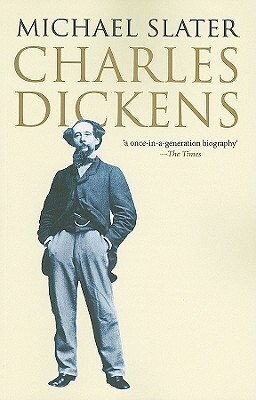 Michael Slater: Charles Dickens (2007)
Michael Slater: Charles Dickens (2007)There are many biographies. At times it can seem as if the majority even of bookish people are far less keen on reading him than reading about him. The original Victorian biography by John Forster is still an essential source, and I must confess, too, to a soft spot for Edgar Johnson's exhaustive two-volume account of 1952.
I'm not myself a great admirer of Peter Ackroyd's strange biography-with-fictional-interludes, though it certainly has its moments. A far more significant contribution to scholarship came from Claire Tomalin's The Invisible Woman: a biography of Dickens's mistress Nelly Ternan, which appeared in the same year, 1990.
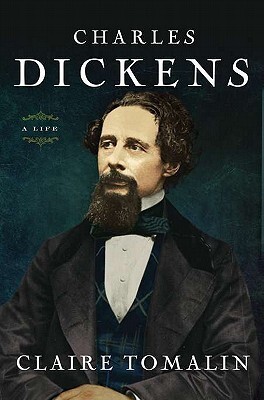 Claire Tomalin: Charles Dickens: A Life (2011)
Claire Tomalin: Charles Dickens: A Life (2011)She's followed this up since with a full-dress biography of Dickens, perhaps meant as a riposte to Michael Slater's, also pictured above. Slater is, after all, a bit of a Ternan-sceptic, witness his book The Great Charles Dickens Scandal (2012), which takes issue with many of Tomalin's points.
In any case, whatever your views on this or other contentious points, you won't find too much difficulty in finding material to your taste in the vast untidy field of Dickens scholarship. Even the famously critical F. R. Leavis finally decided to admit him to the fold of the 'great tradition' in English fiction.
•
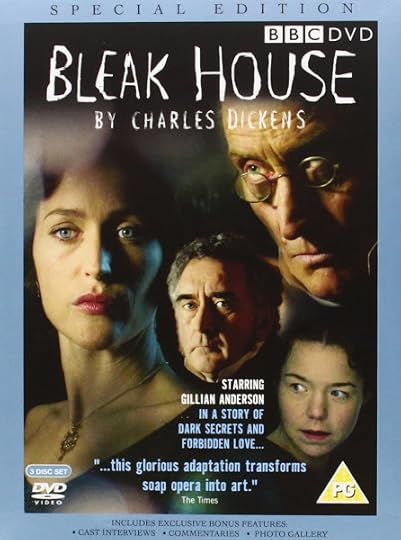 Andrew Davies, writ.: Bleak House (2005)
Andrew Davies, writ.: Bleak House (2005)There was a bit of mini Dickens revival in 2005, with Andrew Davies' magisterial TV adaptation of Bleak House. This was a far less mannered and parodic take on the dramatic intensity of Dickens' later novels than had hitherto been seen on British TV.
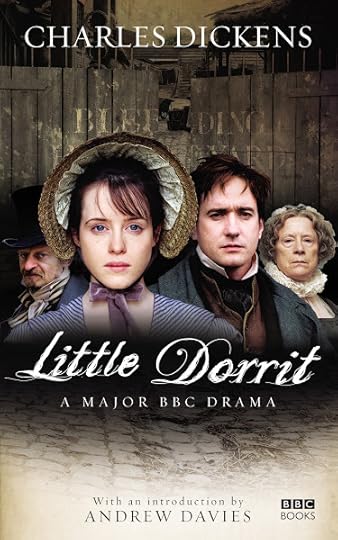 Andrew Davies, writ.: Little Dorrit (2008)
Andrew Davies, writ.: Little Dorrit (2008)Davies followed it up with an equally brilliant and star-studded adaptation of Little Dorrit a couple of years later, with a breathtaking performance in the title role by a young Claire Foy. This also had the not unfortunate by-product of supplanting Christine Edzard's ambitious but not entirely successful double-film version of 1987.
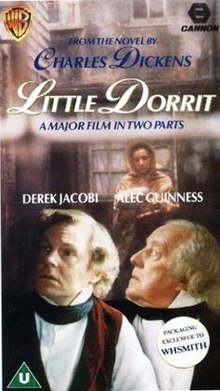 Christine Edzard, dir. & writ.: Little Dorrit (1987)
Christine Edzard, dir. & writ.: Little Dorrit (1987)At the time this seemed like the best one could expect when it came to putting one of Dickens' most complex novels on screen. Davies seemingly effortlessly surpassed it, though there were certainly some memorable moments in the earlier version.
I've provided a list, below, of the Dickens films and TV serials I happen to have to hand on DVD. I guess, for me, the highpoints would have to be David Lean's Great Expectations (1946) and Oliver Twist (1948). I also enjoyed the Dirk Bogarde version of A Tale of Two Cities (1958), though, as well as some of the classic BBC adaptations of such novels as The Pickwick Papers (1985), Martin Chuzzlewit (1994) and Our Mutual Friend (1998).
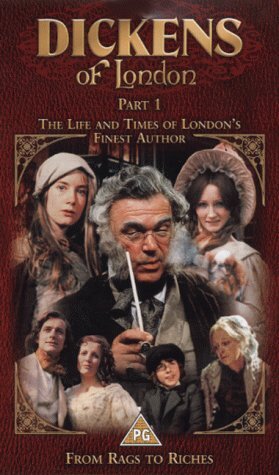 Marc Miller & Wolf Mankowitz, writ.: Dickens of London (1976-77)
Marc Miller & Wolf Mankowitz, writ.: Dickens of London (1976-77)Another TV show which had a huge influence on me in my teens was the 13-part Dickens of London. Roy Dotrice made a valiant effort to play both the young and older Dickens, but the sheer ambition of the attempt still seems astonishing now. I was very glad to have the chance to see it again. The episode where Dickens meets Edgar Allan Poe, and reenacts with him a strange version of "The Facts in the Case of M. Valdemar", made a huge impression on me at the time.
•
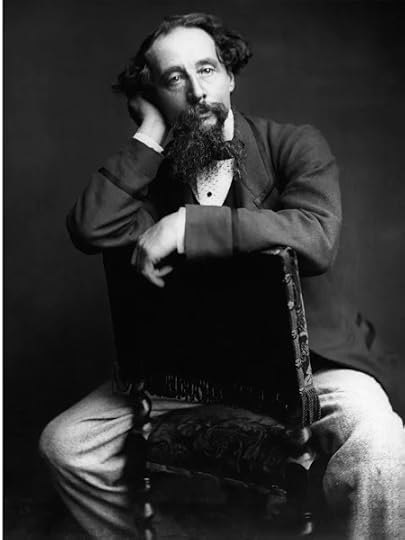 Charles Dickens
Charles DickensCharles John Huffam Dickens ['Boz']
(1812-1870)
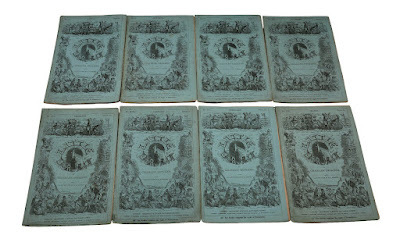 Charles Dickens: Little Dorrit (1857)
Charles Dickens: Little Dorrit (1857)Collected Editions:
The Works of Charles Dickens. 22 vols. Dunedin & Wellington: A. H. Reed, 1931:Sketches by Boz: Illustrative of Everyday Life and Everyday People (1836-39)The Posthumous Papers of the Pickwick Club (1836-37)Oliver Twist, or The Parish Boy’s Progress (1837-39)The Life and Adventures of Nicholas Nickleby (1839)The Old Curiosity Shop (1841)Barnaby Rudge: A Tale of the Riots of ‘80 (1841)American Notes & Pictures from Italy (1842 & 1846)The Life and Adventures of Martin Chuzzlewit (1843-44)Christmas Books: A Christmas Carol / The Chimes / The Cricket on the Hearth / The Battle of Life / The Haunted Man (1843, 1844, 1845, 1846 & 1848)Dealings with the Firm of Dombey & Son: Wholesale, Retail, and for Exportation (1848)The Personal History of David Copperfield (1850)A Child’s History of England (1851-53)Bleak House (1853)Hard Times / Hunted Down / Holiday Romance / George Silverman's Explanation (1854 & 1867)Little Dorrit (1857)Reprinted Pieces: Also The Lamplighter; To Be Read at Dusk; Sunday Under Three Heads (1858)A Tale of Two Cities (1859)Great Expectations (1860-61)The Uncommercial Traveller (1860-69)Our Mutual Friend (1864-65)The Mystery of Edwin Drood & Master Humphrey’s Clock (1870 & 1840)Christmas Stories: From “Household Words” and “All The Year Round” (1874)
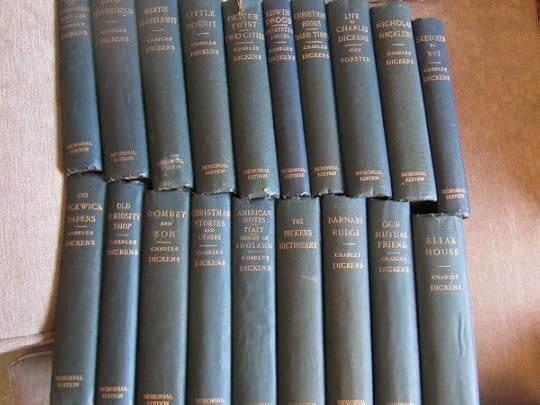 Charles Dickens: The 'Daily News' Memorial Edition (1900-1910)
Charles Dickens: The 'Daily News' Memorial Edition (1900-1910)The 'Daily News' Memorial Edition. 19 vols. London: Chapman & Hall, Ld, n.d. [c.1900-1910]:Sketches by Boz: Illustrative of Everyday Life and Everyday People. Illustrated by George Cruickshank (1836-39)The Posthumous Papers of the Pickwick Club. Illustrated by Phiz et al (1836-37)[Oliver Twist / A Tale of Two Cities (1837-39 & 1859)][The Life and Adventures of Nicholas Nickleby (1839)][The Old Curiosity Shop (1841)]Barnaby Rudge: A Tale of the Riots of ‘80. Illustrated (1841)American Notes / Pictures from Italy / A Child’s History of England (1842, 1846 & 1851-53)The Life and Adventures of Martin Chuzzlewit. Illustrated (1843-44)Christmas Books: A Christmas Carol / The Chimes / The Cricket on the Hearth / The Battle of Life / The Haunted Man & Hard Times. Illustrated (1843, 1844, 1845, 1846, 1848 & 1853)Dealings with the Firm of Dombey & Son: Wholesale, Retail, and for Exportation. Illustrated (1848)The Personal History of David Copperfield. Illustrated (1850)[Bleak House (1853)]Little Dorrit. Illustrated by Phiz (1857)[Great Expectations / The Uncommercial Traveller (1860-61, 1860-69)]Our Mutual Friend. Illustrated by Marcus Stone (1864-65)The Mystery of Edwin Drood & Reprinted Pieces. Illustrated (1870 & 1858 40)Christmas Stories: From “Household Words” and “All The Year Round” & Other Stories: Master Humphrey’s Clock / Hunted Down / Holiday Romance / George Silverman's Explanation. Illustrated (1874, 1840, 1867)[The Dickens Dictionary, by Gilbert A. Pierce & William A. Wheeler (1880)][Life of Charles Dickens, by John Forster (1872-74)]
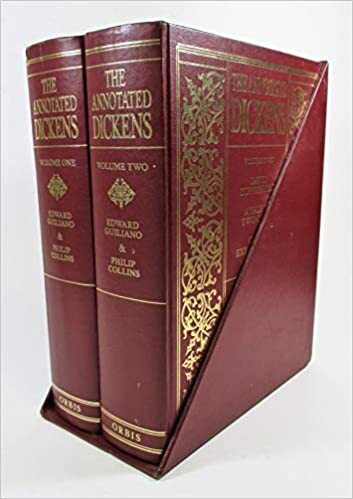 The Annotated Dickens (2 vols, 1986)
The Annotated Dickens (2 vols, 1986)Dickens, Charles. The Annotated Dickens. Ed. Edward Giuliano & Philip Collins. 2 vols. New York: Clarkson N. Potter, 1986.The Pickwick Papers (1836-37); Oliver Twist (1837-39); A Christmas Carol (1843); Hard Times (1854)David Copperfield (1849-50); A Tale of Two Cities (1859); Great Expectations (1860-61)
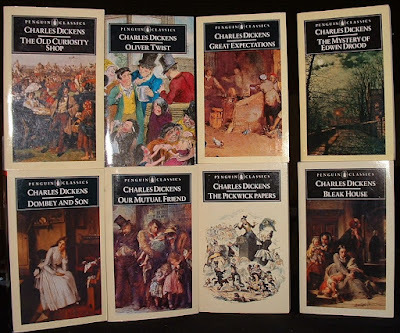 Charles Dickens: Penguin Classics
Charles Dickens: Penguin ClassicsNovels:
The Posthumous Papers of the Pickwick Club. 1836-37. Ed. Robert L. Patten. Penguin English Library. 1972. Harmondsworth: Penguin, 1978.Oliver Twist. 1837-39. Ed. Peter Fairclough. Introduction by Angus Wilson. Penguin English Library. 1966. Harmondsworth: Penguin, 1979.Oliver Twist. 1837-39. Ed. Kathleen Tillotson. 1966. The Clarendon Dickens. Ed. John Butt & Kathleen Tillotson. Oxford: Clarendon Press, 1974. Nicholas Nickleby. 1839. Ed. Michael Slater. Penguin English Library. 1978. Harmondsworth: Penguin, 1982.The Old Curiosity Shop. 1841. Ed. Angus Easson. Introduction by Malcolm Andrews. Penguin English Library. 1972. Harmondsworth: Penguin, 1978.Barnaby Rudge. 1841. Ed. Gordon Spence. Penguin English Library. Harmondsworth: Penguin, 1973.Martin Chuzzlewit. 1843-44. Ed. P. N. Furbank. Penguin English Library. 1968. Harmondsworth: Penguin, 1982.Dombey and Son. 1848. Ed. Peter Fairclough. Introduction by Raymond Williams. Penguin English Library. Harmondsworth: Penguin, 1970.The Personal History of David Copperfield. 1850. Ed. Trevor Blount. Penguin Classics. 1966. Harmondsworth: Penguin, 1985.Bleak House. 1853. Ed. Norman Page. Introduction by J. Hillis Miller. Penguin English Library. 1971. Harmondsworth: Penguin, 1983.Hard Times for These Times. 1854. Ed. David Craig. Penguin Classics. 1969. Harmondsworth: Penguin, 1987.Little Dorrit. 1857. Ed. John Holloway. Penguin Classics. 1967. Harmondsworth: Penguin, 1985.A Tale of Two Cities. 1859. Ed. George Woodcock. Penguin English Library. 1970. Harmondsworth: Penguin, 1982.Great Expectations. 1861. Ed. Angus Calder. Penguin English Library. 1965. Harmondsworth: Penguin, 1975.Great Expectations. 1860-61. Illustrated by Marcus Stone. The Works of Charles Dickens, National Edition, Volume XXIX. London: Chapman & Hall Ltd., 1907. Our Mutual Friend. 1864-65. Ed. Stephen Gill. Penguin English Library. 1971. Harmondsworth: Penguin, 1984.The Mystery of Edwin Drood. 1870. Ed. Arthur J. Cox. Introduction by Angus Wilson. Penguin English Library. 1974. Harmondsworth: Penguin, 1976.
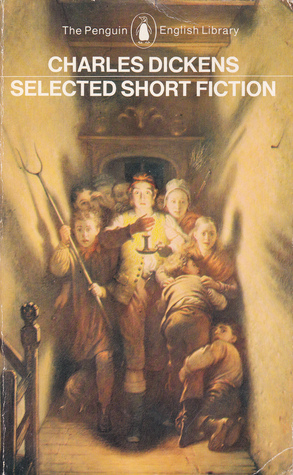 Charles Dickens: Selected Short Fiction (1976)
Charles Dickens: Selected Short Fiction (1976)Shorter fiction:
The Christmas Books. Vol. 1: A Christmas Carol / The Chimes. 1843 & 1844. Ed. Michael Slater. Penguin English Library. 1971. Harmondsworth: Penguin, 1978.The Christmas Books. Vol. 2: The Cricket on the Hearth / The Battle of Life / The Haunted Man. 1845, 1846 & 1848. Ed. Michael Slater. Penguin Classics. 1971. Harmondsworth: Penguin, 1985.The Annotated Christmas Carol: A Christmas Carol in Prose. 1843. Ed. Michael Patrick Hearn. Illustrations by John Leech. New York & London: W. W. Norton, 2004.[with Wilkie Collins] The Wreck of the Golden Mary. 1856. Illustrated by John Dugan. Venture Library. London: Methuen & Co. Ltd., 1961.Selected Short Fiction. Ed. Deborah A. Thomas. Penguin English Library. Harmondsworth: Penguin, 1976.Readings from Dickens. Ed. Emlyn Williams. London: The Folio Society, 1953.Sikes and Nancy and Other Public Readings. Ed. Philip Collins. 1975. The World’s Classics. Oxford: Oxford University Press, 1983.
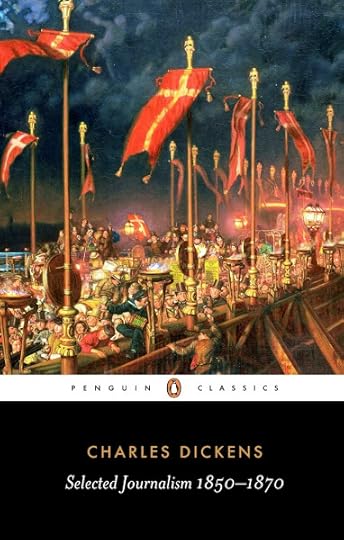 Charles Dickens: Selected Journalism: 1850-1870 (1997)
Charles Dickens: Selected Journalism: 1850-1870 (1997)Non-fiction:
Sketches by Boz. 1839. Ed. Dennis Walder. Penguin Classics. Harmondsworth: Penguin, 1995.American Notes. 1842. Ed. Patricia Ingham. 2000. Rev. ed. Penguin Classics. Harmondsworth: Penguin, 2004.Pictures from Italy. 1846. Ed. Kate Flint. Penguin Classics. Harmondsworth: Penguin, 1998.The Life of Our Lord: Written Expressly for His Children by Charles Dicken. 1849. Foreword by Lady Dickens. 1934. London: Associated Newspapers Ltd., 1934.Miscellaneous Papers. 1912. The Works of Charles Dickens: Complete Works. Centennial Edition. 2 vols. Geneva: Heron Books, 1970.Selected Journalism 1850-1870. Ed. David Pascoe. Penguin Classics. Harmondsworth: Penguin, 1997.My Early Times. Ed. Peter Rowland. London: The Folio Society, 1988.The Dent Uniform Edition of Dickens' Journalism. Ed. Michael Slater. 4 vols. London: J. M. Dent, 1994-2000.Dickens’ Journalism: Sketches by Boz and Other Early Papers, 1833-39. Illustrations by George Cruikshank et al. 1994. Phoenix Giants. London: The Orion Publishing Group, 1996.Dickens’ Journalism: ‘The Amusements of the People’ and Other Papers: Reports, Essays and Reviews, 1834-51. 1996. London: J. M. Dent, 1997.Dickens’ Journalism: ‘Gone Astray’ and Other Papers from Household Words, 1851-59. The Orion Publishing Group Ltd. London: J. M. Dent, 1999.[with John Drew] Dickens’ Journalism: The Uncommercial Traveller and Other Papers, 1859-1870. The Orion Publishing Group Ltd. London: J. M. Dent, 2000.
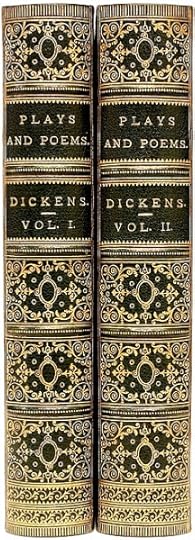 Charles Dickens: The Plays and Poems (2 vols, 1882)
Charles Dickens: The Plays and Poems (2 vols, 1882)Poetry & Drama:
Dickens, Charles. Complete Plays and Selected Poems. 1970. London: Vision Press Ltd., 1974.
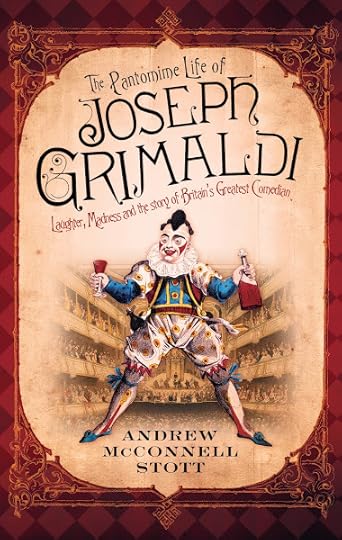 Andrew McConnell Stott: The Pantomime Life of Joseph Grimaldi (2009)
Andrew McConnell Stott: The Pantomime Life of Joseph Grimaldi (2009)Edited:
Memoirs of Joseph Grimaldi. 1838. Illustrated by George Cruikshank. London: George Routledge and Sons, n.d. [c.1879].Stott, Andrew McConnell. The Pantomime Life of Joseph Grimaldi. 2009. Edinburgh: Canongate Books Ltd., 2010.
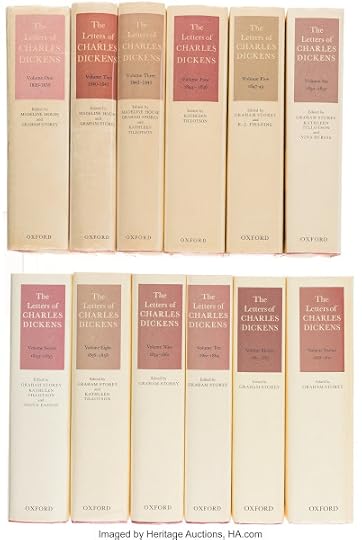 The Pilgrim Edition of the Letters of Charles Dickens (12 vols, 1965-2002)
The Pilgrim Edition of the Letters of Charles Dickens (12 vols, 1965-2002)Letters:
The Letters: 1833-1870. Ed. His Sister-in-Law & His Eldest Daughter. 1893. London: Macmillan & Co. Ltd., 1903.The Letters of Charles Dickens: 1820-1839. Ed. Madeline House & Graham Storey. The Pilgrim Edition. Vol. 1 of 12. Oxford: The Clarendon Press, 1965.
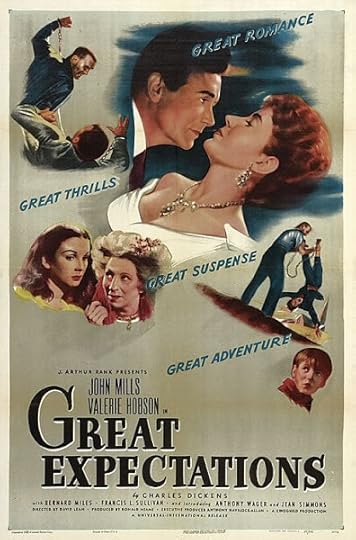 David Lean, dir.: Great Expectations (1946)
David Lean, dir.: Great Expectations (1946)Dramatisations:
The Charles Dickens Collection (2012). 3-DVD set:Great Expectations, dir. David Lean, writ. David Lean, Anthony Havelock-Allan, Cecil McGivern, Ronald Neame & Kay Walsh – with John Mills, Bernard Miles, Finlay Currie, Jean Simmons, Martita Hunt, Alec Guinness, Valerie Hobson – (UK, 1946)Oliver Twist, dir. David Lean, writ. David Lean & Stanley Haynes – with Kay Walsh, John Howard Davies, Alec Guinness – (UK, 1948)A Tale of Two Cities, dir. Ralph Thomas, writ. T. E. B. Clarke – with Dirk Bogarde, Dorothy Tutin – (UK, 1958)Dickens of London: 13-part miniseries, created by Wolf Mankowitz & Marc Miller – with Roy Dotrice, Simon Bell, Gene Foad, Lois Baxter, Christine McKenna – (UK, 1976). 4-DVD set.The Charles Dickens Collection: 8 Classic BBC Adaptations. 12-DVD set:The Pickwick Papers – with Nigel Stock, Clive Swift, Patrick Malahide – (UK, 1985)Oliver Twist – with Lysette Antony, Ben Rodska, Miriam Margolyes, Eric Porter, Michael Attwell – (UK, 1985)A Christmas Carol – with Michael Hordern, John Le Mesurier, Bernard Lee – (UK, 1977)Martin Chuzzlewit – with Paul Scofield, John Mills, Tom Wilkinson, Pete Postlethwaite, Julia Sawlaha, Maggie Steed – (UK, 1994)David Copperfield – with Daniel Radcliffe, Bob Hoskins, Maggie Smith, Nicholas Lyndhurst, Cherie Lunghi, Ian McKellan, Ciaran McMenamin – (UK, 1999)A Tale of Two Cities – with Paul Shelley, Nigel Stock, Sally Osborne – (UK, 1980)Great Expectations – with Ioan Gruffudd, Charlotte Rampling, Bernard Hill – (UK, 1999)Our Mutual Friend – with Paul McGann, Keeley Hawes, Anna Friel, Peter Vaughan, Timothy Spall – (UK, 1998)Charles Dickens: 200th Anniversary Collection (2012). 9-DVD set:Bleak House, dir. Justin Chadwick & Susanna White, writ. Andrew Davies – with Denis Lawson, Anna Maxwell Martin, Patrick Kennedy, Carey Mulligan, Gillian Anderson, Charles Dance, Alun Armstrong, Timothy West, Burn Gorman, Harry Eden – (UK, 2005)Oliver Twist, dir. Coky Giedroyc, writ. Sarah Phelps – with William Miller, Adam Arnold, Tom Hardy, Timothy Spall, Julian Rhind Tutt – (UK, 2007)Little Dorrit, dir. Adam Smith, Dearbhla Walsh, & Diarmuid Lawrence, writ. Andrew Davies – with Claire Foy, Matthew Macfadyen, Tom Courtenay, Judy Parfitt – (UK, 2008)Great Expectations, dir. Brian Kirk, writ. Sarah Phelps – with Ray Winstone, Gillian Anderson, Douglas Booth, Vanessa Kirby, David Suchet – (UK, 2011)The Man Who Invented Christmas, dir. Bharat Nalluri, writ. Susan Coyne (based on the book by Les Standiford) – with Dan Stevens, Christopher Plummer, Jonathan Pryce – (Ireland / Canada, 2017).
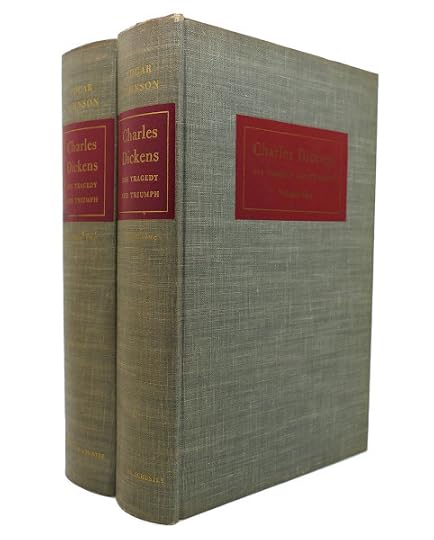 Edgar Johnson: Charles Dickens: His Tragedy and Triumph (2 vols, 1952)
Edgar Johnson: Charles Dickens: His Tragedy and Triumph (2 vols, 1952)Secondary:
Ackroyd, Peter. Dickens' London: An Imaginative Vision. London: Headline Book Publishing PLC., 1987.Ackroyd, Peter. Dickens. London: Sinclair-Stevenson Ltd., 1990.Butt, John, & Kathleen Tillotson. Dickens at Work. 1957. London & New York: Methuen & Co. Ltd., 1982.Chesterton, G. K. Charles Dickens. 1906. London: Methuen & Co. Ltd., 1919.Chesterton, G. K. Criticisms and Appreciations of Charles Dickens’ Works. London: J. M. Dent & Sons Ltd. / New York: E. P. Dutton & Co. Inc., 1911.Forster, John. The Life of Charles Dickens. With Thirty-Two Illustrations. 1872-74. London: Humphrey Milford / Oxford University Press, n.d.Hardwick, Michael & Mollie. The Charles Dickens Encyclopedia. 1973. An Omega Book. London: Futura Publications Limited, 1976.Hibbert, Christopher. The Making of Charles Dickens. 1967. Harmondsworth: Penguin, 1983.House, Humphry. The Dickens World. 1941. London: Geoffrey Cumberlege / Oxford University Press, 1950.Johnson, Edgar. Charles Dickens. His Tragedy and Triumph. 2 vols. New York: Simon and Schuster Inc., 1952.Pope-Hennessy, Una. Charles Dickens: 1812-1870. 1945. London: The Reprint Society, 1947.Slater, Michael. Dickens and Women. 1983. London: J. M. Dent & Sons Ltd., 1986.Slater, Michael. The Great Charles Dickens Scandal. 2012. New Haven, Connecticut: Yale University Press, 2014.Tillotson, Kathleen. 'Dombey and Son.' In Novels of the Eighteen-Forties. 1954. Oxford Paperbacks. London: Oxford University Press, 1961.Tomalin, Claire. The Invisible Woman: The Story of Nelly Ternan and Charles Dickens. 1990. London: Penguin, 1991.Wilson, Angus. The World of Charles Dickens. 1970. Harmondsworth: Penguin, 1972.
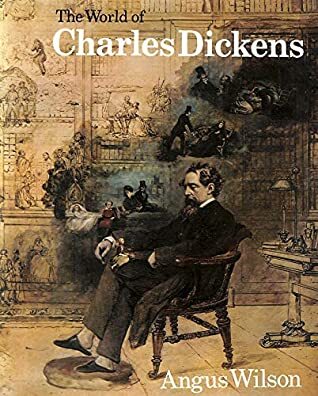 Angus Wilson: The World of Charles Dickens (1970)
Angus Wilson: The World of Charles Dickens (1970)•
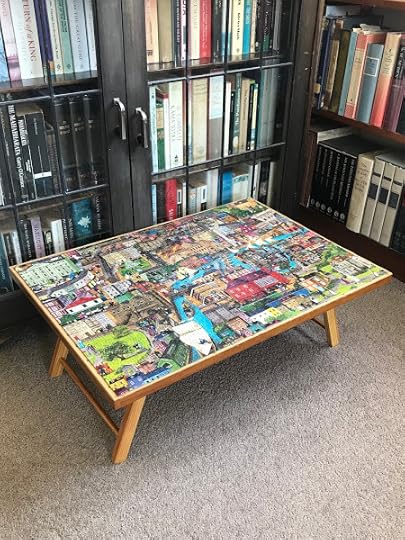 The World of Charles Dickens
The World of Charles Dickens[photograph: Bronwyn Lloyd (2022)]
Published on January 10, 2022 12:15



